INNOVATING WITH INTENT



















































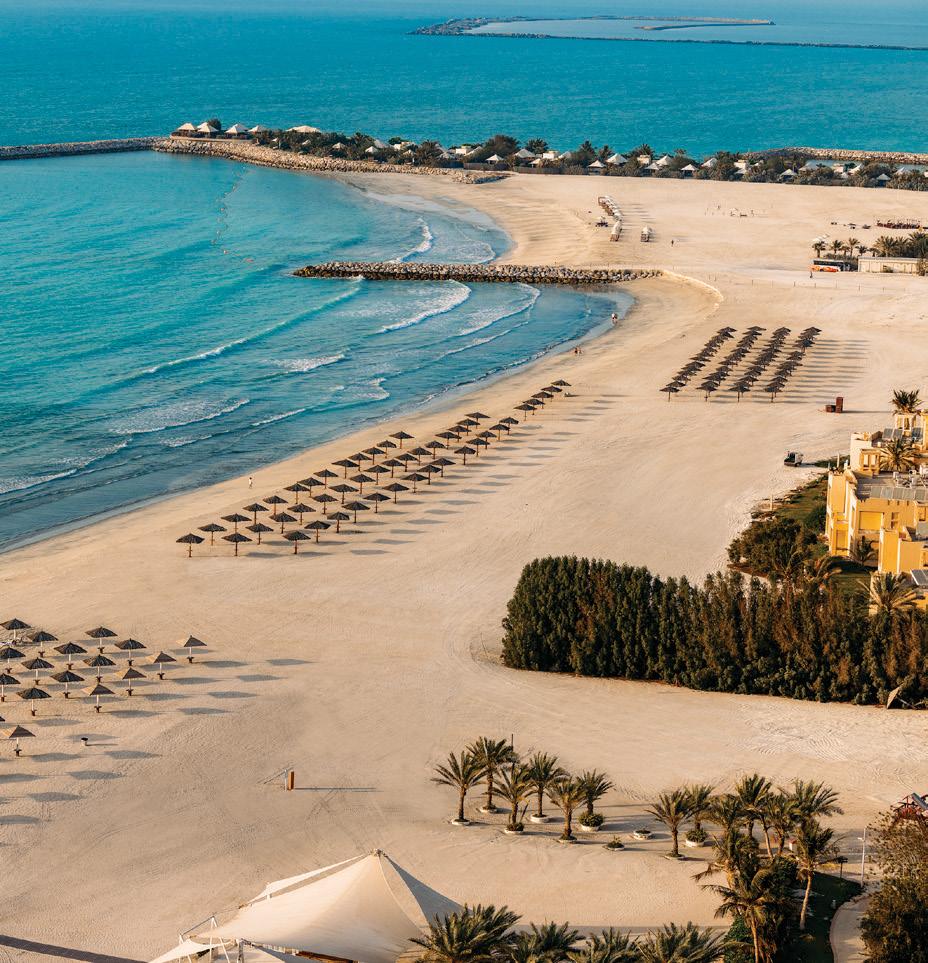
An insight into the news and trends shaping the region with perceptive commentary and analysis
Mastercard EEMEA president Dimitrios Dosis shares how the company is leveraging technology, diversification and strategic partnerships to serve communities across the region Pic courtesy:
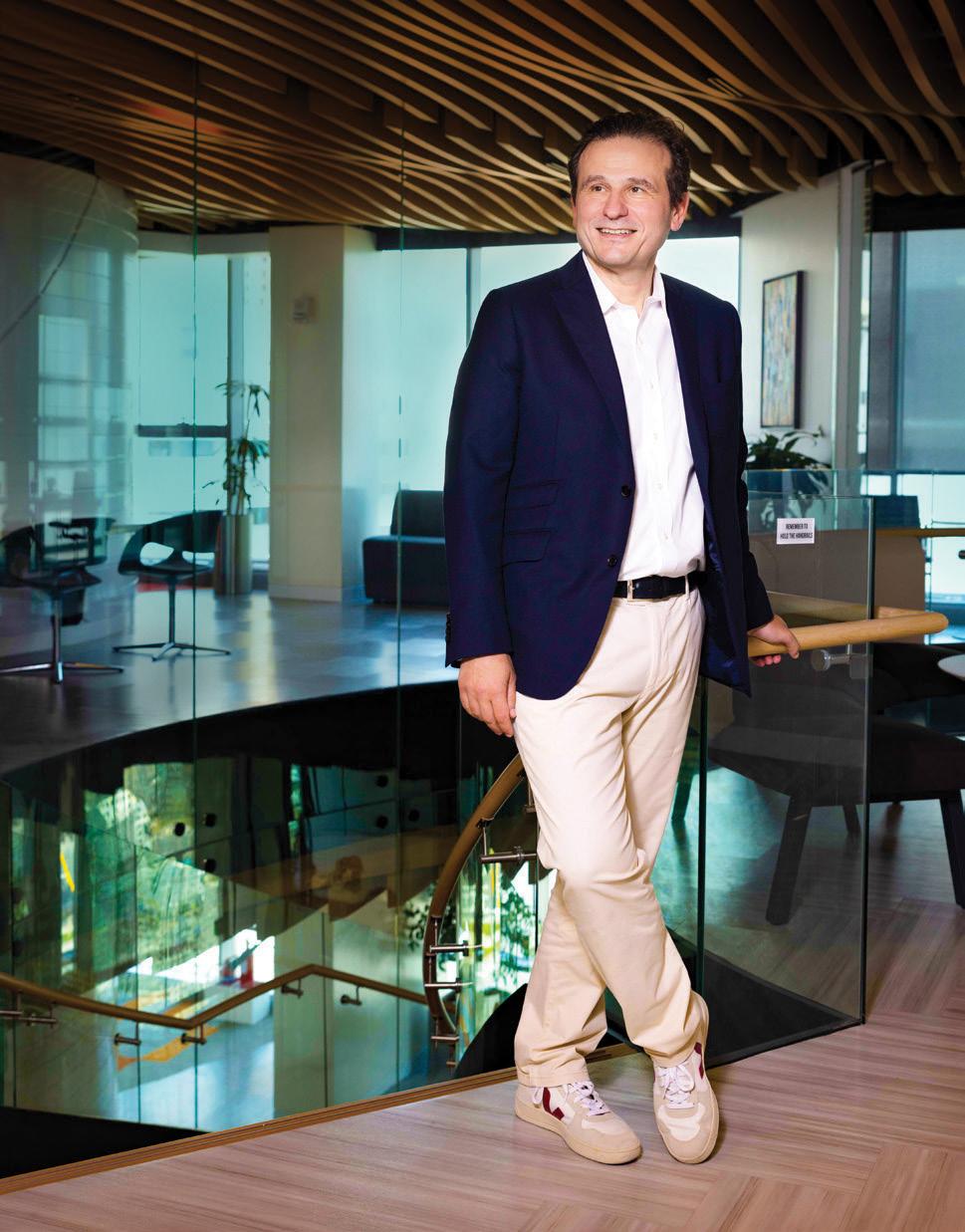
Rapid rebound: We showcase the developments and trends boosting the tremendous recovery of the regional and global tourism sector in recent months

Editor-in-chief Obaid Humaid Al Tayer
Managing partner and group editor Ian Fairservice
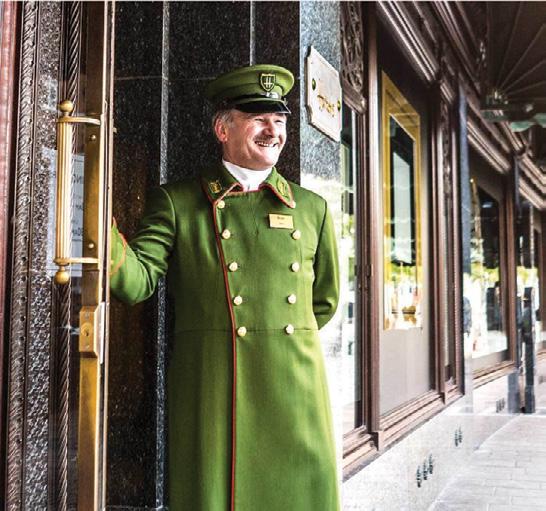
Chief commercial officer Anthony Milne anthony@motivate.ae
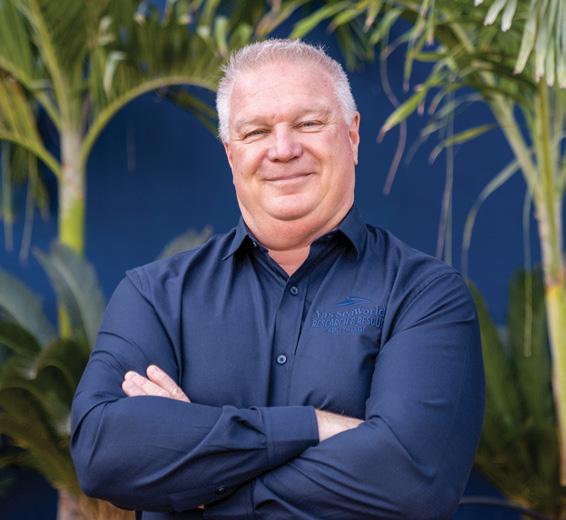
Editor Neesha Salian neesha.salian@motivate.ae
Tech editor Divsha Bhat divsha.bhat@motivate.ae
Senior feature writer Kudakwashe Muzoriwa
Kudakwashe.Muzoriwa@motivate.ae
Senior art director Olga Petroff olga.petroff@motivate.ae
Senior art director Freddie N. Colinares freddie@motivate.ae


Cover: Freddie N Colinares
Interviews with entrepreneurs and insights from experts on how the regional SME ecosystem is evolving
General manager – production S Sunil Kumar
Production manager Binu Purandaran
Production supervisor Venita Pinto
Digital sales director Gurjeet Kaur Gurjeet.Kaur@motivate.ae
Group sales manager Mansi Khatwani Mansi.Khatwani@motivate.ae
Senior sales manager Sangeetha J S
Sangeetha.js@motivate.ae
Group marketing manager Joelle AlBeaino joelle.albeaino@motivate.ae
“We are a country founded on ambition. We are a country that has not stopped since December 2, 1971. It will not stop. It will not turn around. It will not set small goals for itself.”
SheikhMohammed bin Rashid Al Maktoum, Vice
Presidentand Prime Minister of the UAE and Ruler of Dubai Why conservation is key? Rob Yordi of SeaWorld Research & Rescue explains p.60 Luxury central: How Harrods continues to deliver a deluxe shopping experience p.64 Beauty and the beast: The new McLaren Artura unleashed p.66


Cuétara’s family business is Switzerland-based snack company Cuétara Foods, which makes 25 brands of cookies, biscuits and crackers sold all over the world. For Cuétara, who was CEO for the Americas at the time, that moment was a turning point. “I was like, ‘I want to blame everybody else for this,” he says. “But I’m not an innocent party here. I’m part of the problem.’”
Most bags for potato chips and other crispy snacks are made with three layers of polymer materials: a moisture barrier on the inside, low-density polyethylene in the middle and an outer layer of thermoplastic resin. From an environmental standpoint, polymers – like all plastics – have two marks against them: They’re made from petroleum, and they’ll never decompose.
Today, according to the UN Environment Programme, humans produce about 400 million tonnes of plastic waste every year. Half of that is single-use plastic, like potato chip bags, that ends up in landfills or in waterways, where it breaks down into microplastics that are consumed by aquatic life, and eventually by people. At the behest of consumers and under the shadow of potential regulation, snack companies are now looking for a way to break that cycle with alternative packaging materials.
Cuétara swam into his cookie bag in 2015, setting off a four-year quest to find a different packaging material that didn’t rely on fossil fuels. In 2019, Cuétara and Dr Russ Petrie, an orthopedic surgeon in California, founded Okeanos, which uses calcium carbonate to create bags for snacks, rice, coffee and salt, as well as wraps for flowers.
Florencio Cuétara is the kind of person who crosses the street to tell people to pick up their litter. One day, Cuétara, an avid diver, was swimming in the Mediterranean when he came across a plastic cookie bag. “This bag hits me in the face as I’m swimming. And I’m cursing whoever put it in there, as if it’s somebody else’s fault,” Cuétara says. “Then I realised that the bag was one of my bags – with my last name on it.”
Calcium carbonate, a mineral naturally found in stone or rocks, has been used as a filler in packaging before, but only in small percentages. Cuétara and Petrie developed a technology they called “Made from Stone” that is up to 70 per cent calcium
carbonate; the rest is made of resin. The company’s bags are both flexible and light – they float on water – and the technology is now used by manufacturers in 15 countries including Brazil, India, Canada, the Philippines and the US.
For Sean Mason and Mark Green, co-founders of British crisps company Two Farmers, it took five years to find a packaging material that would both biodegrade and keep their chips crunchy. When it came to identifying an alternative material, though, Mason and Green were stumped. First, they considered cardboard boxes. “We suddenly realised that we would still have to put a plastic bag inside to keep it fresh,” Mason says. “So we were effectively just overpackaging; packaging for packaging’s sake.” Next they looked at tins. “Too expensive and probably too much waste for a small 40-gramme packet.” Finally, they came across eucalyptus cellulose films in their raw state, and started talking to the producers about their potential for crisps bags. The duo found a laminator, which helped them figure out how to add plant-based glues and inks for printing. After producing the film, they sent it off to TŪV Austria – a third-party certifier that verifies whether packaging is compostable – to have it tested for compostability and eco-toxicity. Following some trial and error, their material passed muster, and in 2019 Two Farmers officially launched its gourmet potato chips in 100 per cent compostable packaging made from eucalyptus cellulose. Mason says his company’s bags take 30 to 36 weeks to decompose in home composting systems, or 11 weeks in an industrial composter.
In the world of US potato chips, for example, FritoLay, a division of PepsiCo began its own foray into alternative packaging over a decade ago, with the 2009 debut of a 100 per cent compostable bag for SunChips. The company has a goal of making all its packaging 100 per cent recyclable, compostable, biodegradable or re-usable by 2025. In 2021, it debuted
IN THE EU, ALMOST 38 PER CENT OF PLASTIC WAS RECYCLED IN 2020
a bag made of 85 per cent polylactic acid – typically composed of corn starch – for two of its Off the Eaten Path veggie chips.
The Off the Eaten Path bag is industrially compostable, which means it can be put into city compost systems. The bags can also be sent back via a free shipping label to New Jersey-based TerraCycle, which partners with Frito-Lay on the venture.
Companies that aren’t moving towards plastic-free packaging yet may be forced to in the future, as regulators start to step in. Last year, the European Union (EU) proposed new rules that would require companies selling products in EU countries to make their packaging easier to reuse, recycle or compost. The rules would also limit unnecessary empty space in packaging, part of an overall goal to to reduce packaging waste by 5 per cent by 2030, compared to 2018 levels. If effective, the EU could set a standard for other nations to follow. But the hurdles remain enormous, and snack bags are just one piece of a much bigger problem. Most developing countries don’t have recycling or composting facilities, and in the nations that do, those systems are often broken or dysfunctional. The Environmental Protection Agency estimates a US plastic recycling rate of just below 9 per cent, while Beyond Plastics, a project out of Bennington College, pegs it at an even bleaker 5 per cent to 6 per cent.
In the EU, almost 38 per cent of plastic was recycled in 2020, and regulations imposed in 2021 halted the sale of the 10 most common plastics to wash up on European beaches, including bottle caps and straws. But addressing plastic packaging writ large will require changes at every part of its life cycle: from raw materials to duration of use to the nature of disposal. Those hurdles are part of why Cuétara says Made from Stone bags are catching on: Packaging manufacturers can keep using their existing equipment, and calcium carbonate is naturally abundant with relatively stable pricing.
“THIS BAG HITS ME IN THE FACE AS I’M SWIMMING. AND I’M CURSING WHOEVER PUT IT IN THERE, AS IF IT’S SOMEBODY ELSE’S FAULT,” CUÉTARA SAYS. “THEN I REALISED THAT THE BAG WAS ONE OF MY BAGS – WITH MY LAST NAME ON IT”
TODAY, ACCORDING TO THE UN ENVIRONMENT PROGRAMME, HUMANS PRODUCE ABOUT 400 MILLION TONNES OF PLASTIC WASTE EVERY YEAR . HALF OF THAT IS SINGLE-USE PLASTIC, LIKE POTATO CHIP BAGS, WHICH ENDS UP IN LANDFILLS OR IN WATERWAYS
Global awareness of the dangers posed by climate change has probably never been greater than today. The impact from a heating planet is being felt around the world. According to a report by NGO Christian Aid, the top ten most impactful extreme weather events in 2022 cost more than $168bn in damages combined.
Against this backdrop, political willingness to implement policies that reduce greenhouse gas emissions, and thereby limit global warming is growing. But even as companies around the world are setting targets to reduce their carbon footprint and align themselves to climate targets, the path to net zero is not without risk. Indeed, few companies are looking closely at how the mounting pressures to decarbonise are leading to costs and reputational risks for companies in sectors where emissions are hard to abate.
Within the financial community, this is referred to as transition risk. At the same time, the growing impact from extreme weather events will gradually lead to higher economic costs, reinforcing the need to invest in climate adaptation strategies. Although “loss and damage” financing was part of the official COP27 agenda for the first time, most companies do not yet consider how these so-called physical risks will affect them.
For UAE-based companies in our dataset, climate physical risks are projected to increase, on average, only mildly over the course of the century.
Edo Schets, head of climate for Core Product Sustainable Finance Solutions, Bloomberg LP
In 2030, UAE-based companies will face a 58 per cent chance of being affected by climate physical risks. Individual companies could face much higher risks, however, depending on their geographical footprint throughout the world.
For some UAE based companies, the chance of being affected by climate physical risks in 2030 is as high as 80 per cent. Savvy investors will want to be hedged against both transition risk and physical risk, while maintaining good investment returns. To do this well, investors need to address three fundamental challenges.
The first challenge is to understand how companies are exposed to climate risk. To determine a company’s exposure to climate-related risks investors need non-financial data, unlike for traditional types of financial risk. For transition risk, for example, key factors to take into account include a company’s carbon footprint and its transition plans. Such data is not traditionally reported by companies, and to help investors plug that gap vendors have developed models to estimate emissions, and solutions to understand whether companies are on track to achieve net zero targets.
Another challenge to consider is how to derive the potential impact from climate risk. As climate change is unprecedented, forward-looking data and models are needed to capture the future financial impacts from climate risk and give plausible predictions of how climate policies, energy technologies and the physical environment could evolve.

Finally, there is the question of how to incorporate climate risk assessments into investment decisions. Given that climate risk assessments rely on non-traditional datasets and models, questions arise around how to use the insights from such assessments in actual investment decisions. For example, how should longer term climate risks be factored into shorter term investment strategies? How should different future scenarios be weighted so as to allow for probabilistic impact metrics, such as a climate value-at-risk?
In light of these challenges, the task of incorporating climate financial risk in investment decisions can feel overwhelming. This is where climate risk data and tools need to be integrated into investment decision-making processes. To make strategic climate-informed decisions, it is crucial to understand how company performance could be impacted across a range of scenarios.
However, thanks to increasingly reliable data and insightful analytics, climate risk management is set to become business as usual.
To determine a company’s exposure to climate-related risks investors need non-financial data, unlike for traditional types of financial risk

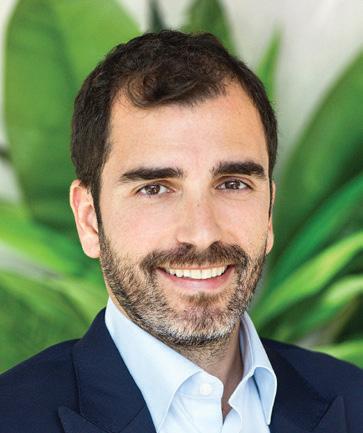






To achieve the goal of the Paris Agreement of limiting global warming to an increase in temperature of 1.5°C above pre-industrial levels, the substitution of fossil fuels with renewable energy is beyond crucial. However, renewable electricity alone will not be su cient to meet the energy needs of hard-to-electrify industries such as steel, cement, aviation, and shipping. And this is where low-carbon hydrogen and its derivatives such as ammonia, methanol, and kerosene (so-called power-to-X) will play a critical role. Together, these fuels must provide 10 to 12 per cent of global energy consumption if we are to reach net zero by 2050.




Hydrogen is a relatively well-established industry today, with more than 90 million tonnes produced almost exclusively from unabated fossil fuels (i.e. grey hydrogen) and consumed in a few key sectors such as ammonia and methanol production and refining.




Low-carbon hydrogen (green and blue hydrogen), is, however, a much more nascent industry. According to BCG’s analysis of the future need for low-carbon fuels, 350 million tonnes per year of low-carbon hydrogen and its derivatives will be required by 2050 to limit global warming to 2°C, rising to 540 million tonnes per year in a 1.5° scenario.





















Low-carbon hydrogen will first need to replace grey hydrogen where it is currently used and then be targeted at select additional use cases (For e.g. steel, aviation, shipping and long-term storage). By 2050, the low-carbon hydrogen market could represent a value of $600bn to $1.1tn, according to BCG estimates.

There are currently over 900 low-carbon hydrogen projects in the global pipeline of which the majority are green hydrogen projects. The Middle East, in particular, has demonstrated high ambitions to undertake large-scale developments for low-carbon hydrogen.
The UAE so far aims to produce 100 gigawatts (GW) of renewables and 1 Mpta of green hydrogen by 2030. Saudi Arabia just recently announced that it aims to become the largest global exporter of lowcarbon hydrogen and is investing $266bn in a clean energy plan. And, Oman is currently running an auction process to award large-scale green hydrogen projects to developers, intending to meet its production target of 1 Mtpa of green hydrogen by 2030.
But the Middle East is not alone in the race to capture global market share. Other countries can also produce low-carbon hydrogen competitively and at scale, in particular Chile, South Africa, Namibia, Morocco and Australia.
The recent US Inflation Reduction Act (IRA), which includes $369bn of funding for climate and energy over the next decade and builds on more than $110bn of funding from the Infrastructure Investment and Jobs Act passed in late 2021, is expected to have profound and lasting impacts across the global energy systems. The IRA, with its production tax credit of up to $3/kg of hydrogen, improves the competitiveness of US-produced hydrogen in a step-change.
Although the pipeline of low-carbon hydrogen
projects is expanding fast, only less than five per cent of projects are under construction or have reached a final investment decision.
While clear opportunities are ahead, some challenges lie in the pace of development of the hydrogen industry. Combined and coordinated action is thus required across stakeholders to de-risk projects and enable the development of the low-carbon hydrogen industry. Specifically:
Governments and regulators: They will need to translate their ambitions/strategies into supportive and stable policies and regulations (combining both incentives and mandates) and also cooperate to define certification/standards, notably for emissions intensity of hydrogen production.
Lenders and developers: Until customers make purchase commitments, including agreements to opt for premium low-carbon hydrogen, lenders and developers will need new instruments to support the development of large-scale low-carbon hydrogen projects.
Producers: They will need to engage in bringing together all the required capabilities along the value chain through partnerships as well as engage potential off-takers early on.
Technology providers: Companies must develop and deploy new technologies to reduce production costs and increase electrolyser efficiency and capacity.
Infrastructure providers: Companies will need to develop the required infrastructure to be able to transport and store hydrogen and its derivatives. Many elements of the future hydrogen infrastructure use technologies readily available but long-distance transportation will require further technology development.
To conclude, low-carbon fuels, including low-carbon hydrogen and its derivatives, will play a critical role in the decarbonisation of our economies. Their use will however need to be targeted at select use cases where renewable electricity will not be sufficient. The next decade will be crucial to the development of the low-carbon hydrogen sector.
Infrastructure investors are well aware of the high returns earned by those that invested early in new technologies, such as renewables, and are as such keen on investing in low-carbon hydrogen projects. However, the development of the hydrogen industry will require coordinated efforts from all stakeholders, including governments, developers, technology providers, and infrastructure providers.
“INFRASTRUCTURE INVESTORS ARE WELL AWARE OF THE HIGH RETURNS EARNED BY THOSE THAT INVESTED EARLY IN NEW TECHNOLOGIES, SUCH AS RENEWABLES, AND ARE AS SUCH KEEN ON INVESTING IN LOW-CARBON HYDROGEN PROJECTS”

























































































































































































































































Asset tokenisation can have a dramatic effect on the carbon market because it ensures transparency, both in terms of credit provenance and price, among other benefits
Asset tokenisation has emerged as one of the best use cases for Web3 technologies. It enables physical assets, such as bonds, real estate and gold, to be represented on-chain, taking advantage of a number of benefits offered by blockchains and smart contracts. Tokenised assets facilitate trade, enable fractionalisation, increase liquidity, reduce fraud risk and provide unprecedented transparency.
Consider the real estate market. Traditionally known as an illiquid market in which properties take significant time and money to trade, representing property deeds on-chain can bring the kind of efficiency needed to make buying and selling as quick as transferring a token. At the same time, property owners will be able to unlock the liquidity of the property by using it as collateral for non-discriminatory on-chain borrowing. And that’s not even to mention the potential of fractionalisation.

Any physical asset can benefit from tokenisation. Climate assets, such as carbon credits, are a strong candidate because they are currently seen as inaccessible and are not even considered an asset class. With no centralised solutions in sight and the environment very much in crisis, asset tokenisation may offer the kind of hope we need to change the way we think about and act towards the climate.

Carbon credits were originally conceived as a way of incentivising good climate behaviour. Companies that beat government emissions targets could earn credits and sell them for a profit. While that market – known as the compliance market – is still in operation, a voluntary market has emerged in which companies seek to voluntarily offset their carbon emissions by purchasing carbon credits generated primarily by certified reforestation and preservation projects. The
issue is that the voluntary carbon market (VCM) is known for being opaque, inefficient and exclusive. There is no industry-accepted way to price credits, for example, and brokers exert disproportionate control over the entire process. This has, in some cases, led to fraudulent activity where credits are sold twice. It’s for these reasons that carbon credits have yet to become their own asset class and remain inaccessible to most people.
Asset tokenisation can have a dramatic effect on the carbon market because it ensures transparency, both in terms of credit provenance and price, and provides the market infrastructure to facilitate the sale and immediate retirement of credits.
A more transparent, efficient and inclusive market means greater participation across the spectrum, from organisations and individuals looking to offset their emissions to projects focused on reforestation and preservation. This then becomes the foundation for mass adoption and makes the tokenised carbon credit the primary asset of the regeneration finance (or ReFi) movement.
A good example is the carbon offset option provided by some airlines. Without intimate knowledge of carbon credit methodologies, it is near impossible to determine the provenance, vintage (the year that the credit was generated) and overall quality of the offsets on offer.
Airlines selling tokenised carbon credits, on the contrary, can demonstrate complete transparency with respect to the credits. Users can then rest assured that the offsets they are buying are the result of legitimate climate initiatives.
Carbon credits may have the greatest need of tokenisation, but they are not the only climate asset that can be tokenised. Renewable energy credits from solar or hydroelectric sources, for example, provide great incentives for small-scale projects, but suffer from the same market opacity and illiquidity as carbon credits.
We are also seeing assets such as unexploited land be tokenised as non-fungible tokens (NFTs) as a way of raising capital for preservation. NFT purchasers earn easement rights for a period of time as well as the “avoidance” carbon credits produced by the land. This is a win-win-win for the landowner, purchaser and the environment.
Other candidates are the reforestation and preservation projects themselves. Traditionally seen as accessible only to institutional investors, tokenisation of their equity and/or carbon credit rights could provide a revenue-generating investment vehicle for retail investors looking to support climate initiatives.
With the support of like-minded investors and governments, we are seeing a wide range of Web3 climate solutions aimed specifically at corporations. At the top of the list are on-chain credit registries. Corporations looking to offset their carbon emissions or fund reforestation and preservation projects can purchase tokenised credits without needing to approach a broker or project directly.
On the flip side, corporations eligible to claim carbon credits can take advantage of the same registries to tokenise and sell them on the open market without the need for an intermediary. Or, in cases where capital is needed to spin up a climate impact project, corporations can turn to on-chain funding solutions such as decentralised autonomous organisations.
We know that this year will be a big one for Web3 climate impact, especially with the UAE announcing 2023 as the ‘Year of Sustainability’ and Dubai hosting COP28 in November. We strongly believe that COP28 will be the biggest and most action-oriented gathering to date, with stakeholders from across the globe coming together to focus on climate impact. This is our opportunity to progress collectively towards our net zero ambitions.
But work has to start today. On one side, we need solutions that lower the barriers to access and incentivise climate impact.
On the other, corporations need to step up and inspire the next generation of climate warriors by making demonstrable impact and supporting climate initiatives.
Climate asset tokenisation is a core component of both. It’s an indelible part of the foundation that innovative minds can leverage in our shared quest to confront the environmental crisis and start healing the planet.
“AIRLINES SELLING TOKENISED CARBON CREDITS, ON THE CONTRARY, CAN DEMONSTRATE COMPLETE TRANSPARENCY WITH RESPECT TO THE CREDITS.USERS CAN THEN REST ASSURED THAT THE OFFSETS THEY ARE BUYING ARE THE RESULT OF LEGITIMATE CLIMATE INITIATIVES”
THIS YEAR WILL BE A BIG ONE FOR WEB3 CLIMATE IMPACT, ESPECIALLY WITH THE UAE ANNOUNCING 2023 AS THE ‘YEAR OF SUSTAINABILITY’ AND DUBAI HOSTING COP28 IN NOVEMBER
Aholistic approach to workplace design balances smart and sustainable features with employee wellness and productivity. Technological advancements, an everchanging work culture, and a focus on employee well-being are all instrumental in designing offices for the future.
Workplace design is now geared towards spaces that are adaptable, flexible, respectful of nature, and incorporate cutting-edge technology and sustainable practices. With 2023 being declared as the Year of Sustainability in the UAE, the Emirates’ property and real estate sector is committed to working towards earth-friendly targets in the future. The pandemic saw the rapid implementation of innovation across
multiple levels – flexible working and a heavier reliance on technology, for example. Subsequent office design is implementing some of the comforts more usually associated with a home office; for instance, for a more inviting atmosphere.
The prospect of flexible working is being carried on, such as compressed work weeks and tech that reduces in-person meetings across significant distances – all in all contributing towards sustainability, productivity and work-life balance.
I see bioliphic design as an integral feature for sustainable business design. Design elements that make use of natural elements such as greenery, water features, sunshine and natural light are moodboosters. They improve air quality, reduce stress, and save on energy bills. They’re also aesthetically fitting and pair well with sleek interiors. They also seamlessly blend with natural and sustainable materials, such as recycled plastic and bamboo, to create futuristic spaces.
The key to future-forward office design is flexibility. Adjustable workstations customise workspace to fit individual and health needs, reducing the risk of injury and improving productivity. By utilising flexible design methods in workplace design,
FUTURISTIC DESIGN CATERS TO DIVERSE NEEDS, AND MUST BE ESPECIALLY MINDFUL TOWARDS PEOPLE OF DETERMINATION. INCLUSIVE OFFICES INCLUDE ACCESSIBLE AMENITIES, WHEELCHAIR RAMPS, AND FURNITURE OF ADJUSTABLE HEIGHTS
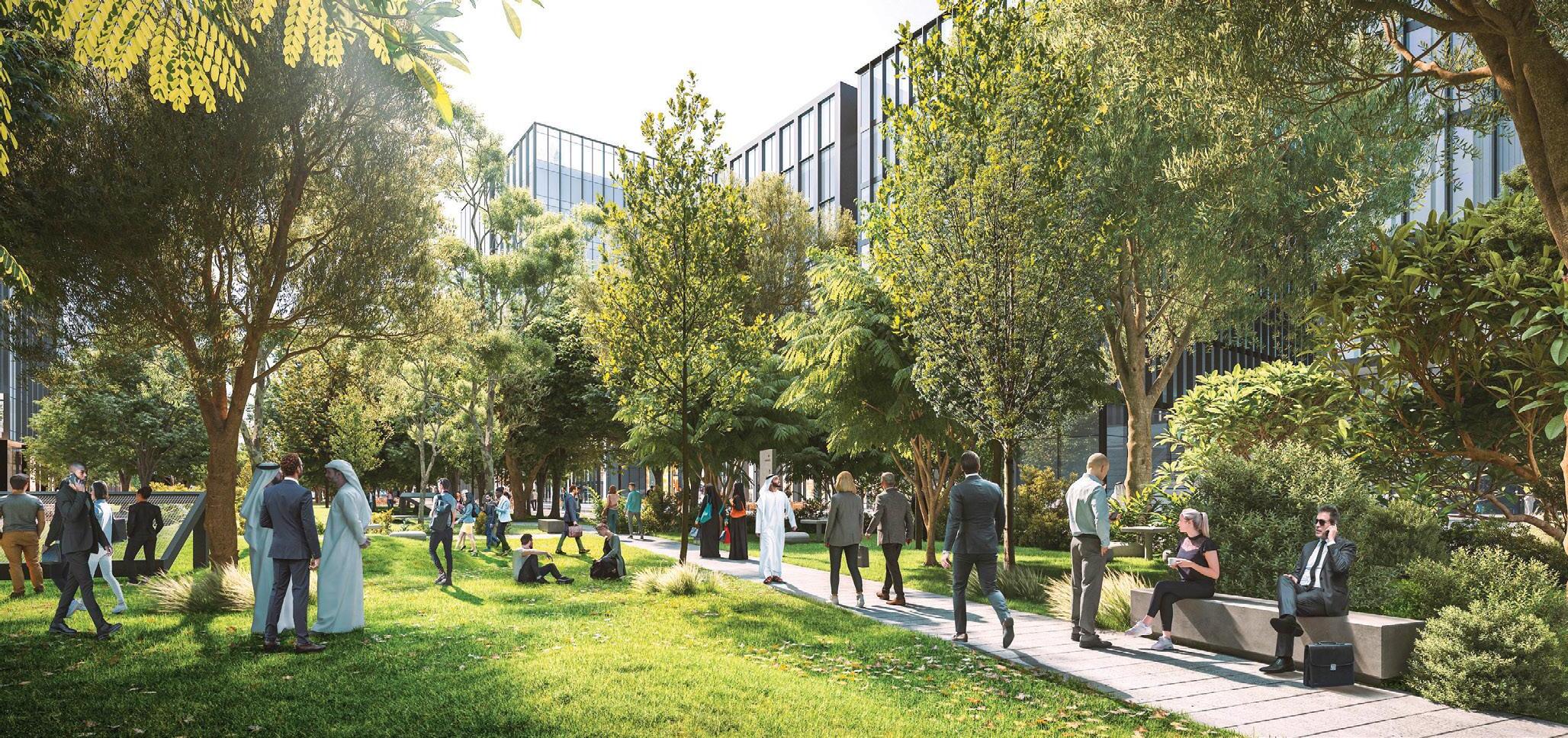
Our view of how and where we work has changed significantly over the last three years. We look at what developers can do to create the perfect working environmentPIC COURTESY: ARADA
organisations can create spaces that are adaptable, sustainable, and supportive of employee wellbeing, leading to improved productivity and a more positive work environment.
Energy-efficient designs and technologies such as solar panels, green roofs, and smart lighting systems save energy and reduce carbon emissions but also provide a futuristic feel to the buildings. Userfriendly smart building systems – from sensors to phone apps to smart ventilation, smart lighting, and sound-masking – enhance efficiency, increase security, and diminish wastage.
Smart air quality sensors and real-time alerts for potential security breaches may help employees feel safe and secure and enhance safety, while increasingly sophisticated automation systems help streamline processes and reduce manual labour.
Collectively, designing for the workplace ought to reduce environmental impact while creating visually appealing and functional spaces that adapt to changing work configurations. Multipurpose spaces can accommodate different activities and work modes. Curved and organic shapes are creative as well as functional in that they create more efficient airflow.
Future-forward interiors should also encourage teamwork and social interaction, such as communal work areas and breakout spaces. Employee comfort is integral for physical and mental health, ranging from ergonomic furniture and adjustable lighting to acoustic solutions to reduce distractions. Employees’ needs are given added respect and consideration in sustainable design for the workplace which ultimately leads to a happier environment.
Key design features to achieve optimal employee
ART WORKS TO INSPIRE OR PROVOKE THOUGHT, OR EVEN START A CONVERSATION
Elie Mrad, chief architectural officer, Arada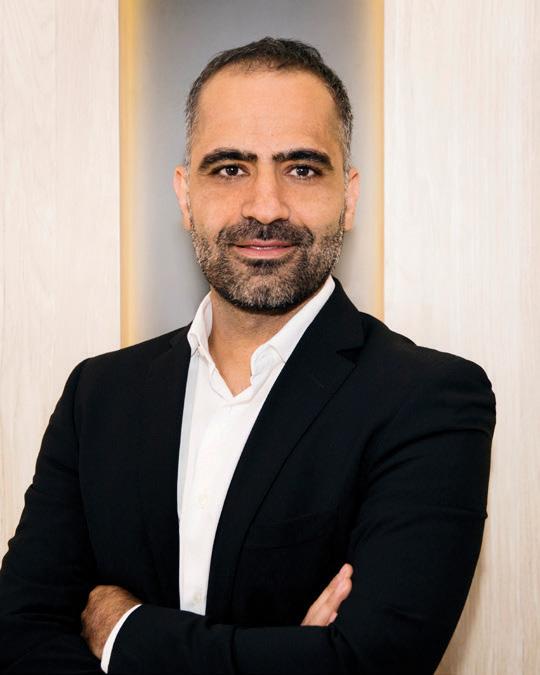
ENERGY-EFFICIENT DESIGNS AND TECHNOLOGIES SUCH AS SOLAR PANELS, GREEN ROOFS, AND SMART LIGHTING SYSTEMS SAVE ENERGY AND REDUCE CARBON EMISSIONS BUT ALSO PROVIDE A FUTURISTIC FEEL TO THE BUILDINGS
conditions may include large windows and skylights; ergonomic chairs, adjustable desks, and supportive furniture; acoustic panels or plants, to reduce noise levels – with comfort and enjoyment going hand-inhand with productivity and efficiency.
Futuristic design caters to diverse needs, and must be especially mindful towards people of determination. Inclusive offices include accessible amenities, wheelchair ramps and furniture of adjustable heights. A welcoming and supportive environment heightens employee morale and enhances bodily health. Both furnishings and activity options can support the human body by reducing pain and fatigue. From prayer rooms to yoga or meditation zones and gyms, the workplace can be expanded to become a destination for solace, motivation and self-improvement. When it comes to designing forward-thinking workplaces that simultaneously prioritise wellness, productivity, and sustainability, design configurations are increasingly holistic in their approach, with open plan layouts, ergonomic furniture, areas for communal gatherings, and designated zones that invite collaboration and brainstorming.
Art works to inspire or provoke thought, or even start a conversation, have a place here too. Thoughtful textures and colour palettes that inspire, calming views of nature, leafy indoor plants, and ample natural light are all factors that contribute towards impactful, contemporary design. Public transportation, electric car charge ports and scooters, and an abundance of green, walkable spaces as well as amenities such as childcare facilities, fitness centres and dining options all contribute to convenience, motivation, and ultimately, sustainable productivity.
When it comes to architecture and landscape design for very warm climates, strategic positioning can make a significant impact on lowering temperatures and preventing heat islands. Planting leafy green trees and structuring buildings to take advantage of natural wind tunnels effectively provide shade, breeze and respite from extreme heat.
The way we view our workplaces has changed enormously over the last three years and it’s incumbent on all stakeholders, from employers and developers to regulators and professional groups, to make our working lives as simple, heathy, stress-free and productive as possible.
“FUTURE-FORWARD INTERIORS SHOULD ALSO ENCOURAGE TEAMWORK AND SOCIAL INTERACTION, SUCH AS COMMUNAL WORK AREAS AND BREAKOUT SPACES.
EMPLOYEE COMFORT IS INTEGRAL FOR PHYSICAL AND MENTAL HEALTH, RANGING FROM ERGONOMIC FURNITURE AND ADJUSTABLE LIGHTING TO ACOUSTIC SOLUTIONS TO REDUCE DISTRACTIONS”
Independent directors play a critical role in providing unbiased oversight and challenging the decisions of the management. The SVB board was dominated by insiders who contributed to a lack of effective checks and balances, and a failure to identify and address potential risks faced by the bank.
Risk management is a crucial aspect of governance, especially for financial institutions. SVB’s exposure to high-risk loans and investments, particularly in the untested technology sectors has caused a domino effect. It has been reported that the bank’s risk management practices were inadequate, with insufficient risk assessment, monitoring, and mitigation measures in place. Essentially it is a failure of the board in overseeing the bank’s risk management practices.
The board has the responsibility to ensure that the company’s financial performance is properly monitored and managed. This includes reviewing financial reports, assessing the adequacy of financial controls, and ensuring that the company’s financial practices are in compliance with applicable laws and regulations. In the case of SVB, there have been allegations of financial mismanagement and lack of transparency in financial reporting, which indicates inadequate financial oversight by the board.

Diversity in board composition in terms of gender, ethnicity, age, experience, and expertise is known to enhance effectiveness of decision-making. The SVB board lacked diversity, with a homogenous composition that did not reflect the diversity of its customers, employees and stakeholders. This contributed to a narrow perspective in decision-making and a failure to adequately understand the concerns of stakeholders.
The recent collapse of Silicon Valley Bank (SVB), a prominent bank focused on tech startups, has brought to light the critical role of board governance once again. While SVB was once considered a trailblazer in the banking industry, providing specialised banking services to technology and innovationfocused companies, its downfall has been attributed to poor board governance practices. Poor governance can manifest in various ways, and in the case of SVB, it has been problematic in several areas.
Effective board oversight is critical for ensuring that the management is operating in the best interests of its stakeholders. However, in SVB’s case, the board must take the blame for its weak oversight of operations and risk management practices. It failed to ask tough questions, challenge management’s assumptions, and hold the management accountable for its actions. Overall, it appears that the board had inadequate information and communication. Directors rely on accurate and timely information to make informed decisions. This lack of timely and transparent information may have limited the board’s ability to fully understand the risks faced by the bank and take appropriate actions to mitigate them. There was also inadequate succession planning at SVB, which
How GCC bank boards can gain valuable insights from the recent collapse of the Silicon Valley Bank
is a critical aspect of governance. The board should have ensured that there was a robust plan in place to identify and develop potential successors for key leadership positions, including the CEO and other top executives. These governance failures hold the following important lessons for the boards of Gulf Cooperation Council (GCC) banks:
DON’T COMPROMISE ON RISK MANAGEMENT. SVB’s failure underscores the importance of robust risk management practices. GCC bank boards should ensure that they will not compromise on this. Boards should actively review and assess the risk appetite, risk culture, risk governance and risk management practices. They should also ensure that risk management policies and procedures are regularly updated, and risk-reporting mechanisms are in place to enable effective oversight.
DIVERSIFY, AND AVOID CONCENTRATION RISK. SVB’s over-reliance on a narrow segment of the market contributed to its failure. Bank boards in GCC should oversee that they don’t have excessive concentration risk in terms of customer segments, industries, or geographies. Diversification across different sectors, industries, and customer segments can reduce risks and provide stability. Actively review and assess the portfolio diversification and take steps to mitigate concentration risks.
ENSURE INDEPENDENT BOARD OVERSIGHT. The SVB fiasco highlights the importance of having more independent directors who can provide effective oversight. Ensure that the board has a balanced mix of independent directors with diverse expertise who can exercise independent judgment, challenge management, and provide effective oversight. Encourage them to question management decisions, assess risks objectively and hold management accountable.
BRING TRANSPARENCY IN REPORTING. Prioritise transparency in the operations, financial reporting,
Dr M Muneer, co-founder of the nonprofit Medici Institute
and communication with stakeholders. Boards should ensure that the financial reporting is timely, accurate and transparent, and that risk disclosures are comprehensive and informative.
DRIVE INNOVATION AND DIGITAL TRANSFORMATION. The SVB collapse shows the importance of this in the banking sector. Embrace innovation and digital technologies to enhance customer experience, streamline operations, and improve risk management. Invest in fintech partnerships, develop digital banking channels, leverage data analytics for risk assessment, and explore emerging technologies such as blockchain and artificial intelligence. This will help in staying competitive and agile.
STAY COMPLIANT, NO MATTER WHAT. GCC banks must prioritise compliance with regulatory requirements including anti-money laundering regulations, know-your-customer requirements, and other regulatory frameworks. Robust compliance practices like internal controls, and policies and procedures, are essential to mitigate legal, reputational, and operational risks.
FOCUS ON TALENT AND LEADERSHIP DEVELOPMENT. Boards must ensure attracting, developing, and retaining top talent as a critical governance issue. Skilled leaders can effectively manage risks and drive innovation. Leadership development programmes, succession planning, and talent retention strategies should be in place to cultivate a strong leadership pipeline and to ensure continuity in leadership roles.
SEEK MORE DIVERSITY. Lack of board diversity contributed to SVB’s failure. GCC banks should ensure that they don’t make similar mistakes. Diverse boards bring different perspectives, insights, and experiences to the table, which can help in better decision-making and risk management. Actively promote diversity in the boardroom and management.

“BOARDS MUST ENSURE ATTRACTING, DEVELOPING, AND RETAINING TOP TALENT AS A CRITICAL GOVERNANCE ISSUE. SKILLED LEADERS CAN EFFECTIVELY MANAGE RISKS AND DRIVE INNOVATION”ILLUSTRATION: GETTY IMAGES/LUCIANO LOZANO








 Alan O’Neill Managing director of Kara, change consultant and speaker
Alan O’Neill Managing director of Kara, change consultant and speaker



Of all the industries that exist in the marketplace, retail is the one that stands out for me as the one that has experienced probably the most disruptive change in the last 50 years. Whether you see it as a positive change or negative is all to do with your attitude and your willingness to embrace retail “Darwinism”.
From open market stalls to small stores with counters, to open department stores and gigantic malls, the evolution has been relentless. Television shopping channels arrived in the 80s with a very product-focused pushy selling style, and it was followed in the 90s by the big daddy of all disruption, the internet.
There is a lot of confusion and noise around how online shopping is causing a retail apocalypse and the closure of physical retail stores.
For sure, online is eating into overall retail spend and as it becomes more e cient and sophisticated, it will inevitably grow. Some figures were released during the pandemic that suggested that the global spending on retail (not including airlines, and hospitality bookings) was about 12-13 per cent, with experts at that time suggesting that it is unlikely to grow beyond 20 per cent of the overall retail mix.
However, the pandemic has changed much of that. The inevitable spike in online purchasing has advanced the global needle by three to five years. It did of course drop back a ter the pandemic, but






it is still expected that the overall mix will increase from 12-13 per cent, as new migrants to the channel grow to love it.
The bottom line here is that online shopping is growing and it’s a significant part of the strategic mix for retailers. You might wonder why I’m even saying this. Well, it’s because of some recently released data. Here are some of the highlights along with some of my own observations.
Consumers. Since the onset of Covid-19, consumers have embraced online in their droves. There is an obvious spike as you can see above. Small retailers. Quite shockingly, there is still a cohort of small retailers that should, but don’t even have a website. Only 25 per cent of all SME retailers sell online. Given that 82 per cent of online shoppers do so somewhat frequently, this makes those non-adopter businesses lose out. Strangely, 46 per cent of them say online is not their priority. Their relevance in their locality will continue to diminish, jeopardising their and their employees’ livelihoods.
Your online store. As normality returns and consumers feel less loyal to brands, they will once again start comparing sites across the whole global spectrum. Retailers need to use this time right now to further enhance their online shopfronts, their range edit and their descriptions.
International players have a greater choice or ‘endless aisles’ online.
Perhaps you could speak to your main suppliers about getting their support with this. Photography and descriptions too o er you an opportunity to localise your site with language and detail that will inspire your customers to buy. That means that you can no longer just ‘copy and paste’ your suppliers’ catalogues.
ONLY 25 PER CENT OF ALL SME RETAILERS SELL ONLINE. GIVEN THAT 82 PER CENT OF ONLINE SHOPPERS DO SO SOMEWHAT FREQUENTLY, THIS MAKES THOSE NON-ADOPTER BUSINESSES LOSE OUT


Click-and-collect. Businesses that started out as pure-play retailers (i.e., online-only, otherwise called DTCs – direct to consumer) are now opening stores. Why? Two main reasons stand out. They want to build a human rapport with their customers. And experience shows that customers can be influenced to buy more when they come in to store to collect their online purchases.
Returns. Recent research shows that customers buying decisions are hugely influenced by online retailers’ return policies. Use that to your advantage as a local supplier servicing a local customer base where international supply chains can be troublesome.
Data. Omni-channel is the next step beyond multi-channel. Multi-channel means that you





A strategic offering of
shopping experiences can help retailers stay relevant in current times
enable your customers to buy either in-store or online, by telephone or by email. Omni-channel is when you use technology to join up all these channels and offer your customer a seamless experience – where all touchpoints are connected. That and the use of data for personalisation may be a step too far for those with less budget. But don’t let the noise around omni-channel put you off starting with the basics, described before.
While online is likely to grow to 25 per cent of the overall mix, don’t forget that that means 75 per cent of all retail purchases will still be in-store. Because of the noise around online, I feel that many retailers forget this. Please don’t fall into that trap.
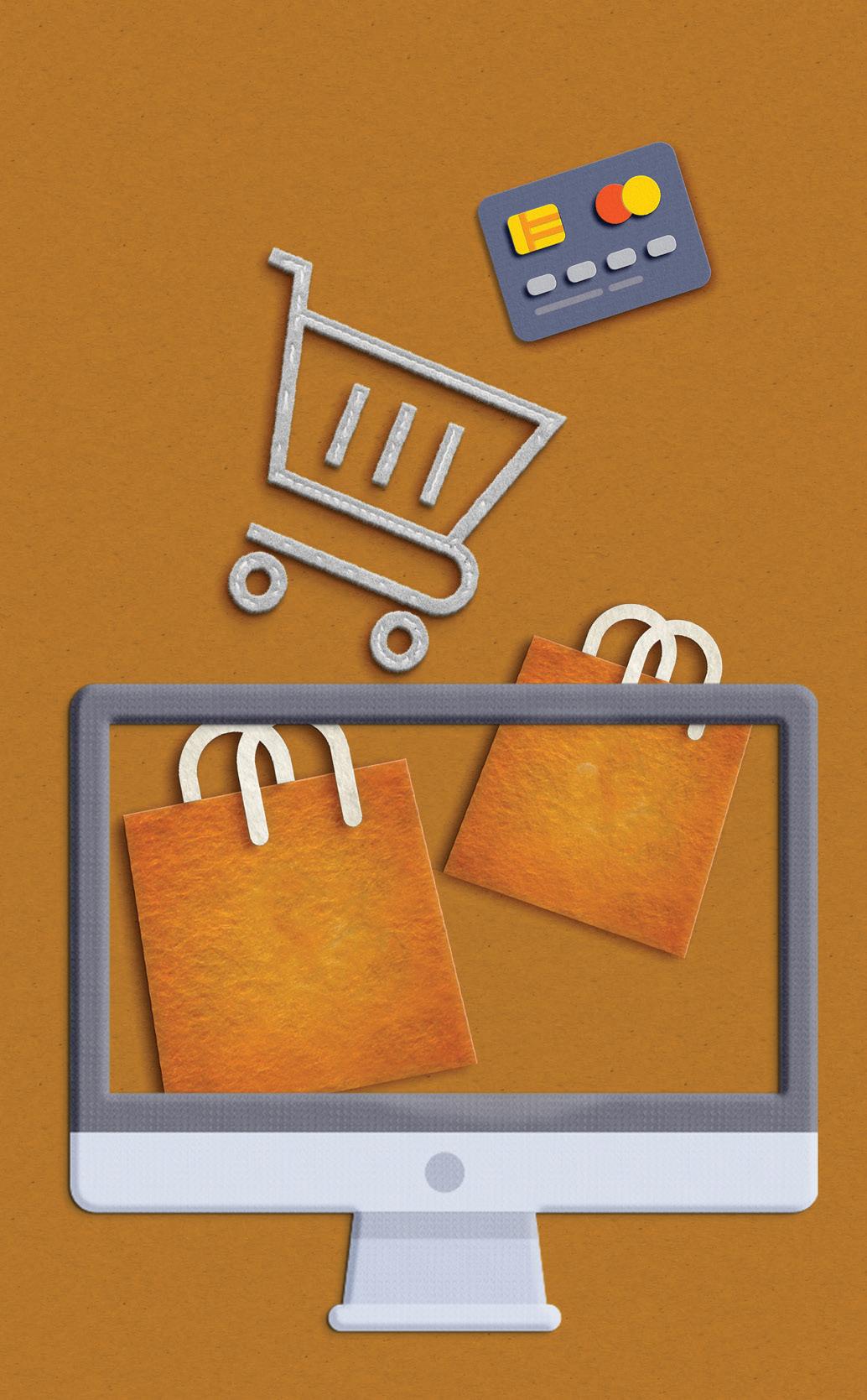

“BUSINESSES THAT STARTED OUT AS PURE-PLAY RETAILERS (I.E. ONLINEONLY, OTHERWISE CALLED DTCS – DIRECT TO CONSUMER) ARE NOW OPENING STORES. WHY? TWO MAIN REASONS STAND OUT. THEY WANT TO BUILD A HUMAN RAPPORT WITH THEIR CUSTOMERS. AND EXPERIENCE SHOWS THAT CUSTOMERS CAN BE INFLUENCED TO BUY MORE WHEN THEY COME IN TO STORE TO COLLECT THEIR ONLINE PURCHASES”

You can maximise your efficiency by managing your energy. These daily rituals will help







Our energy levels tend to fluctuate throughout the day. Some of us have high energy levels in the morning; others feel more energised in the evening. If we have a co ee, we feel a burst of energy, but then feel a drop in energy when the e ects of the ca eine wear o .

We all tend to experience a crash in energy levels a ter a heavy lunch, as our stomach starts the di cult task of digesting food. Figuring out when you have the most energy in the day is key to becoming more productive and focused.
Identifying your peak energy period has several catchy titles, one such is Biological Prime Time (or BPT), a phrase coined by Sam Carpenter in his book Work the System. Managing our time, but also managing our energy levels throughout the day ensures we avoid becoming distracted when we grow tired, and we’re able to continue to focus on the tasks at hand.
I o ten keep a time log so I can check in on myself every hour to ensure I’m staying on task, not becoming distracted by the trivial and not procrastinating and







WHAT METHOD AND RULES WILL YOU DEPLOY WHEN YOU WORK? FOR EXAMPLE, WILL YOU SET YOURSELF A TIMER FOR A 30‑MINUTE BURST OF WORK, OR WILL YOU WRITE FOR A COUPLE OF PAGES, OR WILL YOU ENSURE YOU DO NOT BROWSE THE INTERNET FOR THE FIRST HOUR, OR WILL YOU TURN OFF WI FI FROM YOUR LAPTOP SO YOU CAN FOCUS ON THE TASK?
putting off essential work. At the end of the day this allows me to review how I did. The great thing with an hourly time log is that you don’t have to wait till the end of the day to hold yourself accountable. If you’re veering off your desired path, you’ll be able to quickly rectify your position and get back on track.
One study of nearly 1,700 participants showed that keeping a food diary can double a person’s weight loss. The study found that the best predictors of weight loss were how frequently food diaries were kept and how many support sessions the participants attended. Those who kept daily food records lost twice as much weight as those who kept no records. The same effect can be seen when you keep a time log – you manage to reduce the level of distractions and increase your focus and attention. In addition to scheduling your hardest work when you have the most energy, it also makes sense to be organised and not haphazard.
The Pulitzer Prize-winning biographer Robert Caro, as was revealed in a 2009 magazine article, explained how every inch of his New York office was governed by rules. He had rules about where he placed his books (research on his immediate subject was closest), how he stacked his notebooks (new interviews were stacked at the top), what he put on the wall (an outline of the book he was working on), and even
“ONE STUDY OF NEARLY 1,700 PARTICIPANTS SHOWED THAT KEEPING A FOOD DIARY CAN DOUBLE A PERSON’S WEIGHT LOSS . THE STUDY FOUND THAT THE BEST PREDICTORS OF WEIGHT LOSS WERE HOW FREQUENTLY FOOD DIARIES WERE KEPT AND HOW MANY SUPPORT SESSIONS THE PARTICIPANTS ATTENDED”
Rehan Khan, principal consultant for BT and a novelistWHAT WILL YOU SUPPORT YOURSELF WITH? FOR EXAMPLE, A STRONG CUP OF COFFEE OR TEA, OR THE RIGHT LEVEL OF FOOD, OR A SHORT EXERCISE BREAK, EVERY 45 MINUTES
what he wore to the office. Everything had a routine, so that he could bring his full attention to his writing.
“I trained myself to be organised,” he explained as he pointed almost apologetically at his massive writer’s map. “If you’re fumbling around trying to remember what notebook has what quote, you can’t be in the room with the people you’re writing about.”
David Brooks summarises this reality more bluntly: “Great creative minds think like artists but work like accountants.” Caro was not being peculiar. Rather, he knew that success in his work relied on his ability to think deeply, and one way of facilitating this was to remove all distractions from his working environment.
You may not be writing a prize-winning piece, but you will be working on creating value in your organisation and personal life, and why not give yourself the best possible opportunity to excel at it?
Here are some things you might want to think about in terms of your working rituals:
How long are you going to work and where? Location is important and you must spend some time preparing it so that you can perform your best work there.
What method and rules will you deploy when you work? For example, will you set yourself a timer for a 30-minute burst of work, or will you write for a couple of pages, or will you ensure you do not browse the internet for the first hour, or will you turn off Wi-Fi from your laptop so you can focus on the task?

What will you support yourself with? For example, a strong cup of coffee or tea, or the right level of food, or a short exercise break, every 45 minutes.
Whenever I’m at my most productive, I’m usually in a routine where I don’t need to think too hard about where I work, how I will work or what will support my work. I plan all this in advance. I can then use all my energy on my most creative tasks.









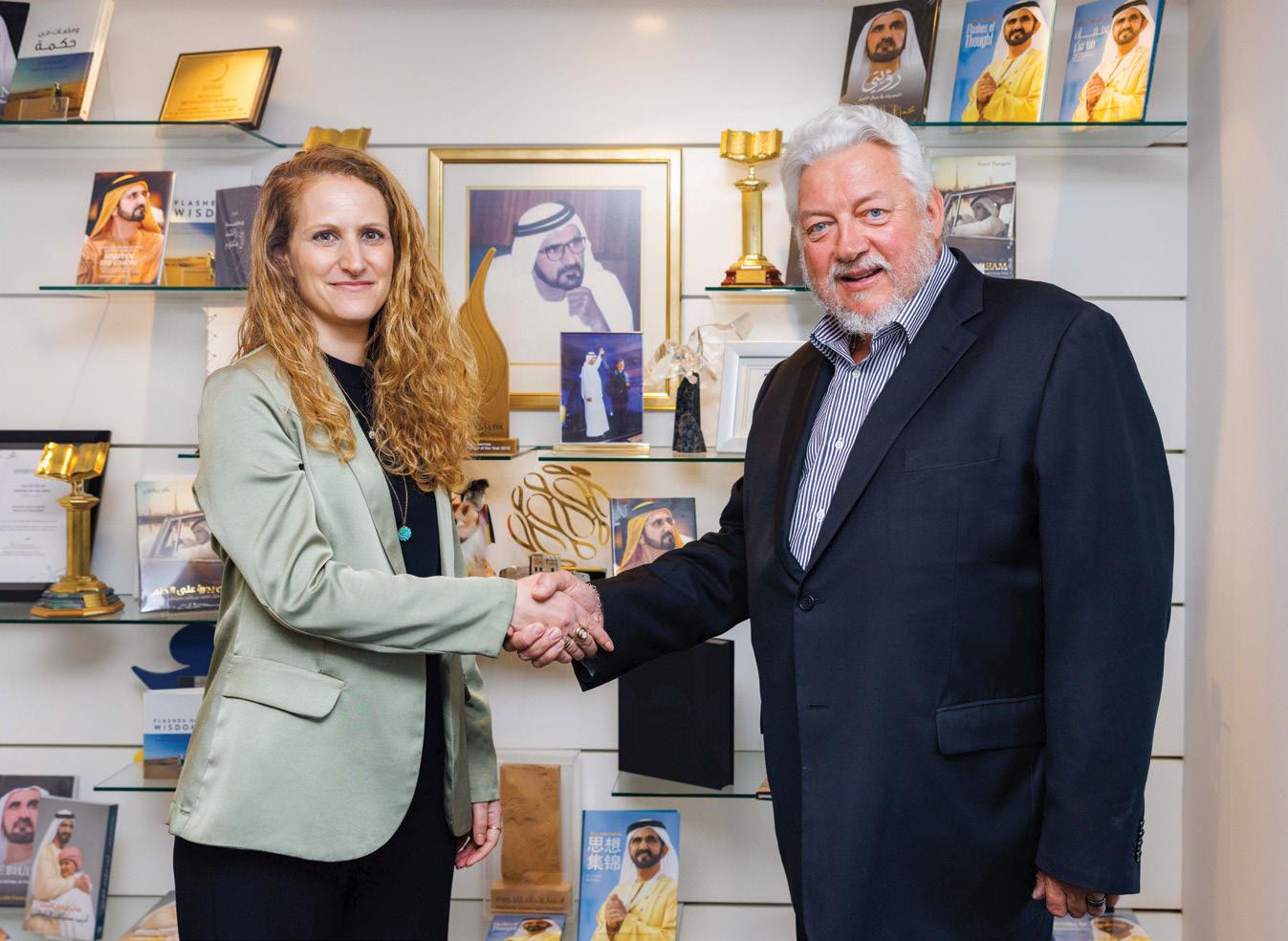
The Comprehensive Economic Partnership Agreement (CEPA) between the UAE and Israel entered into e ect on April 1, 2023, the latest step in the two countries burgeoning relations since the Abraham Accords, which heralded greater economic and trade integration nearly three years ago.

Since the historic formation of diplomatic ties in September 2020, top o cials from the UAE and Israel have exchanged visits and signed several bilateral agreements. The two countries’ relationship has evolved swi tly over the years amid increased cooperation in the finance, energy, security, technology and water security sectors. The UAE and Israel seek to advance bilateral non-oil trade

from the $1.3bn recorded in 2021 to $10bn by the end of the decade. The two countries are also expanding their ties beyond bilateral trade.
Speaking to us at the Motivate Media Group o ces, Zaslansky weighed in on the strengthening relationship between the UAE and Israel, trade and economic opportunities between the two countries and the development in priority sectors, including healthcare, agritech, advanced technologies and energy. Here are excerpts from the discussion.
Relations between the UAE and Israel have gone from strength to strength since the signing of the Abraham Accords
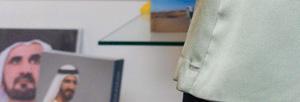

almost three years ago. Which are the areas that have benefitted the most because of stronger ties between the two nations?
The establishment of diplomatic ties between Israel and the UAE is creating strategic opportunities in almost every aspect of the non-oil economy from tourism and aviation to finance and technology among others.
The trade figures between the two countries, which smashed expectations in 2022, have been phenomenal even before CEPA came into e ect.
Going forward, tourism will remain the fast-growing and one of the best-performing industries following an agreement to increase daily flights between Israel and UAE, the inauguration of visa-free travel and the opening of kosher restaurants to cater to the growing Jewish population in Dubai and Abu Dhabi. On the cooperation front, there’s growing collaboration between companies and institutions in both countries across all sectors.
What does the opening of the Abrahamic Family House in Abu Dhabi represent to the Jewish community in the UAE and Israel? Why is it key to promoting the message of amity, tolerance and peace?

The Abrahamic Family House opened its doors to visitors on March 1, 2023. The opening of the multi-faith place of worship holds historical significance as the home of the first purpose-built synagogue in the UAE and the first built in the Arab world in nearly a century.
It demonstrates the UAE leadership’s deep commitment to coexistence and tolerance, which are among the leading values of the country and are at the heart of the Abraham Accords.
The multi-faith place of worship has the potential to be something greater: a global centre for pluralism, culture, education and engagement; a centre for interfaith education, research and engagement; a place that creates links between Jewish, Arab and Christian communities in the UAE, across the Arab world and globally. To the Jewish World, the Abrahamic Family House is a place of tolerance and a place where everyone can feel at home.
Tell us about the collaboration and knowledge sharing between leading Israeli and UAE institutions. Give us some examples.
There is growing collaboration between Emirati and Israeli organisations, companies and institutions since the signing of the Abraham Accords in 2020.
KSM Maccabi signed multiple MOUs with di erent leading health entities in the UAE with a joint goal to bring new knowledge to the world. Together with those entities they will expend research in multiple domains such as big data research, genetics and clinical trials and will bridge the entire ecosystem to a much more diverse population
The UAE and Israel are the strongest innovation hubs in the Middle East. Israel has a vibrant tech ecosystem such as the country’s drip agriculture micro-irrigation which bonds well with the UAE’s push to drive development through innovation.
Cooperation between Israeli and Emirati entities is yet to expand into the education sector

and going forward we hope to see more collaboration between universities in basic research, applied research and joint development.
The UAE ratified its CEPA with Israel in March. How will the two countries benefit from the removal of trade tariffs?
Israel and the UAE signed the CEPA into e ect earlier in April, removing tari s on about 96 per cent of goods traded between the countries.
In addition to the removal of tari s, Israeli companies will gain access to government tenders in the UAE, a positive move that will create more industries and areas of cooperation between businesses from the two nations.
Which sectors (in addition to software, diamonds, defence and security) do you expect will benefit from the CEPA?
CEPA also will reassure investors on both sides regarding the stability of their financial transactions, and therefore increase
investments in startups, private equity etc. in various sectors, such as energy, finance, water and healthcare.
There are also opportunities on the logistics front as well and Israeli companies that ship through Dubai benefit from significant cost savings.
The bilateral trade of goods between the UAE and Israel in January this year reached $264.4m compared to $138.9m in January 2022. With this robust rise, how do you envision the volume of trade growing in 2023 and beyond?
The bilateral trade of goods (excluding so tware) between the UAE and Israel for the first two months of the year, rose by 76.5 per cent to $540.6m compared to $306.2m for the same period of 2022. Bilateral nonoil trade between the two countries reached $2.49bn in 2022, up 90 per cent from 2021 figures while re-exports from Israel grew by 71.2 per cent and non-oil exports to Israel surged to 48.6 per cent.
With the CEPA coming into e ect, the value of bilateral trade between the two countries is expected to more than double what has been achieved since the signing of the Abraham Accords. We are eagerly waiting to see half-year statistics in June to examine the impact of the free trade agreement and the trajectory that bilateral trade between the two countries is going forward, with the UAE’s Ministry of Economy projecting that trade will be doubled in the next five years.
In 2022, we forecasted that trade between Israel and the UAE would cross the $2bn threshold but instead, trade eclipsed our projections to close the year at $2.57bn and this trajectory will continue to grow.
Are
challenges
face when trying to establish operations in either of the two countries?
Challenges come with every new relationship. The business culture in the two jurisdictions is di erent, there are di erences in regulations and other related issues that require the attention of the
GOING FORWARD, TOURISM WILL REMAIN THE FAST-GROWING AND ONE OF THE BEST-PERFORMING INDUSTRIES FOLLOWING AN AGREEMENT TO INCREASE DAILY FLIGHTS BETWEEN ISRAEL AND UAE”THE UAE AND ISRAEL SEEK TO ADVANCE BILATERAL NON-OIL TRADE FROM THE $1.3BN RECORDED IN 2021 TO $10BN BY THE END OF THE DECADE
respective governments and relevant institutions. The mutual recognition of driver’s licences in the two countries came into force in March, making it easier for Israelis to come and drive themselves in the UAE – this is just a small example. So, Israeli businesses who open here and conversely, UAE businesses who open in Israel have both shared how helpful people have been on both sides which has led to seamless set up experiences.
Companies and entities are receiving assistance from authorities such as the Dubai International Financial Centre where the Consulate General of Israel in Dubai is located.



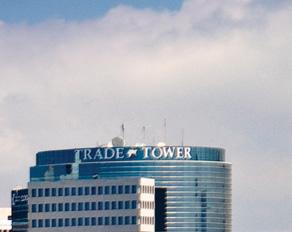
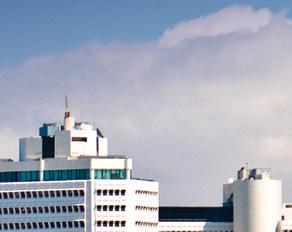
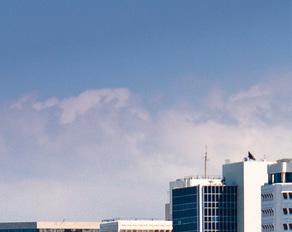
One of Israel’s biggest digital payments firms Rapyd opened its doors for business in Dubai in December 2021 and a year later, Israeli chef Eyal Shani brought his North Miznon brand to the UAE. These are the success stories that we are sharing with other companies and startups that are considering expanding into the GCC market.
There are currently 16 daily flights between Israel and the UAE. In your opinion, how has this bolstered tourism and aviation in both countries?
The 2020 Abraham Accords opened up travel and tourism between the UAE and Israel. The latest data from Dubai Tourism shows that the number of visitorsfrom Israel increased by 212 per cent to 85,000 in the first two months of the year.

THE LATEST DATA FROM DUBAI TOURISM SHOWS THAT THE NUMBER OF VISITORS FROM ISRAEL INCREASED BY 212 PER CENT TO 85,000 IN THE FIRST TWO MONTHS OF THE YEAR
Abu Dhabi received a significant number of Israeli tourists during the same period with 9,000 visitors checking into its hotels – the 11th-largest source of visitors to the city and 1,000 behind Saudi Arabia. The flights between Israel and the UAE are always full. Israel is looking forward to welcoming more tourists from the Emirates to Israel.
Oman recently opened its airspace to Israeli airlines in February, how do you see this development benefitting Israel’s aviation sector and economy?

The signing of the Abraham Accords opened the GCC airspace to Israeli carriers, which has reduced flight time for Israeli travellers going to destinations in Asia. First was Saudi Arabia which opened its airspace to all airlines in July 2022 and the historic move by Oman is expected to pave the way for Israeli carriers such as El Al Israel Airlines (El Al), Israir and Arkia to expand deeper into the Southeast Asia market such as Japan.
Beyond shortening current flight times, the opening of Oman’s airspace will potentially allow Israeli airlines such as flag carrier El Al to explore new routes to Australia and restart flights to India from its hub at Ben Gurion International Airport. It will also reduce the cost of doing business for Israeli companies considering expanding in Asian and Oceania markets.

IN 2022, WE FORECASTED THAT TRADE BETWEEN ISRAEL AND THE UAE WOULD CROSS THE $2BN THRESHOLD BUT INSTEAD, TRADE ECLIPSED OUR PROJECTIONS TO CLOSE THE YEAR AT $2.57BN AND THIS TRAJECTORY WILL CONTINUE TO GROW AND IT WORKS”

The UAE has long been known for its businessfriendly policies and tax-free environment. Following the introduction of VAT back in 2018 and corporate tax being rolled out starting in June 2023, UAE businesses and investors are getting used to the new reality – tax is here and it’s here to stay.
While some industries have had exposure to tax at an emirate level, most UAE businesses had to ensure that their accounting and reporting systems are able to capture the necessary data and produce accurate tax returns to enable them to comply with the reporting requirements.
Tax considerations are essential in a transactional context. In jurisdictions with developed tax regimes, tax implications are a priority when contemplating an M&A transaction or corporate restructuring. Not considering tax from the outset can be a costly oversight. M&A transactions involve complex legal and financial arrangements that can span multiple countries and therefore, consequences of efficient tax structuring (or lack of) can reverberate across various jurisdictions. In the UAE, companies will have to consider the tax implications of
their deals, including the impact on their financial statements, cash flows, and tax obligations. UAE corporate tax structuring will have its own challenges, given the difference in treatment between free zone entities and mainland entities, and requirements around tax holidays afforded to free zone companies.
Companies will also need to evaluate the tax treaties that are relevant to their operations and transactions (including double taxation treaties) to ensure that they are able to take advantage of any relief provisions.
For M&A transactions, the tax residency of the target company will be a critical factor in determining the tax implications of share deals. In transactions involving asset acquisitions, the tax liability will be based on the location of the assets. Buyers will need to evaluate the tax status of the target company or target assets, and consider whether any restructuring is required to optimise tax efficiency. This may involve restructuring the target company’s operations, such as moving its intellectual property or other assets to a tax-efficient jurisdiction (this may, in the UAE, be a free zone).
Similarly, restructurings, such as mergers or spin-offs, may trigger tax liabilities under the new regime. Companies must evaluate the tax implications of any restructuring and ensure compliance with the new tax laws. For example, companies may need to restructure their debt or equity to ensure that any tax liability exposure is optimised.
The new corporate tax may also impact company valuations. Potential investors will need to consider the impact of the tax on company’s profits and cash flows, which may affect valuations. This may lead to a decrease in the value of companies that are subject to the corporate tax, particularly if the tax rate is higher than the rates in other jurisdictions.
It is inevitable that at times tax disputes will arise, and companies will need to be prepared to deal with such events and engaging with reputable, competent advisers will be essential. Companies have the right to appeal any decisions made by the tax authorities. The UAE has established a specialised court for tax disputes.

It will be interesting to see how the introduction of the corporate tax in the UAE will impact the country’s economy. The country has been a hub for business and investment in the region, and its tax-free environment has been a key factor in attracting businesses to the country. Investors committed to the region are unlikely to be discouraged by the introduction of this new tax, especially given the favourable rate and the various options for tax optimisation that they will have at their disposal. The government has indicated that the revenue from the corporate tax will be used to fund public services and infrastructure projects in the UAE. This will likely have a positive impact on the country’s economy, as the increased revenue will likely lead to improved infrastructure and services, which may attract further investment and business.
In conclusion, while the new tax regime may add complexity to transactions, it may also provide new opportunities for businesses to optimise their tax strategies and improve their overall financial performance. It will be interesting to see how businesses in the UAE adapt to the new tax regime and how it will shape the future of the country’s economy.
Navigating the complexities of M&A transactions and restructurings in the face of UAE’s corporate tax
SHOWCASING THE WORLD’S MOST AND LEAST POWERFUL PASSPORTS IN 2023










Just 6 per cent of passports worldwide give their holders visa-free access to more than 70 per cent of the global economy. Only 17 per cent of countries give their passport holders visa-free access to more than four-fifths of the world’s 227 destinations



SINGAPORE


Visa-free score: 193


Visa-free score: 191
Visa-free score: 192


THE US REMAINS ONE OF THE MOST SOUGHT AFTER DESTINATIONS FOR INVESTORS. THE US EB-5 IMMIGRANT INVESTOR PROGRAM OFFERS AN EFFICIENT ROUTE TO PERMANENT RESIDENT STATUS (A GREEN CARD) IN A SHORT PERIOD OF TIME





THE ITALY RESIDENCE BY INVESTMENT PROGRAM ME
INVESTMENT
Minimum investment from EUR250,000 to EUR2M



















PROCESSING TIME
Three–four months
As a globally recognised tourist destination with major cities including Milan, Rome, and Venice, Italy offers investors access to a strong, well-connected EU market and the many opportunities available in the region

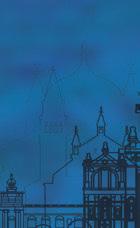

KEY BENEFITS


The right to live, work, and study in Italy




The UAE leads the region in the index with its passport holders allowed easy access to 178 destinations around the world





16th Ranking in 2023
UNITED ARAB EMIRATES



178 Visa-free destinations
In a highly unpredictable and volatile world, economic mobility and cross-country visa-free access to more stable economies helps investors mitigate risk and secure additional income streams. For investors from countries with poor visa-free access, the global mobility and economic advantages and opportunities associated with acquiring a more powerful passport are indisputable”


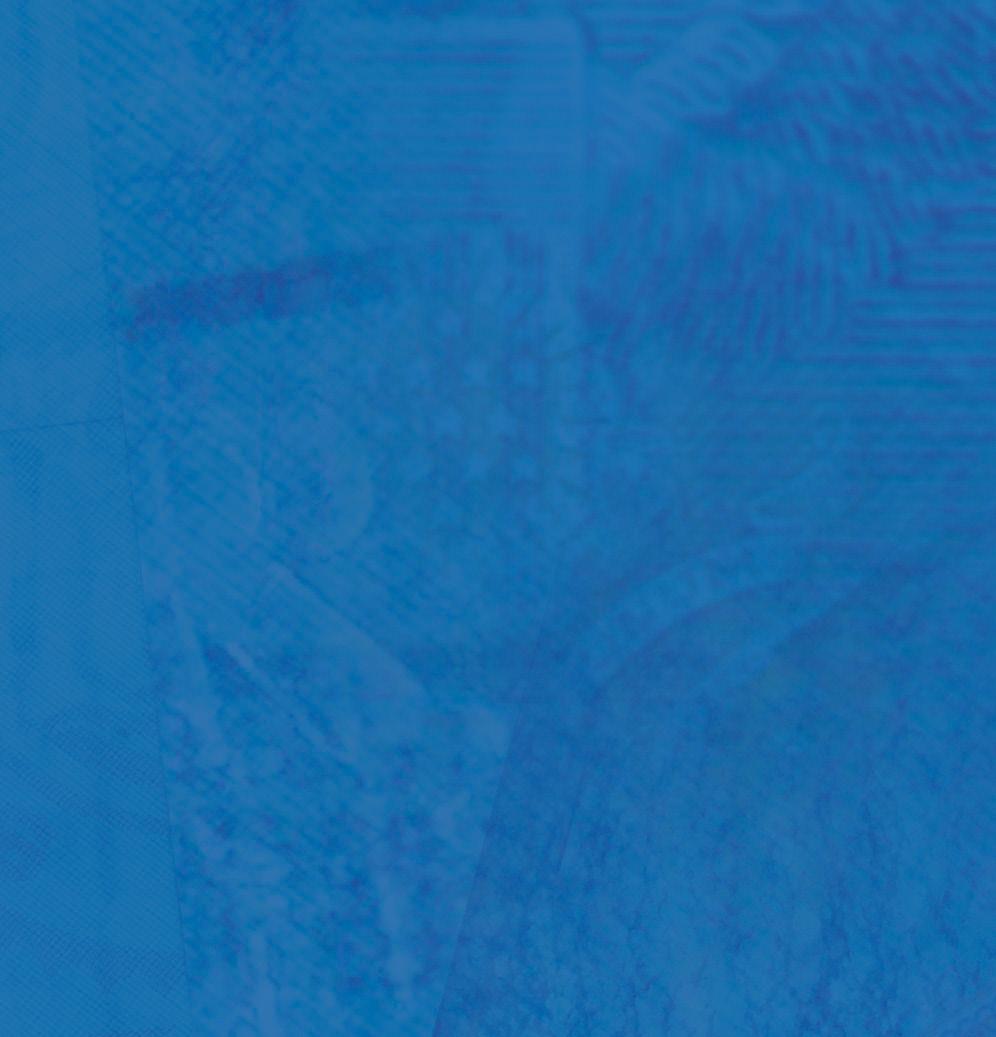

Dr Juerg Steffen, CEO of Henley & Partners
111 Visa-free destinations












PASSPORT RANKINGS OF COUNTRIES HOSTING CITIZENSHIP BY INVESTMENT PROGRAMMES St. Kitts and Nevis 26th

56th Ranking in 2023 QATAR
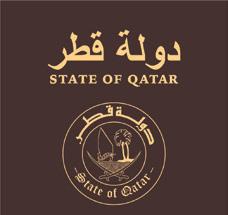
100 Visa-free destinations
57th
Ranking in 2023 Ranking in 2023

53rd TÜRKIYE KUWAIT
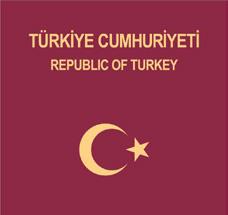
97 Visa-free destinations
Antigua and Barbuda 31st St. Lucia 32nd Grenada 33rd Dominica Malta 8th
North Macedonia 45th Türkiye 53rd Jordan 89th 34th

61st Ranking in 2023 BAHRAIN
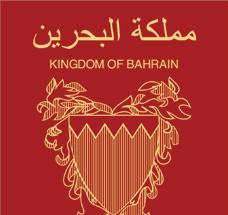

87 Visa-free destinations
US ANALYSTS ANTICIPATE...
THAT KUWAIT AND QATAR WILL SIGN A VISA-FREE DEAL WITH THE EU THIS YEAR — A MOVE THAT WILL DRAMATICALLY ENHANCE BOTH COUNTRIES’ SCORES, AS THEIR PASSPORT HOLDERS WILL BE GRANTED VISA-FREE ACCESS TO ALL 27 EU MEMBER STATES

Muslim worshippers offer prayers around the Kaaba, Islam’s holiest shrine, at the Grand Mosque, in Mecca, Saudi Arabia on the first day of Eid al-Fitr, which marked the end of Ramadan and a month-long period of fasting on April 21, 2023.


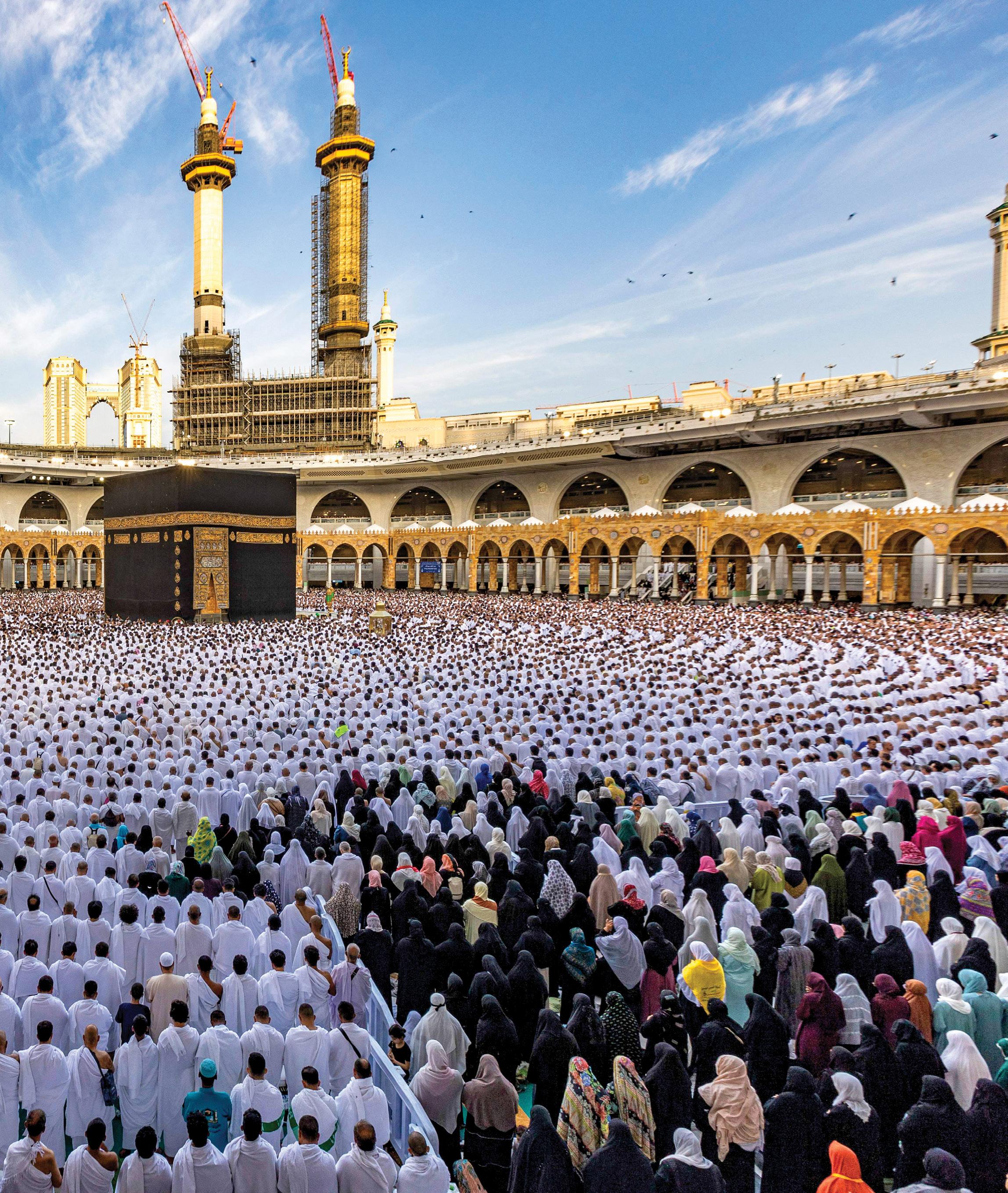
AS EEMEA PRESIDENT OF MASTERCARD, DIMITRIOS DOSIS LEADS OVER A THIRD OF THE MARKETS WHERE THE TECHNOLOGY COMPANY OPERATES. HERE, DOSIS TALKS TO GULF BUSINESS
ABOUT HOW MASTERCARD IS GROWING THE DIGITAL ECONOMY AND SERVING THE NEEDS OF COMMUNITIES ACROSS ITS MARKETS
WORDS: KUDAKWASHE MUZORIWA
PHOTOS: MARK MATHEW
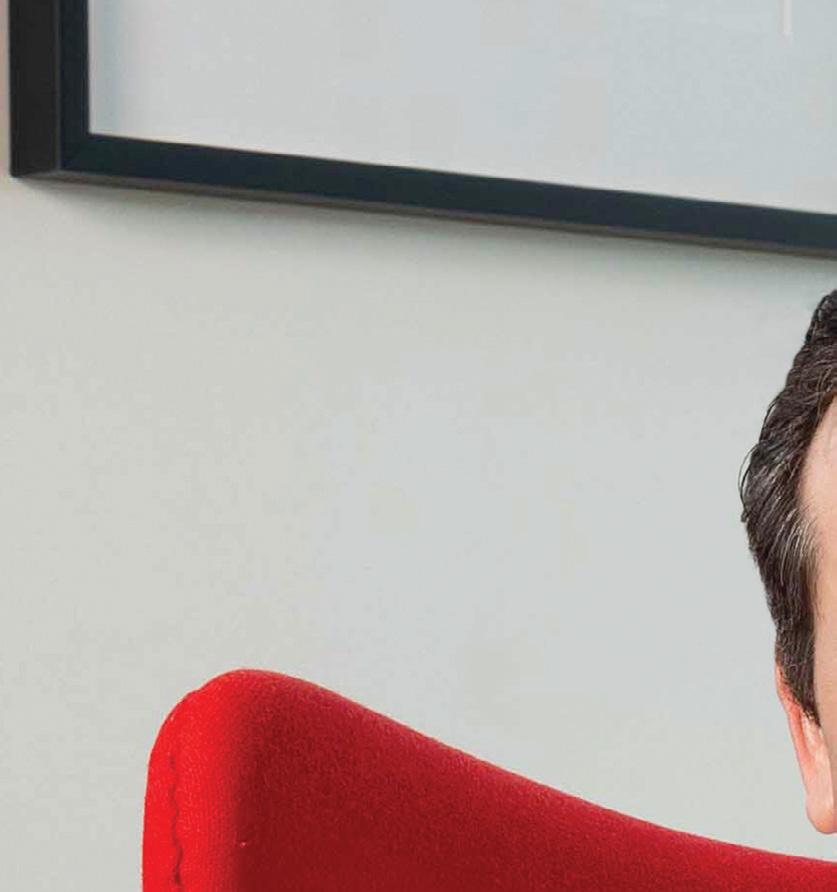



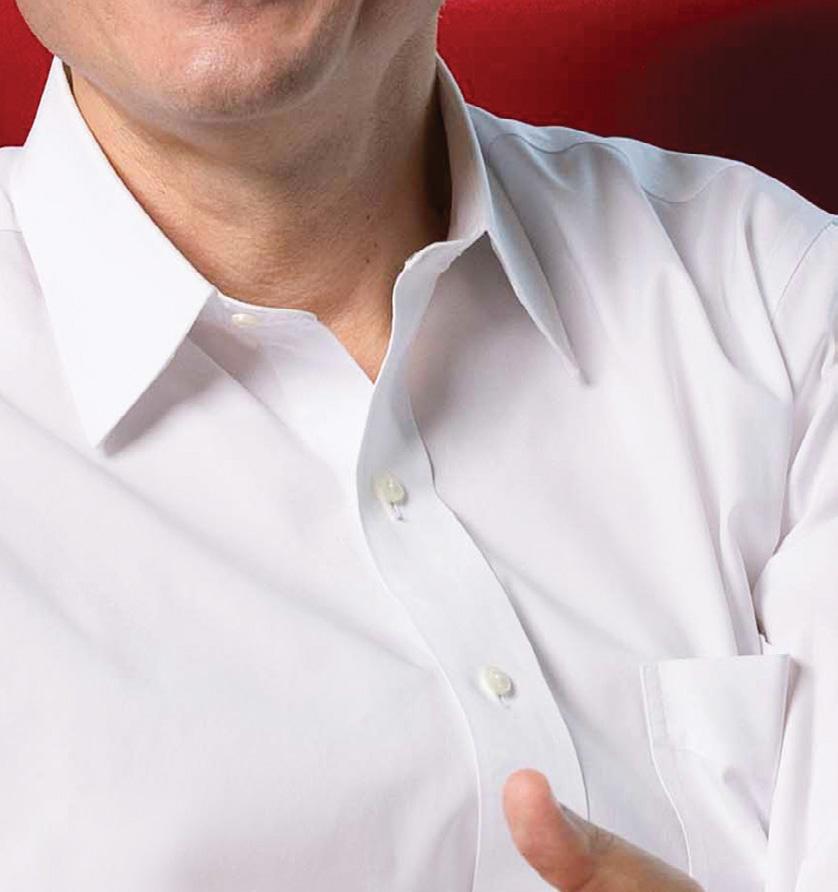

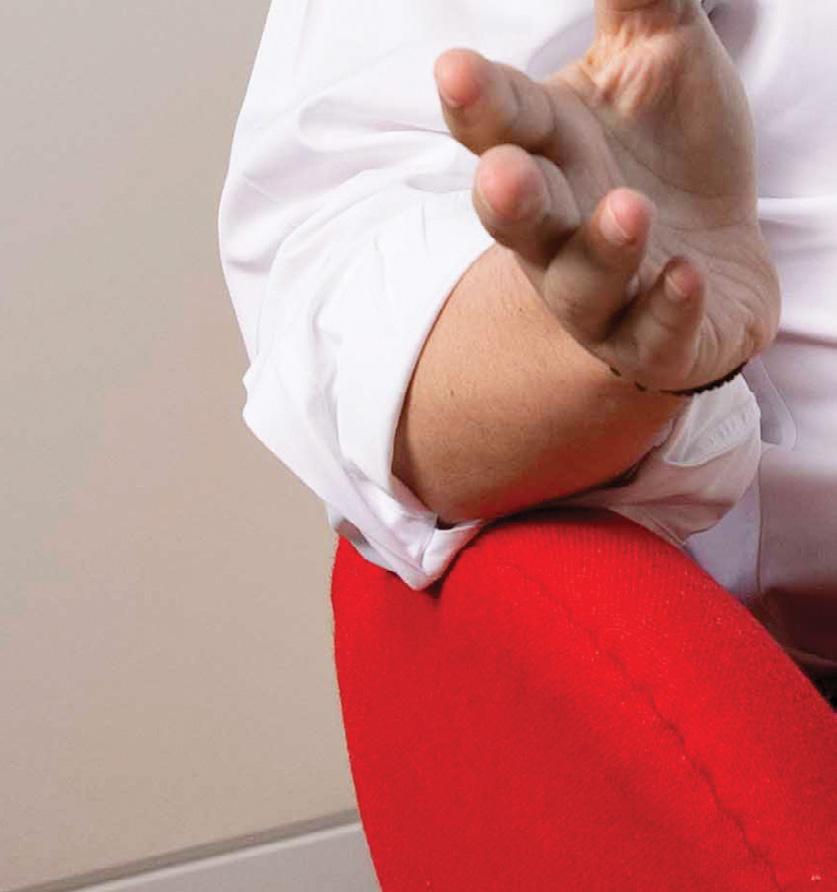




Leading a region as diverse as Eastern Europe, Middle East and Africa (EEMEA) is a role for someone bold, decisive and interested in how di erences can add value and create advantage for the many, rather than the few. The region is also home to 41 of the world’s 100 fastest-growing economies, so you need a leader who gets things done at speed, without compromising on standards.
Dimitrios Dosis is that person – overseeing 81 of Mastercard’s 210 markets, as president.
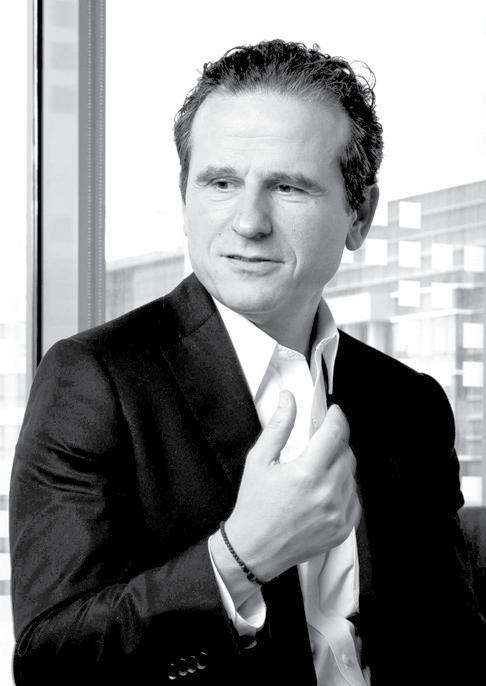

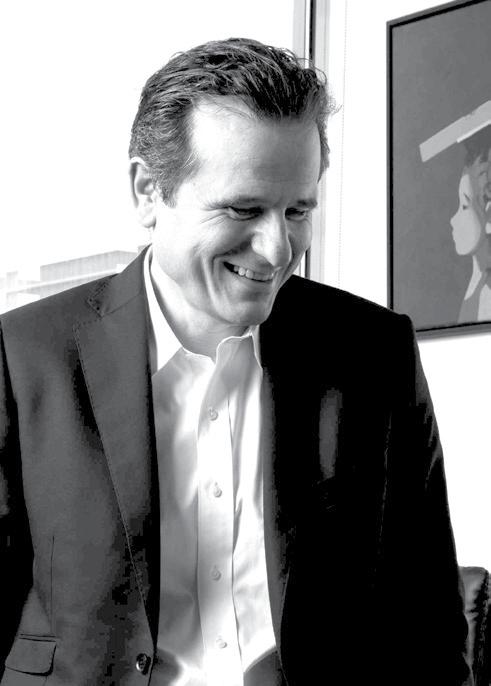
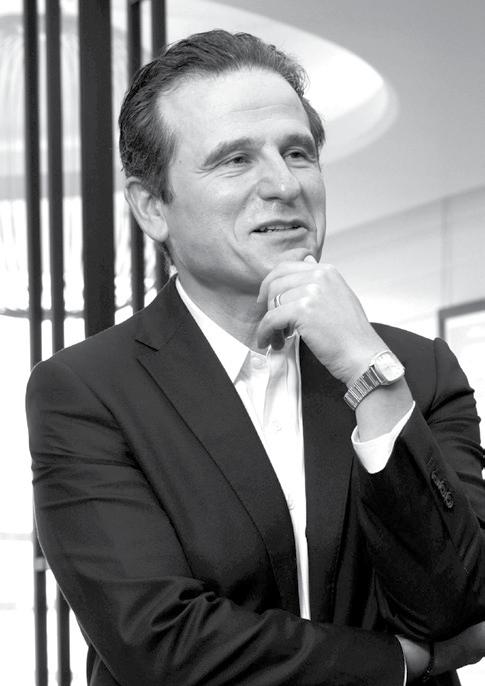


The EEMEA region has emerged as a focal point for Mastercard’s global innovation, digital transformation and financial inclusion e orts in recent years. Today, this melting pot serves as a launchpad for deploying strategic partnerships, non-traditional collaborations, and new business models in the payments industry across Mastercard’s extensive global network.
The EEMEA payments industry has demonstrated resilience in 2022, with the economic downturn, high inflation and soaring interest rates altering consumer and business behaviour and, consequently, payments dynamics.
Changes in the payments space are creating new opportunities for service providers in the region to develop new solutions and claim market share. EEMEA is certainly a diverse region, and that very diversity generates some of the most exciting opportunities.
The region is home to a young population, which goes hand-in-hand with an appetite for exploring new innovations and o ten, a high degree of tech savviness. Dosis says the youth segment in the EEMEA region o ers a massive opportunity, not just for Mastercard, but for everyone. “This is where progress can make an impact swi tly. It’s where the momentum starts,” he adds.
“Technology is evolving at a rapid speed, and our region is well on its way to becoming one of the most digitally connected in the world,” says Dosis. Still, the individual markets are quite di erent, and this is where localisation and tailor-made solutions can make the difference. Dosis highlights that pulling standard solutions o a global shelf doesn’t cut it. However, being present in the markets where customers are, listening to pain points, understanding user journeys and being open to co-creating solutions, are essential, he says.
According to Mastercard New Payments Index 2022: Consumers in MENA Embrace Digital Payments report, 85 per cent of people in the MENA have used at least one emerging payment method, 64 per cent increased their use of digital payment methods and 19 per cent used less cash in 2021.
Of course, where there are opportunities there are also challenges. Dosis sees geopolitical tensions, rising nationalism, healthcare concerns, inflation, supply chain issues, and rising climate change worries having widespread implications across the EEMEA region.
The fact remains that there will always be challenges, but Mastercard is leveraging the power of technology to prepare for the challenges while enabling collaboration across the ecosystem to position for mutual growth ahead.
Collaboration and innovation are at the heart of Mastercard’s progress and Dosis says the company places a strategic focus on the importance of partnerships with both private and public sectors, across industries.
These partnerships include Mastercard’s alliance with e& in the UAE. Dosis says the technology group is forging an ambitious digital transformation journey that the payments company will support by integrating digital payment services in a way that adds value and enhances user-friendliness in 16 markets.
According to Dosis, this is where governments can also play an especially important part. “We’ve partnered with governments across the region, sharing our expertise and technology solutions to help digitise their economies and positively impact the welfare of citizens and residents.”
In Jordan, Mastercard joined hands with the Greater Amman Municipality (GAM) and Network International earlier this year to roll out the country’s first transit payment ecosystem. It will enable seamless digital payments across the GAM-operated public transport network, powered by Mastercard’s Payment Gateway Services.
Additionally, Mastercard’s other collaborations in Egypt and Saudi Arabia are great examples of how the payment solutions firm can support the development of country-wide digital ecosystems. Overall, Dosis is seeing encouraging trends across the Middle East that present a significant chance to reimagine how we can use technology and drive partnerships for the greater good.
Dosis stresses that as a trusted partner of governments, the company is collaborating on use cases such as transit, education, infrastructure, wage digitisation, welfare disbursements, bill payments via WhatsApp and the development of interoperable payment systems.
“We have been shi ting from a product-centric to solution-centric organisation. In this process, Mastercard has evolved into a multi-faceted brand innovation partner with a wide range of competencies and capabilities, which are benefitting retailers, travel companies, governments, fintech startups and others,” adds Dosis.


The digital payments space had gained significant traction in the EEMEA region before the shi t to the ‘digital-first’ approach that gained prominence a ter the outbreak of the pandemic three years ago.
According to Dosis on the one hand there is the ongoing acceleration in technology and on the other there’s the fact that customers want choice.
Blockchain technology is democratising finance while data analytics are adding insights that are informing business decisions with greater precision.
“Mastercard’s multi-rail strategy is the way we approach this and the way we make sure we transfer value in new ways beyond a card. We do this by advancing capabilities such as e-commerce, QR codes, account-toaccount transactions, B2B payments, click-to-pay and buy-now-pay-later solutions,” says Dosis.
Cross-border remittances are especially important in the Middle East to keep people connected and communities supported. Today, Mastercard’s cross-border services connect 90 per cent of the world’s population via bank accounts, digital wallets, cards and cash agents.
Mastercard remains committed to leveraging innovative technologies to develop new value propositions that are personalised and contextual, shaping the future of commerce, solving real problems and making people’s lives easier.
Besides their technical benefits, digital payments are key enablers of economic growth and financial inclusion.
“These days, when we talk about the economy, it’s increasingly a reference to the digital economy, as this is where value is being moved. As a result, digital inclusion is necessary for financial inclusion,” asserts Dosis, adding that financial inclusion is critical because it’s an essential step towards financial security.
As a responsible company, Mastercard is intricately aware that technology needs to be directed in the right ways so everyone can benefit from it, not just a few. When it supports financial inclusion, it drives scale and generates shared growth, ultimately leading to financial security for more people. That’s why the company pledged to bring one billion people globally into the digital economy by 2025.
Mastercard has been working to bridge the financial inclusion gap through a broad range of e orts, including partnerships with telecommunications companies, ongoing work on government disbursement solutions, wage digitisation of private sector workers and scaling e orts with mobile network providers via their digital platforms and digital wallets.
Given the importance of small businesses to both economic growth and community welfare, Dosis says the company unveiled its ambitious plan to connect 50 million SMEs to the digital tools and insights that will enable them to grow nearly three years ago. Mastercard’s strategy seeks to benefit 25 million female entrepreneurs.
Small businesses are the backbone of communities and the engine of economies, which is why Mastercard is committed to empowering them with what they need to thrive.
“Bringing this commitment to life happens in many ways. Like our Tap on Phone solution, which transforms a phone into an acceptance device,” says Dosis. “Solutions such as pay-on-demand can place an a ordable mobile device into the hands of those who don’t yet have a way to engage in the digital economy, especially relevant in emerging economies. And in more mature
We've partnered with governments across the region, sharing our expertise and technology solutions to help digitise their economies and positively impact the welfare of citizens and residents"
economies of the Gulf, we focus on co-creating solutions that enable greater financial security for people and small businesses.”
Dosis highlights that it is great to see many countries in the region embracing the innovation that is making all sorts of things possible, including wider inclusion. However, he notes that the critical part that holds everything together is trust.
“It’s a key point on any digital transformation agenda and rightly so, because at the end of the day, you simply can’t do business without trust,” says Dosis.
The proliferation of digital payments and e-commerce over the years has led to increased cybersecurity risk exposure as cybercrime and malicious hacking cases have intensified over the past three years.
Dosis notes that cyberthreats and cyberattacks are real and global geopolitical instability elevates these risks. “It’s essential to be prepared,” he says while applauding GCC countries that have strong cybersecurity defences in place such as Saudi Arabia and the UAE – both of which rank high on the Global Cybersecurity Index.
“At Mastercard we are committed to investing in solutions and forming partnerships that instil trust, securing every transaction and every interaction. We are constantly strengthening our capabilities in artificial intelligence and machine learning to fight fraud and enhance real-time intelligence,” says Dosis.
According to recent estimates, the current worldwide cost of cybercrime is $6tn, accounting for 1 per cent of the global GDP and the estimated cost is set to rise by $4.5tn in the next few years. The use cases for artificial intelligence (AI) and machine learning are everywhere, including fraud prevention. It is predicted that AI will be worth $320bn in the Middle East by 2030. Similarly, innovations in biometrics mean one can now pay with a smile or a wave of a hand in several of Mastercard's
markets. Solutions such as Mastercard Cyber Secure, an AI-powered suite of tools, allow banks to assess the cyber risk across their ecosystem and prevent potential breaches. Partnerships also contribute to a more secure future and Mastercard is collaborating with the Dubai Financial Services Authority’s Threat Intelligence Platform to help boost cyber resilience across the Middle East, Africa and South Asia.
For Dosis, data responsibility is a key component of creating a trusted business environment and Mastercard’s philosophy is simple. “When it comes to your data, you own it, you control it, you should benefit from it and we protect it,” he says adding that companies have a responsibility to act for the greater good as creators and guardians of safe digital networks that increase business confidence and drive trust in digital commerce.
Because cyber-breaches are largely motivated by financial gain, businesses are a major target for attacks, putting them at risk of financial loss, reputational damage and more.
The future of payments belongs to companies that can harness the power of technology, ecosystem participation and operating model renewal to drive new value propositions. For Mastercard, successful transformation is as much about adapting as it is about diversifying.

The company’s portfolio of integrated services and solutions is generating new business, deepening customer engagement, driving loyalty, protecting digital systems, enhancing decision-making, providing insights and creating new opportunities beyond payments.

Dosis believes that plenty of choices, personalisation and seamless interaction are just the start. “Decades ago, you might have thought about Mastercard as a card company, and in more recent years as a technology company. Today, Mastercard is adding value in many places, to several stakeholders, in ways that are both unusual and imaginative.”

At Mastercard, we are committed to investing in solutions and forming partnerships that instil trust, securing every transaction and every interaction. We are constantly strengthening our capabilities in artificial intelligence and machine learning to fight fraud and enhance real-time intelligence"
Take e-sports and gaming, for example. In the MENA region, the gaming industry is predicted to grow three-fold in just two years to hit the $5bn mark by 2025. It presents almost infinite potential, blending entertainment, art and commerce.
“Through a partnership with the Saudi Esports Federation, Mastercard is innovating across augmented reality activations, NFTs and fans’ loyalty solutions. Earlier this year, Saudi National Bank joined the partnership and together three entities seek to tap into Web3 technology to o er gamers the opportunity to access immersive experiences in the physical and digital world,” adds Dosis.
The overall momentum for social responsibility in business, which is o ten characterised under the environmental, social, and governance (ESG) banner –is also changing the context for payments.

For Mastercard, making a meaningful impact not just today and tomorrow but as a continuing legacy matter.
“When we look at ESG we’re thinking about how we connect the ‘why’ of what we do, in other words, our purpose, to the ‘what’ of our fundamental business strategies. You’ll o ten hear us talking about ‘doing well by doing good’ and that’s how we keep our ESG focus connected, activated, and aligned to our business strategy,” says Dosis.
The future of the environment is at a major inflexion point and with COP28 in the UAE this year, Dosis is expecting scaled-up action across the private and public sectors. With Mastercard’s EEMEA headquarters in the UAE, Dosis and his team plan to be a key voice and active participant in advancing change.
Reaching net zero by 2040 is a commitment that Mastercard takes seriously and Dosis is confident that
the company can achieve this target. “We know we need to keep innovating together to stay on track,” says Dosis.

Mastercard established its sustainability e orts more than a decade ago with a focus on financial inclusion, data responsibility and the environment.
The company’s ESG initiatives such as Sustainable Innovation Lab, Carbon Calculator and value chain collaboration are part of this journey. In April, Mastercard announced that from 2028, all newly–produced Mastercard plastic payment cards will be made from more sustainable materials – including recycled or biosourced plastics.
In addition to environmental e orts, Mastercard is also leading on the front lines of financial inclusion and driving progress in gender equality.
“A growing digital economy has to be inclusive and accessible to all. Exciting innovations such as The Touch Card facilitate easy transactions for those with visual impairments and it was great to have Ajman Bank in the UAE as our first global partner,” says Dosis.
Girls4Tech, the company’s award-winning programme designed to give more girls exposure to STEM subjects, is an important project that seeks to help diversify the tech sector and expand the contributions of women.
Over 3.5 million girls across the world have benefitted from the programme so far, including in countries such as Saudi Arabia – given the programme also runs in Arabic. “We are committed to diversity, equity and inclusion. At present, we already have pay parity in place and are working towards balanced gender representation at every level. Moving the needle on progress must be the incentive and that’s why Mastercard linked all employee bonuses to achievement of our ESG goals, sharing the responsibility, success, and recognition,” adds Dosis.
Mastercard says all these initiatives help to attract and retain key talent while encouraging stronger connections with customers, partners, investors, employees and governments. “It’s the right thing to do, and it’s also good for business,” concludes Dosis.
IN THE MENA REGION, THE GAMING INDUSTRY IS PREDICTED TO GROW THREE-FOLD IN JUST TWO YEARS TO HIT THE $5BN MARK BY 2025. IT PRESENTS ALMOST INFINITE POTENTIAL, BLENDING ENTERTAINMENT, ART AND COMMERCE







WORDS: KUDAKWASHE MUZORIWA

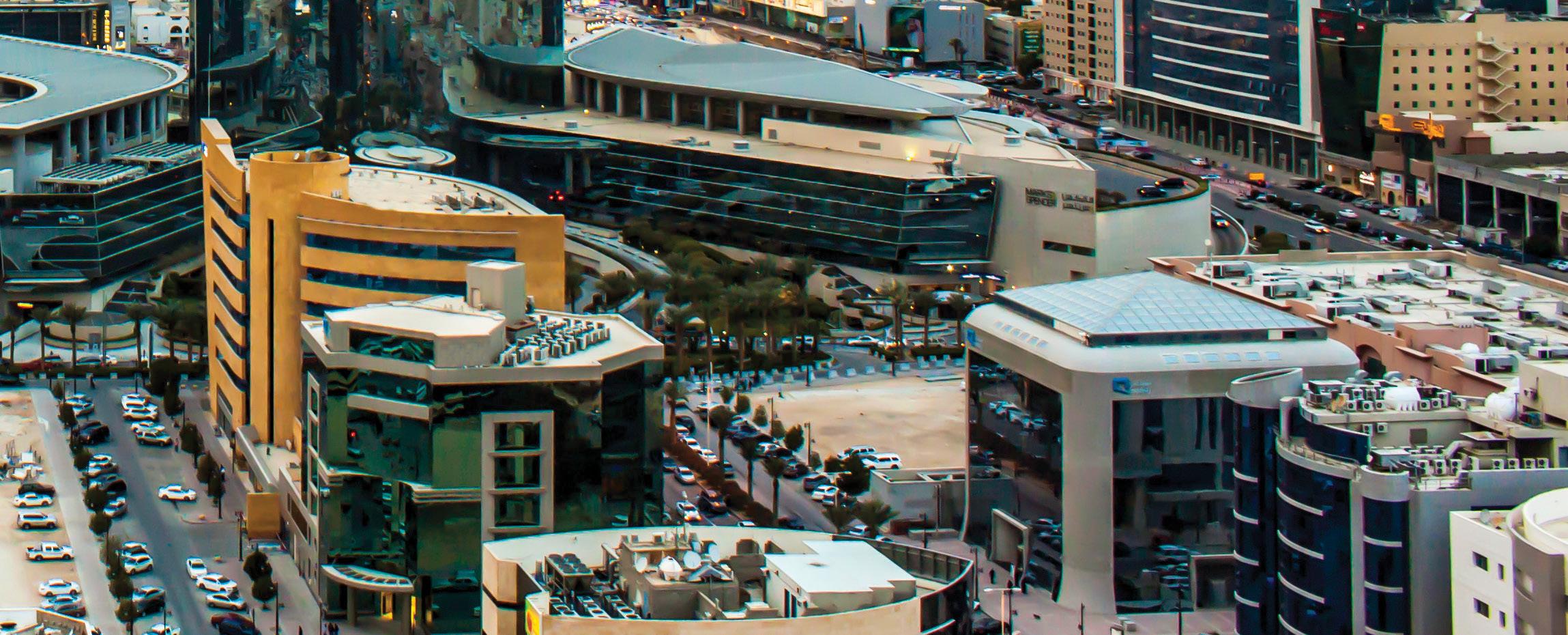
SAUDI BANKS STAND TO REMAIN ON A PROFITABLE PATH IN 2023 WITH CORPORATE LENDING CONTINUING TO DRIVE CREDIT GROWTH IN THE SECTOR


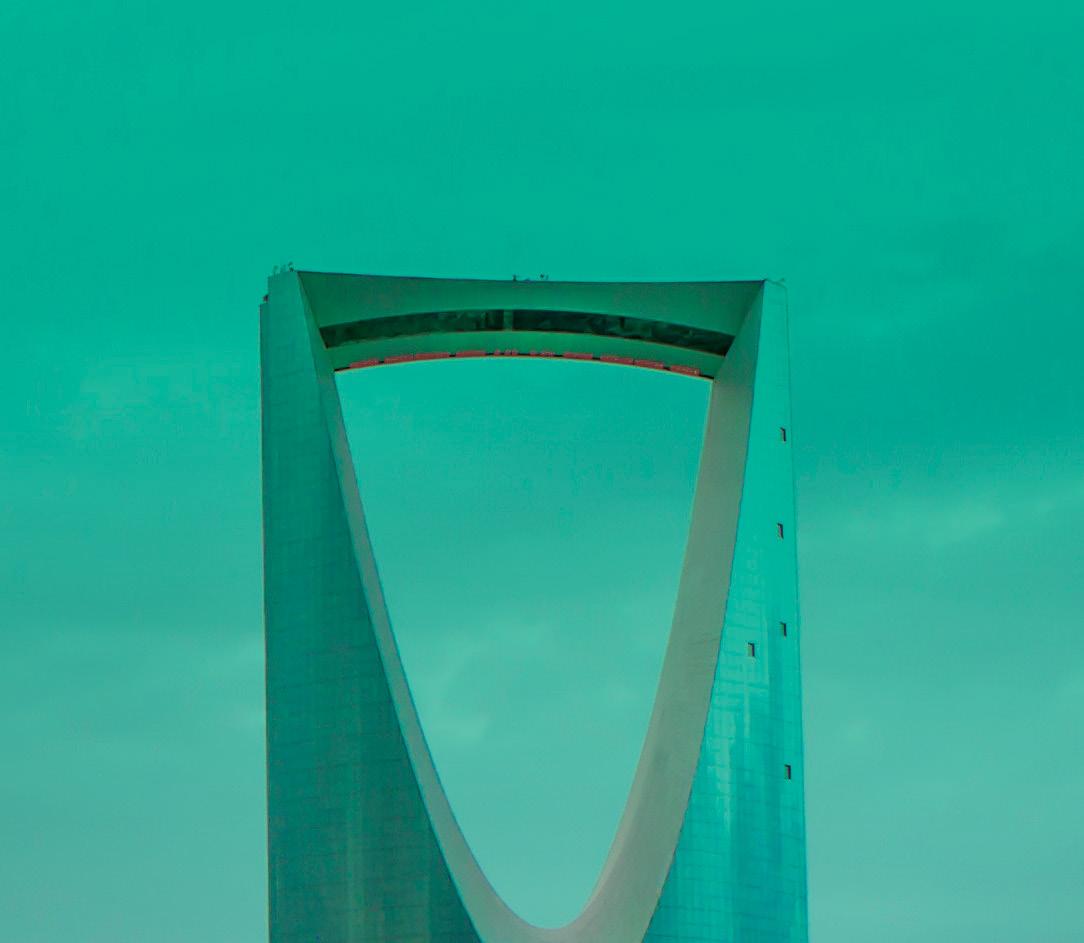



Saudi Arabia was the world’s fastest-growing among the ‘Group of 20’ (G20) countries in 2022, as sweeping reform momentum, a sharp rise in oil prices and improving economic conditions boosted the kingdom’s fiscal and external position.
Overall GDP crossed the $1tn mark for the first time in the country’s history last year – the highest among G20 economies. Despite Saudi Arabia’s reliance on oil and gas – which accounts for 70 per cent of the country’s total goods exports and total revenues – the government is leaving no stone unturned in its economic diversification strategy.
“The authorities’ continued implementation of Vision 2030 policies will help diversify and liberalise the economy and thus pave the way to more stable growth,” the International Monetary Fund said in November last year.
Since the launch of the National Transformation Program in 2016, the Gulf state has undergone a speedy economic transformation with a strong focus on foreign direct investment, tourism, technology and the financial services sectors.
The financial services sector is the lynchpin of Vision 2030, Crown Prince Mohammed bin Salman Al Saud’s economic blueprint to drive growth across non-oil sectors.
Saudi Arabia is building mega projects in the middle of the desert from scratch and bank lending has been driven almost exclusively by mortgages as the authorities seek to expand home ownership in the country.
A robust banking sector able to finance new industries is seen as key to e orts to boost the dynamism of the private sector and accelerate growth.
Banks in Saudi Arabia, like their GCC peers, recorded higher profits in 2022 on the back of improved operating conditions marked by economic recovery and the central bank’s move to tighten monetary policy.
Monetary policy in the kingdom is usually guided by the US Federal
Reserve (Fed), which looks set to stay the course on interest rate hikes in a continuing response to elevated inflation.
The Saudi Central Bank (SAMA) increased its key interest rates by 25 basis points to 5.5 per cent earlier in March in lockstep with the Fed.
“With the Fed expected to maintain the tight monetary policy in 2023 to combat inflation and SAMA likely to follow, interest rates are expected to remain high, portending favourably for the Saudi banking sector,” consultancy firm BCG Group said in March.
Federal Reserve rate-hiking cycles and their almost full replication by SAMA and other central banks in the Gulf region resulted in higher aggregate net interest margin (NIM) for the banking sector in 2022.
Fitch Ratings projected that profitability in the banking sector will remain underpinned by higher NIM, lower loan impairment charges and growth in non-interest revenues.
S&P Global echoed similar sentiments noting that net interest income – the di erence between interest revenues earned from lending activities and interest paid to depositors – at banks in Saudi Arabia soared last year as fi nancial institutions passed rate increases on to customers.
With strong supervision from SAMA, the financial sector remains resilient and the positive outlook on the kingdom’s rated banks mirror that of the sovereign.
Banks in Saudi Arabia started 2023 on a solid footing as the combined annual net profit of the top five banks in the country – Saudi National Bank
(SNB), Alrajhi Bank, Riyad Bank, Saudi Awwal Bank (SAB) and Alinma Bank –surged to $13.7bn (SAR51.2bn) in 2022.
SNB made a net profit of SAR18.6bn in 2022, up 46.7 per cent from the previous year, Alrajhi reported a 16 per cent rise in its annual net profit to SAR17.2bn, Riyad Bank’s full-year net profit surged by 16.5 per cent to SAR7.01bn while SAB posted net profits of SAR4.9bn, up 52.2 per cent from a year earlier and Alinma Bank’s annual net profit soared 33 per cent to SAR3.6bn.
“We consider the Saudi banks’ capital position to be strong. Profitability improved due to an increase in operating income which was further supported by lower impairments,” says Asad Ahmed, managing director and head of Middle East financial services at Alvarez & Marsal.
The Saudi riyal’s pegging to the US dollar all but eliminates foreign exchange risk, a most valuable trait in emerging markets (EM) at a time when faltering commodity prices present a risk to the EM FX asset class.
WE CONSIDER THE SAUDI BANKS’ CAPITAL POSITION TO BE STRONG. PROFITABILITY IMPROVED DUE TO AN INCREASE IN OPERATING INCOME WHICH WAS FURTHER SUPPORTED BY LOWER IMPAIRMENTS”




Mergers and acquisitions (M&A) among financial institutions in Saudi Arabia are expected to continue amid the push to create lenders with greater scale as banks look to boost revenue, achieve cost synergies and support economic diversification. The same is true for banks across the GCC region.


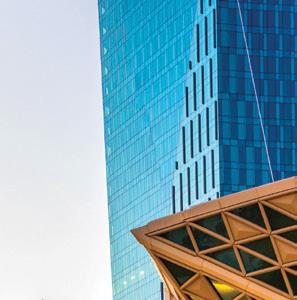



“Consolidation among GCC region banks brings scale to support the diversification of Gulf economies away from oil and benefits in revenue and cost synergies,” says Francesca Paolino, lead analyst at Moody’s Investors Service.

The merger between SABB and Alawwal Bank in 2021 into SAB, a bank with paid-up capital of SAR20.5bn, broke an almost 20-year drought for M&A in Saudi Arabia’s banking industry. It also led to more deals in the country.
Saudi Arabia completed the merger of National Commercial Bank and Samba Samba Financial Group into SNB in January 2022 – a banking behemoth with a market value of SAR224bn
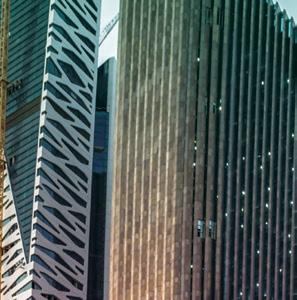


and SAR946bn in assets as of December 31, 2022.
These mergers follow a trend within the kingdom and elsewhere in the GCC, where assets and funds are being consolidated to boost performance and increase e ciency through synergies.
Saudi Arabia further combined its two state-run pension and unemployment insurance funds – the General Organization for Social Insurance and the Public Pension Agency – in 2021 to create a fund with assets that exceed SAR1tn managed by Hassana Investment Company.

SAMA has been a proponent of innovation and development in the financial sector since the launch of Saudi Arabia’s financial sector development programme, one of the pillars of Vision 2030, in 2017.
The apex lender has taken new players in the fi nancial sector under its wings and embraced a positive attitude towards innovative technologies to usher banking into the new era.
The central bank’s forward-looking stance has led to a push for digitalisation through open banking, the support of the fintech sector and licencing digital banks. Saudi Arabia issued a roadmap for open banking in 2021 and published an open banking framework in November 2022.
SAMA also launched its ‘Open Banking Lab’ to speed up the development of open banking in the country last December. Open banking will result in greater e ciency and help banks bridge the gap with fintech firms.
Today, a cocktail of evolving customer demands and preferences, an ambitious fintech development programme and a growing fintech ecosystem all play an important part in the kingdom’s flourishing digital banking sector.


Saudi Arabia has licenced three entities since 2021. stc Bank, which boasts eight million retail customers and more than 120,000 merchants within its network, is currently converting


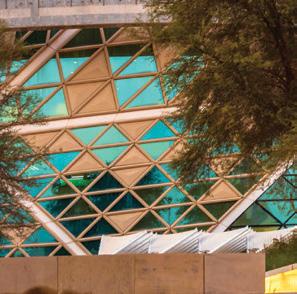
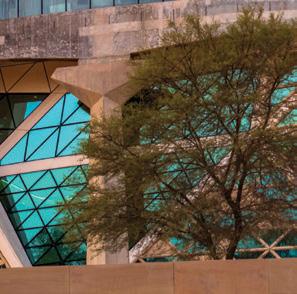

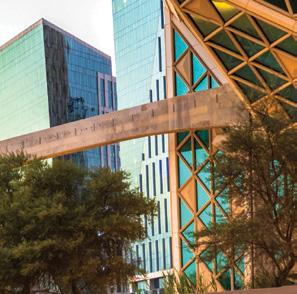
SNB MADE A NET PROFIT OF SAR18.6BN IN 2022, UP 46.7 PER CENT FROM THE PREVIOUS YEAR, ALRAJHI REPORTED A 16 PER CENT RISE IN ITS ANNUAL NET PROFIT OF SAR17.2BN
all its activities and functions from an e-wallet to a digital bank.




Saudi Digital Bank, which will run on cloud-native infrastructure and will focus on providing hyper-personalised financial services and products, will target both retail and small and medium-sized enterprise customers.
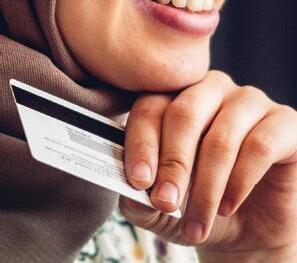

D360 Bank, a Shariah-compliant neobank backed by the Derayah Financial Company and PIF, is targeting the underserved segments, focusing on addressing customer pain points and leveraging innovation and technology to make banking convenient, accessible and fair to all.
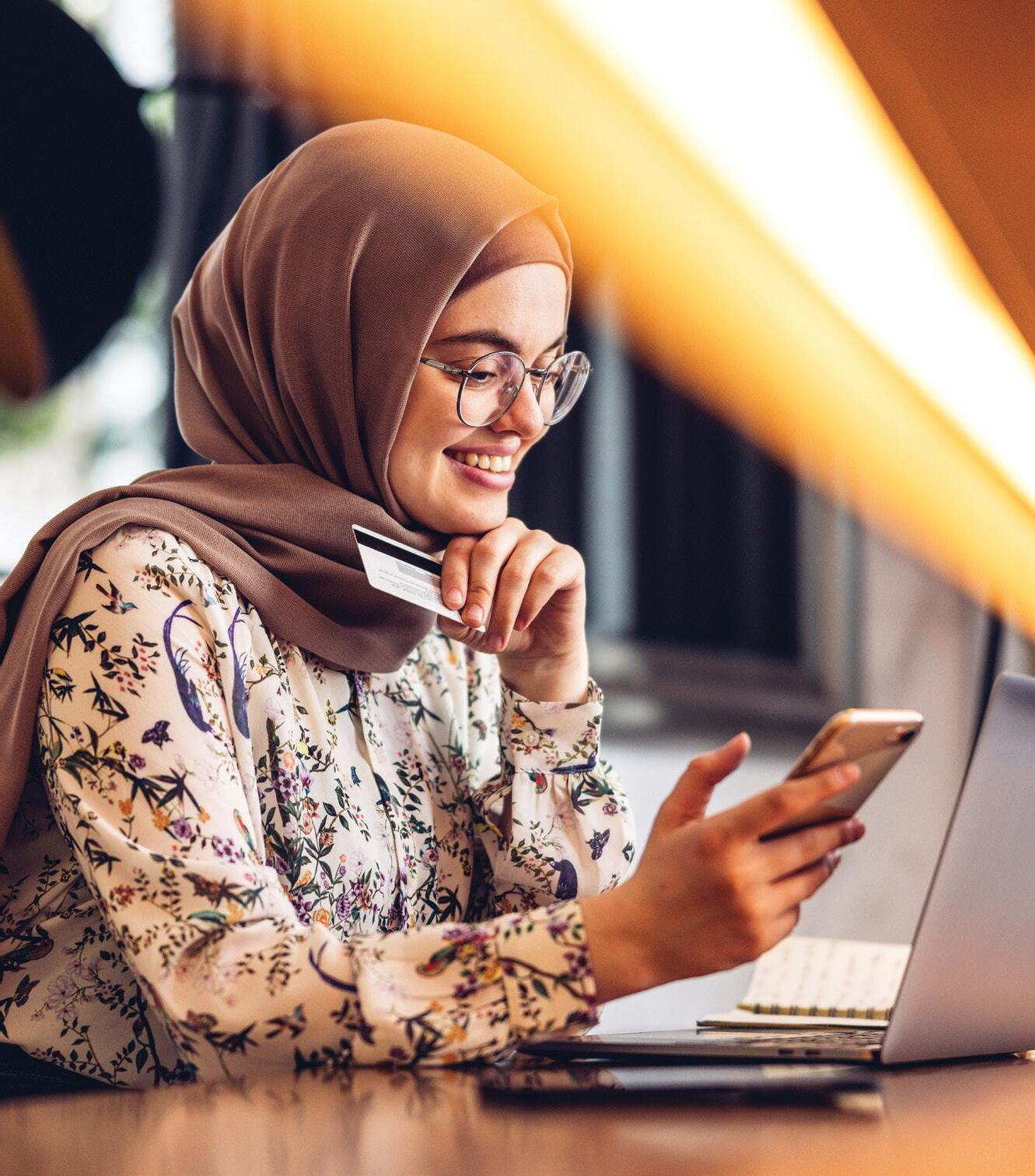
The digitalisation of the financial system is progressing at a fast pace, exceeding targets originally set under Vision 2030. Financial institutions that embrace a digital-first and customercentred approach are positioned to lead the new era of banking in Saudi Arabia.





The role of Saudi Arabia’s financial services sector has transformed over the years and banks continue to capture the benefits of economic expansion evidenced by an increase in lending to the state, large corporates and small business enterprises.

Alvarez & Marsal’s Ahmed projects that corporate lending would drive credit growth in the near term as Vision 2030 projects are currently being implemented.
The kingdom has made considerable progress in the implementation of its multi-pronged structural reforms to wean its economy from heavy reliance on oil and gas. Under Vision 2030, the government in Riyadh is proceeding
full steam ahead with the development of several giga-projects while opening up the country to the world in a way that it has never attempted before.
“These developments are being mirrored in the performance of the banking sector in Saudi Arabia, which is experiencing a period of much-welcomed profitability,” said the BCG Group.
Bank lending to the private sector rose by 14 per cent year-on-year (YoY) to SAR2.35tn at the end of 2022. Breaking it down by sector – personal finance increased by 14 per cent (SAR142bn) and lending to corporates also jumped by 14 per cent (SAR147bn), according to SNB. Within the corporate segment, the highest annual rises were in real estate, up 32 per cent, mining rose by 22 per cent and finance increased by 22 per cent.
Similarly, cumulative gross mortgage originations, provided by banks and other financial institutions, rose 27 per cent YoY to SAR587bn. Alrajhi raised more than SAR5bn from the sale of a real estate financing portfolio to the Saudi Real Estate Refinance Company (SRC) in March - the country’s biggest such mortgage refinancing for a bank to date.
SRC, which is wholly owned by PIF, bought a SAR1bn real estate financing portfolio from SNB in March 2022 and another SAR500m real estate financing portfolio from Riyad Bank in May of the same year, part of the real estate refi nance fi rm’s broader strategy to boosting Saudi home ownership to 70 per cent by 2030.


The financial sector is the lifeblood of any economy in the world, Khalid Al-Falih, Saudi Arabia’s Minister of


Saudi Arabia’s 10 largest listed banks were analysed in Alvarez & Marsal’s annual report. These include Saudi National Bank, Alrajhi Bank, Riyad Bank, Saudi Awwal Bank, Banque Saudi Fransi, Arab National Bank, Alinma Bank, Bank Albilad, Saudi Investment Bank and Bank Aljazira
Source: Based on financial statements, investor presentations and Alvarez & Marsal’s analysis
Investment said in speech at the Financial Sector Conference in Riyadh in March this year.
Saudi Arabia’s mortgage market has expanded over the past years, however, the rapid rise in home loans has stretched the capacity to keep lending. Mortgage approvals by banks have also slowed as banks struggled with tight liquidity and buyers faced soaring interest rates and rapidly rising home values.
“Continued improvements to the framework for financial sector regulation and sustained monitoring of rising mortgage lending are important to prevent risks from materialising,” according to the IMF.
UNDER VISION 2030, THE GOVERNMENT IN RIYADH IS PROCEEDING FULL STEAM AHEAD WITH THE DEVELOPMENT OF SEVERAL GIGA-PROJECTS WHILE OPENING UP THE COUNTRY TO THE WORLD IN A WAY THAT IT HAS NEVER ATTEMPTED BEFORE”
Moving ahead, continued government support for lower-income groups including the provision of interest rate subsidies via the Real Estate Development Fund is expected to sustain momentum in mortgage lending in the medium term.
Saudi banks are likely to remain on a profitable path in 2023 with corporate lending continuing to drive credit growth in the sector. The banks witnessed a high credit growth compared with deposits in 2022 and going forward, credit growth is expected to grow further driven by strong economic momentum and investments.









faced in our IT infrastructure was bringing data to our on-premises system and maintaining control over it. With traditional cloud solutions, we were concerned about data security and compliance, as well as the potential for unexpected costs. Moreover, we were experiencing high latency and slow response times with our legacy infrastructure.





Suresh: There are several trends that will drive the adoption of HPE GreenLake solutions in the UAE. The first is the need for agility and flexibility in IT infrastructure. We have seen that businesses in the UAE are increasingly looking for ways to rapidly scale up or down their IT resources as per their business needs. The HPE GreenLake solutions allows them to do so without the need for upfront capital investments, providing a pay-per-use model.
How was your journey of adopting HPE GreenLake solutions to your IT infrastructure?
Anvar: We were facing a lot of di culties with our IT infrastructure, including rising costs, unpredictable performance, and the need to manage multiple vendors and contracts. We knew we needed a solution that could help us reduce complexity, improve performance and lower costs. HPE GreenLake solutions o ered us a pay-per-use model and we were able to avoid upfront costs and only pay for what we used. This allowed us to reduce our capital expenditures and shift to an operational expenditure model, which was more predictable and easier to manage.
What was the biggest IT infrastructure challenge that needed to be addressed?





Anvar: One of the biggest challenges we

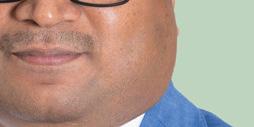


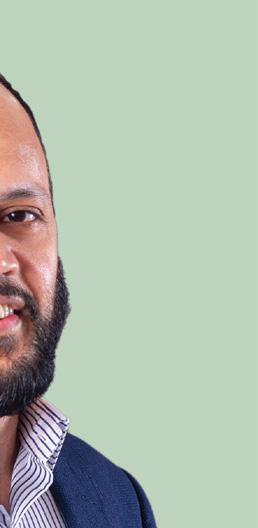
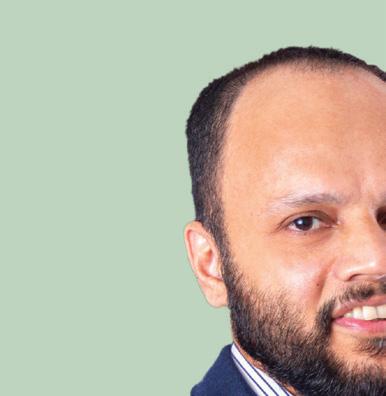
To address these challenges, we turned to HPE GreenLake, which allowed us to bring our data on-premises and maintain full control over it. We implemented these solutions across multiple areas of our IT infrastructure which includes servers for our SAP S/4HANA database and application. Apart from the production servers, we also run development and quality servers on this infrastructure.

Additionally, once we implemented, we experienced a drastic reduction in latency and response times. This has enabled us to provide our customers with faster and more e cient services, resulting in higher customer satisfaction and retention rates.








The second is the increasing focus on sustainability and reducing carbon footprint. HPE GreenLake allows customers to optimise their IT infrastructure and reduce energy consumption.
Lastly, as businesses in the UAE continue to adopt new technologies such as AI and IoT, their IT environments become more complex, and managing them becomes more challenging. HPE GreenLake provides a simplified solution that takes care of the complexities.
Suresh: At Emtech, we understand that digital transformation is not just about adopting new technologies but rather about the transformation of the entire business model. Our team of experts has a deep understanding of the latest technologies and we work closely with our customers to understand their business needs and help them adopt these technologies in a way that aligns with their business objectives.
How HPE GreenLake solutions reduce complexity, improve performance and lower costs
Additionally, once we implemented, we experienced a drastic reduction in latency and response times”
ANVAR PB, GROUP TECHNICAL DIRECTOR, HOTPACK GLOBALSURESH VANIAN, VP, EMTECH AND ISPG TECHNOLOGIES
SHOWCASING THE TRENDS DRIVING REGIONAL AND GLOBAL TOURISM IN 2023




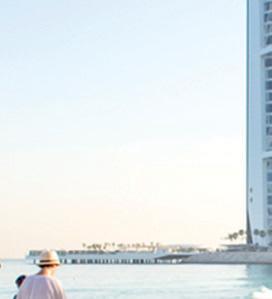


 BY NUSRAT ALI
BY NUSRAT ALI
The year began on a high note for the UAE’s tourism sector, with Dubai being named the world’s most popular destination at the Tripadvisor Travellers’ Choice Best of the Best Destination Awards 2023. This was the second consecutive time the online travel platform recognised Dubai’s tremendous tourism appeal based on aggregated reviews of millions of travellers between November 2021 and October 2022.

Just as Tripadvisor unveiled the ranking, the United Nations World Trade Organization (UNWTO) released data showing that the Middle East had enjoyed the strongest relative increase in international tourist numbers globally in 2022, with arrivals reaching 83 per cent of prepandemic numbers.

Previously, a September 2022 report by UNWTO stated that the Middle East had demonstrated the fastest recovery between January to July 2022, with arrivals growing almost four times yearon-year, reaching 79 per cent of 2019 levels. And within the region, the UAE was the only country to exceed pre-pandemic tourism levels in the first seven months of 2022.
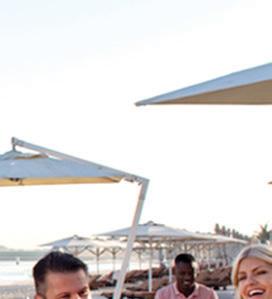

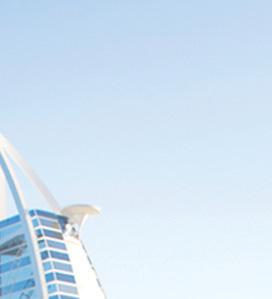
14.36 MILLION OVERNIGHT VISITORS DUBAI WELCOMED IN 2022
This surge in tourist numbers can be attributed to several factors such as visa reforms announced last year which made travelling to the UAE much easier. The new visa rules allow visitors to stay in the country for 60 days instead of 30 days. The new multiple-entry five-year tourist visa has also encouraged repeat visits to the country.
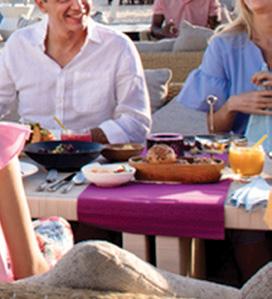

Tourist entries were further enhanced by UAE’s airlines, which not only resumed service to routes suspended during the Covid-19 pandemic but added new destinations and frequencies.


The UAE’s capital Abu Dhabi has emerged as prominent gateway to the country. According to











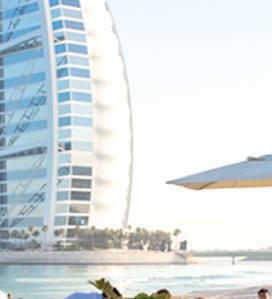


the Moodie Davitt Report, 15.54 million visitors travelled through Abu Dhabi International Airport in 2022. The number is triple the number the airport served in 2021 (5.26 million), marking a recovery of 73.6 per cent of pre-pandemic 2019 levels.
Abu Dhabi’s Department of Culture and Tourism also reported an occupancy rate of 70 per cent, with 4.1 million visitors staying in the emirate’s hotels last year. Hotel revenues climbed by 23 per cent from the previous year to Dhs5.4bn in 2022.
“2022 was a remarkable year for Abu Dhabi in passenger tra c terms. Looking ahead, we are working towards readiness to accommodate even greater passenger tra c in 2023, which we anticipate, as higher numbers of international visitors come to the UAE for key events,” said Jamal Salem Al Dhaheri, Abu Dhabi Airports managing director and CEO, in a statement.
Dubai welcomed 14.36 million international overnight visitors in 2022, surpassing global and regional barometers of recovery, driven by events such as Expo 2020 Dubai, Gulfood, the World Government Summit, Gitex Global and the Arabian Travel Market. Data published by UNWTO in January showed that tourist travel to the city reached 86 per cent, exceeding global recovery levels of 63 per cent and Middle East recovery levels of 83 per cent in 2022.
“Art and culture travel has also emerged as a significant trend in Dubai. The city’s diverse heritage and contemporary arts scene o er a unique blend of traditional and modern art experiences, including the Art Dubai and World Art Dubai events, attracting global and regional audiences,” says Issam Kazim, CEO of Dubai Corporation for Tourism and Commerce Marketing (DCTCM).
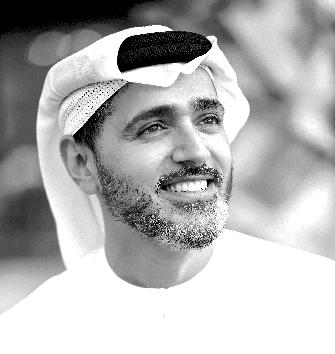
Among the Northern Emirates, Ras Al Khaimah (RAK) posted impressive results for 2022. With
over 1.13 million overnight arrivals in 2022, the Ras Al Khaimah Tourism Development Authority (RAKTDA) recorded the highest-ever annual visitor numbers to the emirate. International visitors rose by 40 per cent, with Kazakhstan, Russia, the UK, Germany and the Czech Republic serving as key source markets.
In 2022, RAKTDA undertook a host of initiatives to drive tourist numbers. The authority held over 90 roadshows, trade fairs and media events across 24 markets and more than 50 events within the emirate, such as the Arab Aviation Summit and DP World Tour. RAKTDA is now aiming to attract three million visitors annually by 2030. “We’ll do this by expanding global access and seamless connectivity to the emirate via strategic airline partnerships such as Qatar Airways,” says Raki Phillips, CEO of RAKTDA.
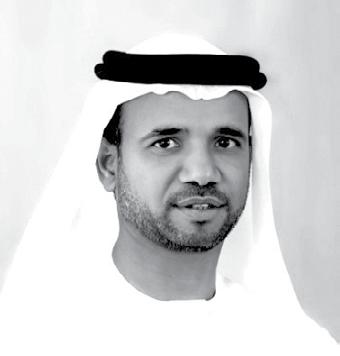
Phillips is referring to the announcement made by the airline at Arab Aviation Summit held in March to operate direct flights to the emirate from November this year. RAKTDA also entered into an agreement with FTI Group, a major German tour operator, paving the way for twice-weekly direct flights from Munich to Ras Al Khaimah, also beginning in Q4 2023. Bahrain’s Gulf Air also o ers two weekly flights to RAK, making access to the emirate easier for tourists.
Concurrently, RAK is gearing up for a massive boom in its hospitality portfolio with 19 properties (6,533 keys) in the pipeline for the next few years, including the multi-billion-dollar integrated resort development with Wynn Resorts in early 2027 – the largest-of-its-kind foreign direct investment in Ras al Khaimah.

“Another key to sustaining our growth is positioning ourselves as a destination of the future, driven by sustainability, accessibility and diversification. We have already committed Dhs500m for the development of over 20 purposedriven tourism projects that will enhance our natural environment. We are also investing in cultural conservation, with four tentative UNESCO World Heritage Sites, and diversifying our portfolio with sustainable accommodation on Jebel Jais to provide a mountain retreat experience with guided treks, mindful pursuits and creative experiences,” adds Phillips.
Data released by the Sharjah Commerce and Tourism Development Authority (SCTDA) showed that the emirate’s hospitality sector

Art and culture travel has also emerged as a significant trend in Dubai. The city’s diverse heritage and contemporary arts scene offer a unique blend of traditional and modern art experiences, including the Art Dubai and World Art Dubai events, attracting global and regional audiences”Issam Kazim Jamal Salem Al Dhaheri Raki Phillips
registered 626,000 guests for H1 2022, marking an increase of 12 per cent compared to the same period in 2021. The emirate remained the preferred destination for European tourists, with 1.4 million hotel guests, of which 165,000 were from Russia. The total number of German hotel guests showed a 31 per cent increase compared to the previous year. SCTDA revealed that hotel earnings amounted to more than Dhs200m in H1 2022, showing a 50 per cent increase in the same period in 2021. Passenger tra c at Sharjah Airport saw a jump of 84.73 per cent with 13 million travellers in 2022, achieving the prepandemic levels (13.6 million passengers in 2019) as opposed to seven million passengers in 2021.
Ajman also showed upward movement in tourist numbers. Compared to 2021, the hospitality sector witnessed a 9 per cent overall revenue growth, a 26 per cent increase in foreign visitors, and a 14 per cent increase in the average room rates in 2022. “The tourism sector continues its recovery, and what has been accomplished so far is a result of the full collaboration with our stakeholders to achieve the common strategic goals,” said Mahmood Khaleel Alhashmi, director general of Ajman Department of Tourism Development (ADTD), at the department’s annual meeting in January.
Further up the coast, Umm Al Quwain is also keen on capturing a share of the country’s
PASSENGER TRAFFIC AT SHARJAH AIRPORT SAW A JUMP OF 84.73 PER CENT WITH 13 MILLION TRAVELLERS IN 2022
tourism market and emerging as the focal point of UAE’s ecotourism e orts through its Sustainable Blue Economy Strategy 2031. Under the strategy, eight transformative projects will be delivered across diverse industries, including the Umm Al Quwain Mangroves Reserve development, which will allow visitors to explore natural sceneries and the coastline of the emirate.
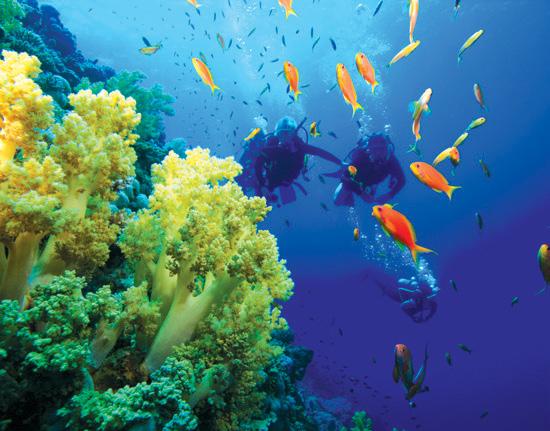
Tourism to the UAE’s eastern coast also performed well, according to real estate consultancy CBRE. Fujairah reported a 26.7 per cent growth in revenue per available room during the second quarter of 2022. “Additionally, Fujairah had higher growth in occupancy levels than the rest of the UAE and one of the strongest growths in terms of average daily rates,” stated the CBRE report. In the future, the emirate aims to attract 100,000 visitors when it opens its Qidfa development project.
The tourism sector has become a key driver of the UAE’s diversification e orts and a major contributor to its GDP. As momentum continues to accelerate across the country, the Emirates’ tourism boards are actively investing in new initiatives, enhancing stakeholder relationships, rolling out global campaigns and leveraging growing MICE segments to bring in visitors.
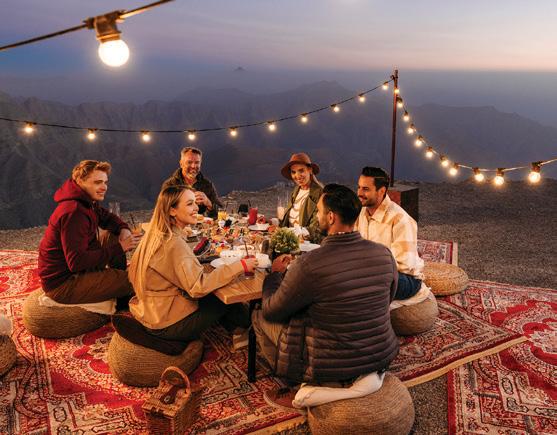
In February this year, the third edition of the ‘World’s Coolest Winter’ campaign drew to a close, recording stellar returns for stakeholders. Running from December 2022 to February 2023, the campaign raked in revenues of Dhs1.8bn for UAE hotels, as domestic tourists rose to 1.4 million during this period. The campaign achieved more than 5.8 million interactions on different social media platforms and the #WorldsCoolestWinter hashtag was used in more than 18,000 photos and videos.
Launched by the UAE Government Media Office in cooperation with the Ministry of Economy, the campaign
is a part of the ‘UAE Strategy for Domestic Tourism’ launched in 2020 and has enjoyed spectacular success from its inception.
With international travel suspended, the 2020 edition of the event recorded 950,000 local hotel guests marking a 17 per cent increase compared to the same period in 2019. In addition, it helped hotel establishments in the country generate a total of Dhs1bn.
Subsequently, the second edition of the campaign in 2021 saw hospitality revenues touch Dhs1.5bn with a 50 per cent growth over the first edition, while the number of local
tourists reached 1.3 million with a 36 per cent year-on-year growth.
“The pandemic brought to the forefront the importance of driving demand for domestic tourism. When travel restrictions were in place worldwide, a unique national domestic tourism strategy was drawn up to harness the full potential of the domestic tourism sector by encouraging citizens and residents to take advantage of UAE’s world-class infrastructure and offerings across the tourism ecosystem – hotels, malls, attractions, experiences and events,” says Issam Kazim, CEO of Dubai Corporation for Tourism and Commerce Marketing (DCTCM).




AlUla features preserved tombs, sandstone outcrops, historic dwellings and monuments, both natural and human-made


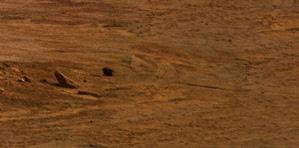



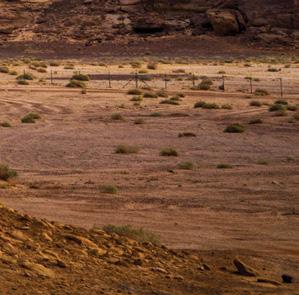
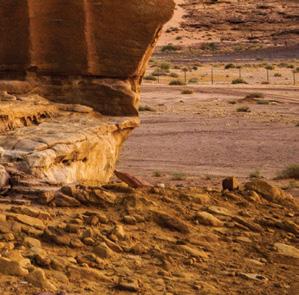
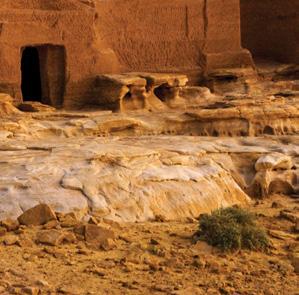

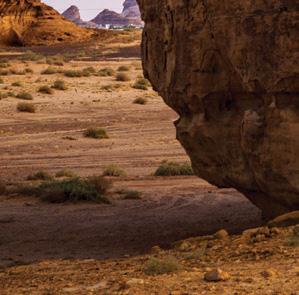
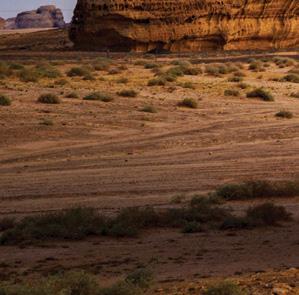


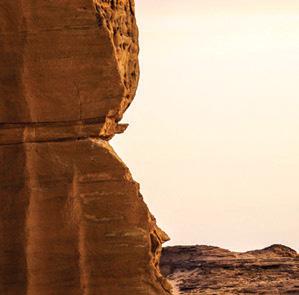
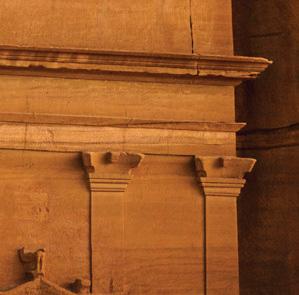

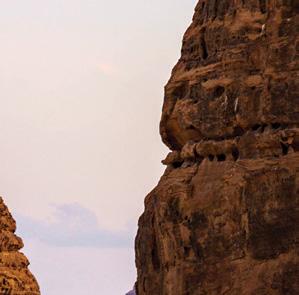

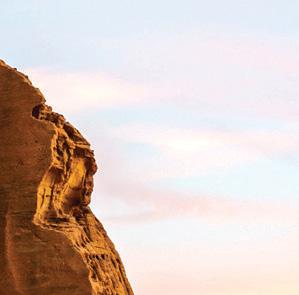
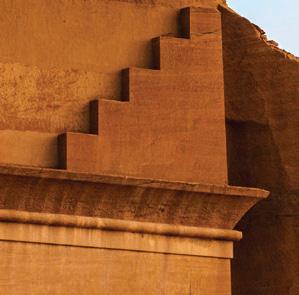
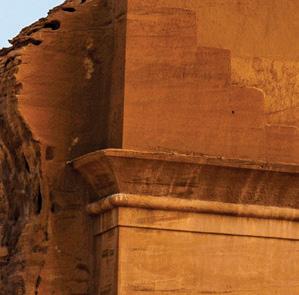
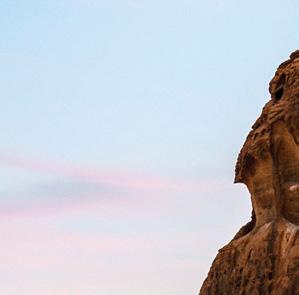

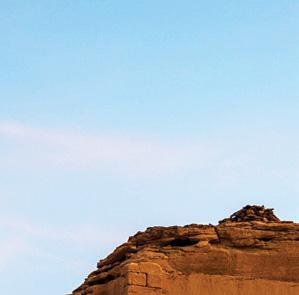 BY DIVSHA BHAT
BY DIVSHA BHAT





According to data released by the General Authority of Statistics (GASTAT), the Saudi Arabian economy achieved impressive growth in 2022, with a GDP growth rate of 8.7 per cent. This is the highest growth rate among G20 countries and has surpassed international expectations of a maximum of 8.3 per cent. GASTAT also highlighted the GDP report and national accounts’ indicators for Q4 2022, stating that this growth rate is the highest annual rate achieved in the last decade.
Revamping its tourism landscape is among the kingdom’s key priorities to help diversify its economy. In recent years, Saudi Arabia has made significant e orts to attract international visitors, including easing visa requirements for tourists from established markets. The launch of a free 96-hour stopover visa for passengers booked on flynas or Saudia flights by the Saudi Tourism Authority is among a ra t of initiatives aimed at making the country’s tourism o erings more convenient. The Saudi government has committed $100m to the Tourism Development Fund in
SAUDI TOURISM IS SET TO SURGE WITH SIGNIFICANT INVESTMENTS BEING MADE THROUGHOUT THE KINGDOM TO ENHANCE BOTH RELIGIOUS AND NON-RELIGIOUS TOURISM
partnership with the World Bank to diversify the country’s income from fossil fuel activities and increase tourism. The sector aims to welcome up to 100 million visitors annually by 2030, representing 10 per cent of the country’s GDP.
According to Minister of Tourism Ahmed Al-Khateeb, Saudi Arabia has set its sights on attracting 25 million foreign tourists in 2023 and creating one million jobs in the vital tourism sector. In 2022, the total tourism expenditure amounted to SAR185bn, an increase of 93 per cent over the previous year, with the kingdom reporting a record number of tourists from among the G20 countries. Despite the pandemic-related economic disruptions and inflationary pressures in 2021 and 2022, the most affluent segments have been largely unaffected by price pressures, which bodes well for niche tourism segments such as ecotourism and heritage tourism.
The Saudi government aims to attract a diverse group of tourists to its giga-projects, which include The Red Sea Project’s sustainable luxury experiences, AlUla’s landmarks, Diriyah’s cultural heritage developments, and NEOM’s unique nature experiences. In addition to targetting Muslim pilgrims, the government seeks to increase arrivals from both Western and Asian markets for non-religious tourism.
Expanding Saudi Arabia’s tourism sector will
require improvements in transport infrastructure, human resources and digital expertise. Facilitating more arrivals to the kingdom and enhancing internal mobility is equally important. The recent launch of Riyadh Air, Saudi Arabia’s new national carrier, by Public Investment Fund (PIF) is expected to add $20bn to the non-oil GDP growth of the kingdom, generating over 200,000 direct and indirect jobs.
Riyadh Air will offer tourists from around the world the chance to visit Saudi Arabia’s cultural and natural attractions.
Meanwhile, in March, Saudi Arabia Railways also signed a memorandum of understanding with Italy’s Arsenale Group to launch the region’s first luxury train named Dream of the Desert, which will be inaugurated in 2025. The luxury train is expected to promote tourism and cultural affairs in the kingdom and offer visitors and residents a unique and integrated luxury transportation experience.
Saudi Arabia is building a host of giga-projects and attractions in partnership with PIF to deliver the goals of Vision 2030.
Qiddiya Investment Company, in collaboration with Bjarke Ingels Group, developed the masterplan for a colossal entertainment destination in Riyadh known as Qiddiya, which is poised to become the world’s most extensive entertainment city. Over 300 facilities, such as theme parks, water parks, and a sports city, will be available to visitors. In February 2022, Qiddiya Investment Company awarded a construction contract worth $750m for Saudi Arabia’s first and the Middle East’s most massive water park, comprising nine themed zones and 22 rides and attractions.
Meanwhile, Saudi’s grand project NEOM, which is estimated to cost $500bn, will feature cognitive cities, research centres, ports, tourist destinations and entertainment venues. Saudi officials are aiming to attract approximately one million visitors by 2025 and five million by 2030 to NEOM. Sindalah, NEOM’s first luxury island, is scheduled to open in early 2024, offering a marina, beach club, golf course and yacht club, as well as hotels and various food and beverage outlets. Among the project’s highlights
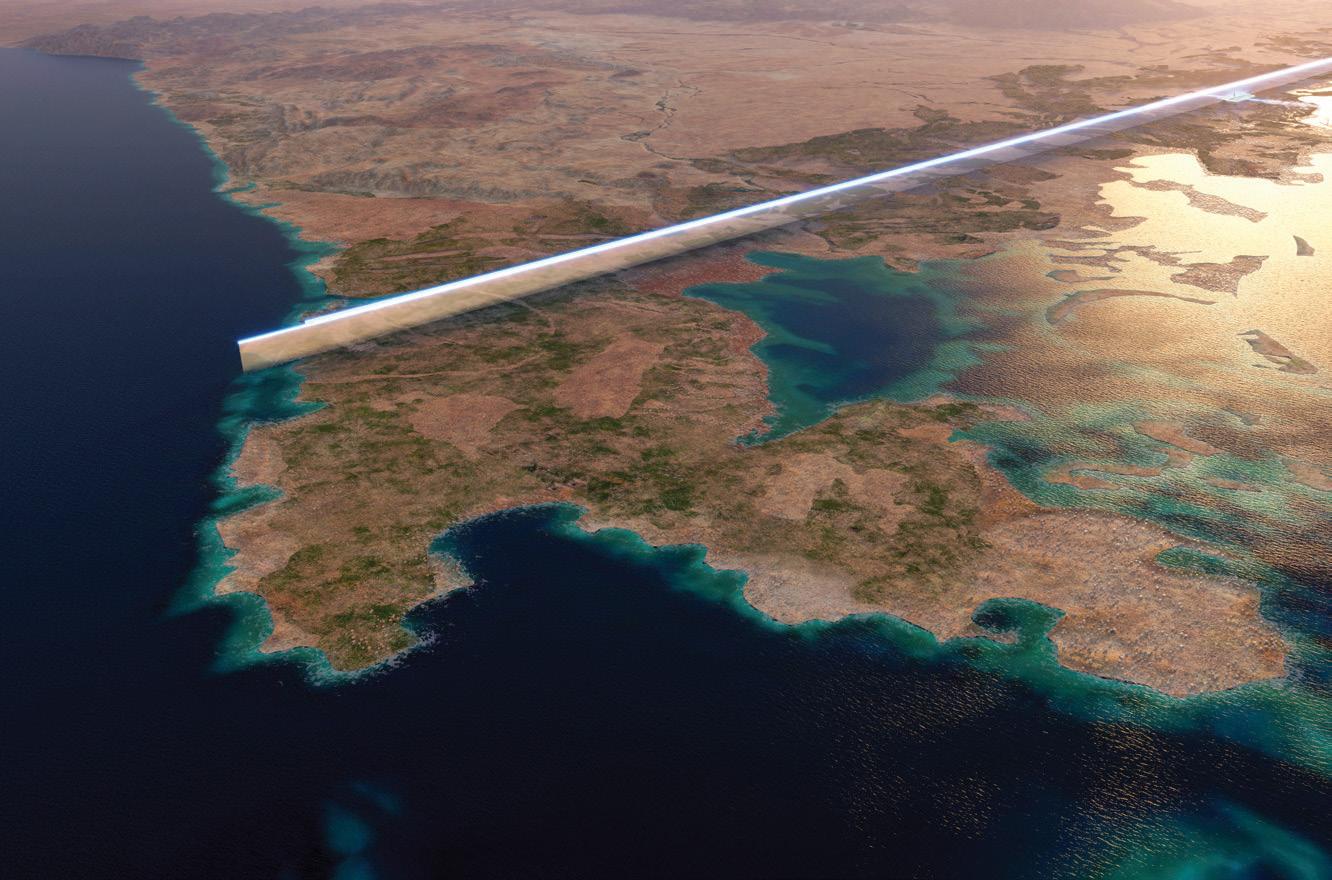
SAUDI ARABIA HAS SET ITS SIGHTS ON ATTRACTING 25 MILLION FOREIGN TOURISTS IN 2023
SAUDI’S OTHER GRAND PROJECT NEOM, WHICH IS ESTIMATED TO COST $500BN, WILL FEATURE COGNITIVE CITIES, RESEARCH CENTRES, PORTS, TOURIST DESTINATIONS AND ENTERTAINMENT VENUES”

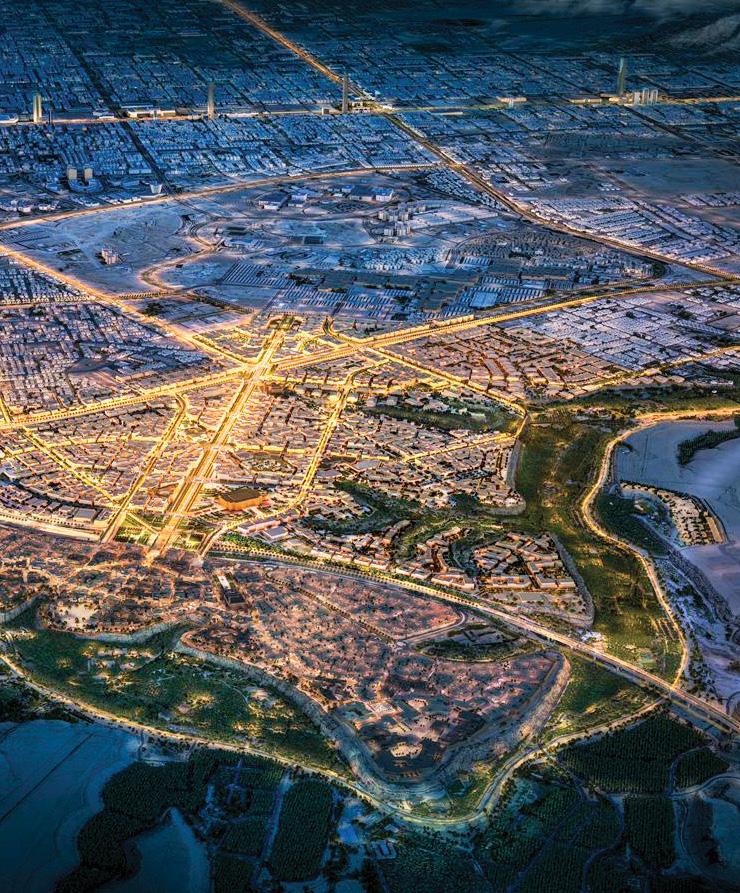
are The Line, a zero-carbon city with “vertically layered” buildings for living, working, and leisure; Trojena, a mountain resort with a ski village, ski slope and a nature reserve and Oxagon, an octagonal floating port city.
The Red Sea, an eco-tourism-focused giga-project in Saudi Arabia, is being developed by Red Sea Global, which is owned by the PIF. It is set to open its doors to visitors in 2023 and is being touted as the world’s most sustainable luxury tourism destination. Red Sea Global is also spearheading the development of the Amaala project and has awarded more than 1,300 contracts for both projects, amounting to almost $8.5bn. The company is also exploring and implementing various eco-friendly concepts, including green concrete to reduce emissions, sustainable food production and clean mobility strategies. The destination will rely entirely on renewable energy sources to operate.
PIF has recently announced Diriyah as its fi th giga-project in Saudi Arabia. The $50bn development is situated on the outskirts of Riyadh and is primarily focused on culture and lifestyle, providing entertainment, dining and shopping options. Diriyah encompasses At-Turaif, a UNESCO World Heritage Site, and historical district offering
RED SEA GLOBAL IS ALSO SPEARHEADING THE DEVELOPMENT OF THE AMAALA PROJECT AND HAS AWARDED MORE THAN 1,300 CONTRACTS FOR BOTH PROJECTS, AMOUNTING TO ALMOST $8.5BN
cultural and educational activities, hotels, museums, and retail spaces. Visitors and residents can explore Saudi Arabia’s history at the museums, as well as enjoy the arts district with galleries, restaurants and retail experiences. Another major attraction in Saudi Arabia is AlUla, considered the world’s most massive living museum. The Royal Commission for AlUla is investing $5.2bn in the first phase of the $15bn project. This is in collaboration with the French government agency Afalula. The project will be developed in three phases by 2023, 2030 and 2035.
Following a robust recovery in 2021 and sustained momentum in 2022, underpinned by improved domestic and international demand, the Saudi Arabian economy is forecasted to gain pace towards a complete revival this year.
The outlook looks promising, as considerable investments are being made throughout the country to enhance both religious and non-religious tourism, indicating a surge in the kingdom’s travel industry, which is projected to expand significantly by 2030.




















believe luxury is about freedom.

IIt’s about being able to choose from anything that is available, to pick something that fits our needs and makes us feel good. When looking at luxury travel, we need to step back and look at what is happening in luxury in general and to understand that discerning consumers are looking for high, intrinsic value more than ever, and that goes way beyond price consideration.
The answer to ‘what is luxury?’ is constantly evolving, particularly true when it comes to travel. Just 20 years ago, everything was packaged up in one way, and one way only – a beautiful hotel, with glamorous finishes, in an exotic location would su ce. But times have changed.


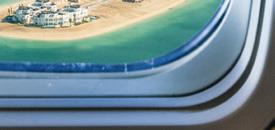
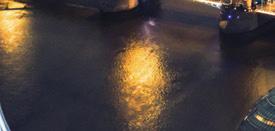





Today, travellers in every segment are actively seeking out meaningful experiences and services designed just for them, meaning that those of us in the travel industry need to deliver a more personalised experienced for everyone, every time.
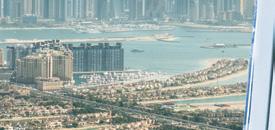
How do we do this? By listening and involving customers in the conversation. Brands today understand that customers might have a better idea, and are embracing the fact that they are not in control of the entire conversation. Brands initiate ideas, but then use various
models to engage, exchanging messages and ideas. They add value by giving information on how it can be done better.

In a way, we are doing what’s most natural to us – it is like going back to the days when people exchanged stories around a campfire. Of course, big travel brands want to guide certain conversations, but they’ve never been so open to clients’ opinions and advice.
This is especially true in the world of luxury travel, where the sky is the limit. Ultra-high-networth individuals (UHNWIs) want bespoke experiences that are unique to them, customised with their individual preferences in mind, particularly when it comes to exclusivity and privacy. From travelling in a private jet and enjoying the endless possibilities available in the cabin, to staying in a private villa with a bespoke dayto-day itinerary and a private chef creating personalised menus, it is all about catering to the individual’s needs. Most important of all, they want someone to make it as easy as possible for them – UHNWIs are extremely busy people so, taking the pressure o and allowing them to escape from the stresses of daily life, where they can enjoy the moment and make memories, is the real luxury.


The pandemic has had an impact on the channels used to sell luxury products, so there are fewer in-person experiences and more digital channels and tools. This means that there are new systems and flows in the power of influence to make people purchase something.
What has also changed significantly is that luxury brands have had to become part of the new cycle. There have been some big headlines over the past few years – politics, pandemics, natural disasters, economic shi ts – and all of this meant that there was less space for brands to broadcast their story and talk about themselves.
To establish an iconic brand for UHNWIs it is critical to avoid the hype. While the narrative of disruptive technology has been captivating marketers’ imagination for a few decades, it has never been so important for luxury travel



FOR VISTAJET, IT IS ABOUT FASTER JET BOOKING SYSTEMS DELIVERED VIA AN APP
FROM SUSTAINABILITY TO REVENGE TRAVEL, HERE ARE THE KEY TRENDS DRIVING LUXURY TOURISM
brands to embrace digitalisation to support their expert human teams in creating an even better personal service.
For Vistajet, it is about faster jet booking systems delivered via an app; a private dining solution to reduce food waste; critical technology to manage the complex logistics of the second-largest private aviation fleet in the world, reducing repositioning flights and time in the air: all of this means improved service and cost reductions for clients.
But this is only the start. While a brand may be confident that they have nailed the recipe for their current customers, things change quickly, and savvy brands will already be preparing for another significant behavioural shift as the spending power of Millennials and Gen Z increases.
Millennials and Gen Z accounted for the entire growth of the global luxury market in 2022, according to Bain and Altagamma’s latest study. Younger generations will continue to assert their position as critical growth levers for the luxury travel sector in 2023 and beyond.
Luxury spending among these generations is expected to grow three times faster than other generations and this is a sphere of influence already evident when it comes to travel, especially when you look at the flurry of collaborations with like-minded brands.
While hotel brands have been doing it successfully for years with luxury bathroom products and retail items sold in lobbies, and the more recent trend of premium luxury brands such as Bulgari and Armani developing their own luxe hotel brands, this is just the tip of the iceberg.
With a clear correlation between luxury brands’ clientele and values, it is no surprise that we are now seeing a raft of interesting and – most importantly – symbiotic luxury brand-travel collaborations, with many promoted via social media platforms that are typically the domain of Millennials and Gen Z.
A great example of this is Eden Rock – St Barths, who have launched a series of exclusive collections over the last few years, with this year’s partnerships ranging from a capsule collection by Bäumer Jewels; a hand-crafted fedora from Parisian milliner Maison Michel; a limited-edition collection of flags, beach towels and totes from New York-based artist Daniel Arsham; and a bespoke Hublot watch - ‘The Big Bang Unico Eden Rock - St Barths’, with only 25 made.
We see social responsibility and sustainability re-shaping everything in travel. It will remain a dominant trend throughout the coming years, with travellers increasingly demanding the best of both worlds – unforgettable experiences that are also responsibly considered.
We’re not just talking about the environment, but broader ESG (environmental, social and governance) policies, including workers’ rights and protection of the value and supply chain.
This is by no means limited to travel, as all luxury brands are asking themselves how they can change the way they do things so that consumers start to look at their consumption patterns differently and reconsider the value of their travel decisions and the impact they will have long after their trip.

The above, a term coined by the travel industry, is also driving the luxury travel agenda in 2023. Travellers are planning new adventures to satisfy their desires to travel better than before to make up for time lost during the pandemic.
UHNWIs are choosing to go deeper rather than just skim the surface, to get to know more of a single country instead of ticking off five in one go, to treat travel as a search for understanding that will have a lasting impact on the places and people they visit. In luxury travel, we will experience a steep rise in the desire for wellness practices that hold lifelong benefits for both health, people and the environment.
“MILLENNIALS AND GEN Z ACCOUNTED FOR THE ENTIRE GROWTH OF THE GLOBAL LUXURY MARKET IN 2022 ACCORDING TO BAIN AND ALTAGAMMA’S LATEST STUDY. YOUNGER GENERATIONS WILL CONTINUE TO ASSERT THEIR POSITION AS CRITICAL GROWTH LEVERS FOR THE LUXURY TRAVEL SECTOR IN 2023 AND BEYOND”
grow at yearly growth rate of more than 10 per cent globally, doubling the value to a staggering $1.97tn by 2031.

The revenues from wellness tourism in 2022 were expected to reach $18.7bn, representing a substantial growth rate of 75 per cent from 2015. Among the services o ered, wellness activities and lodging account for 55 per cent of the total revenue, followed by transportation, food and beverage, retail and others. Luxury and high-end hotels and resorts have been a major contributing factor to its growth.
In the Middle East and North Africa (MENA) region, wellness tourism has witnessed remarkable growth, with an annual rate of 13.3 per cent, more than double the global average of 6.5 per cent; yet the region still accounts for only 1 per cent of total trips and 2 per cent of total revenue from global wellness tourism.

The ageing population, environmental crisis and lifestyle changes have led wellness to become the centre of consumer decision-making, propelling the industry into rapid expansion.
Wellness tourism, the intersection of two multi-trillion-dollar industries tourism and wellness is defined by The Global Wellness Institute (GWI) as travel associated with the pursuit of maintaining or enhancing one’s personal wellbeing. For decades, travellers have enjoyed retreats in traditional spa facilities, but when the Covid-19 pandemic hit, wellness took on a new urgency and became a priority rather than a luxury.
In response to these supercharged demands, the wellness industry shi ted its marketing buzzword from “pampering” to “preventive”, giving integrative and medical wellness a strong momentum across the globe. Both top-tier hotel operators and destinations are incorporating holistic and advanced wellness treatments, hoping to get a piece of the multi-trillion-dollar pie.


The wellness tourism industry has become a significant contender in the global tourism market, with a valuation of $815bn in 2022, making up 18 per cent of the total market. With holistic health and prevention being at the centre of consumer decision-making, the industry is projected to


Domestic travellers make up the majority (82 per cent) of wellness tourism trips, however they only account for 65 per cent overall expenditures because international wellness trips have a higher average spending level. Additionally, international wellness tourism trips have grown faster (12 per cent annually) than domestic trips (9 per cent annually). In the MENA region, international wellness travellers spend 44 per cent more than the average traveller, and domestic wellness travellers command a 65 per cent premium. With all the advantages of catering to wellness-centric guests, including a significantly higher revenue per available room (RevPAR) and profitability compared to the traditional luxury hotels/resorts, major hotel operators will continue to go a ter the wellness tourism market.
The wellness industry and broader wellness movement have significant and far-reaching impacts on the development and growth of



“IT IS EVIDENT THAT THE RISING POPULARITY OF MEDICAL WELLNESS RESORTS OFFERS AN UNTAPPED POTENTIAL IN THE REGION”
THE WELLNESS TOURISM INDUSTRY HAS BECOME A SIGNIFICANT CONTENDER IN THE GLOBAL TOURISM MARKET, WITH A VALUATION OF $815BN IN 2022, MAKING UP 18 PER CENT OF THE TOTAL MARKET
countries, regions, and communities worldwide. Wellness contributes to economic growth, improves public health, protects, and celebrates natural resources, supports workforce development, and enhances quality of life.
Most global spas and wellness facilities are traditional resort/hotel spas offering standard recreational/pampering treatments and services. In the Middle East, the traditional hotel/resort spa accounts for 39.7 per cent of the market revenue with $0.9bn in revenue as of 2018, and it is projected to grow at a compound annual growth rate (CAGR) of 11.5 per cent between 2018 and 2025. This segment generated only 20-30 per cent of total rooms revenue coming from holistic wellness packages, unlike integrative or medical wellness where the accommodation revenue is generated purely through the retreat packages as part of the facility rather than a principal service.
Ingo Schweder, CEO of GOCO Hospitality says: “The GCC has to date no dedicated medical wellness resort. Currently, clients from the region frequent the Far East or European wellness centres, representing 8-15 per cent of the total guest share. However, we are working on seven dedicated wellness projects in Saudi Arabia alone, i.e., Amaala, NEOM and Red Sea, and expect to expand our reach further. It is evident that the rising popularity of medical wellness resorts offers an untapped potential in the region, which presents a niche that investors should further evaluate.”
Qatar’s Zulal Wellness Resort by Chivasom, which opened in April 2022, is the MENA region’s first and only integrated wellness resort and the world’s first wellness destination to blend Traditional Arabic and Islamic Medicine (TAIM) with a holistic wellness approach. Until then, the Six Senses Zighy Bay in Oman, a destination spa resort, served as an example of a more rounded wellness programme.
Medical wellness is gaining momentum globally and is forecasted to grow at a CAGR of 15.1 per cent until 2025, 1.2 times faster than hotel spas and 1.3 times faster than day spas. Our recent research shows that besides the apparent differences in expertise and wellness programme offerings, the key differentiators between global integrative/medical wellness resorts and MENA traditional luxury resorts lie in the extensiveness of the property’s wellness infrastructure. Integrative/medical wellness resorts have one treatment room for every three guest rooms whilst wellness
facilities that are on average 2.5 times larger, compared to the MENA region’s traditional luxury resorts, have one treatment room for every 20 guests. These differences suggest that these luxury resorts focus on selling rooms and provide a recreational experience, rather than a wellness-centric journey.
Saudi Arabia is one of the key markets rapidly expanding its wellness tourism industry, as demonstrated by the announcement of the upcoming Integrated wellness resorts of Jayasom and Clinique La Prairie in February 2023. The main wellness hubs of AlUla and Sindalah (NEOM) and Amaala are set to become the first locations in the kingdom to offer hotels with a complete range of health and wellness services. The Six Senses Southern Dunes and the Aman and Sharaan Resort AlUla are among the most highly anticipated openings by 2025.
With the highest volumes of tourism investment in the region, Saudi Arabia is poised to become a leader in luxury wellness resort development by 2030, attracting a great share of global tourism by catering to their diverse needs for sustainability, luxury experiences and unique destinations.
Christopher Ford, head of Asset Management at Red Sea Global Saudi Arabia, says: “Today, wellness is one of the fastest-growing segments of the luxury travel market, with our target audience research showing that 75 per cent of luxury travellers want vacations that cater for their overall wellbeing and provide activities at the same time.
“We are partnering with leading wellness hotel brands such as Clinique La Prairie and Jayasom to offer guests advanced longevity programmes and state-of-the-art health and wellness treatments.”
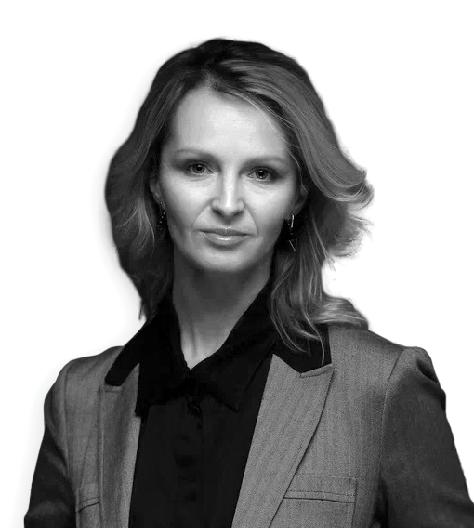
Both properties will be in Amaala, Saudi Arabia’s wellness-focused giga-project along the Red Sea. Amaala is powered by 100 per cent renewable energy and will have a zero-carbon footprint with zero waste to landfill once fully operational.
Integrative and medical wellness resorts are the fastest-growing trend in the wellness industry today and will continue to be in the next decade. Bearing in mind that being in the business requires careful planning to ensure a safe, operationally efficient, and results-driven environment, it is highly recommended that an experienced consultant be hired to guide the owners and operators into a successful venture.
DOMESTIC TRAVELLERS MAKE UP THE MAJORITY (82 PER CENT) OF WELLNESS TOURISM TRIPSTATIANA VELLER, managing director, Stirling Hospitality Advisors, a subsidiary of Ras Al Khaimah Hospitality Holding








 BY DIVSHA BHAT
BY DIVSHA BHAT
Tourism is an industry that has been growing exponentially in recent years, with more than 900 million tourists travelled internationally in 2022, according to UNWTO. However, with the increasing dependence on technology, the tourism industry is also becoming vulnerable to cyberthreats. The industry, therefore, needs to prioritise cybersecurity measures to safeguard customers’ personal and financial information and maintain their trust.





One of the ways in which technology has transformed the travel industry is through the use of online booking platforms and mobile applications. These tools have made it easier for
travellers to book flights, accommodation and activities from anywhere in the world. Tourists provide their sensitive information on booking platforms, including credit card details and passport information, which can be attractive targets for cybercriminals. However, this convenience comes with a risk. Hackers can easily access personal and financial information stored on these platforms and use it for fraudulent purposes. Cybercriminals can use various tactics, including phishing and malware, to infiltrate hotel and travel companies’ databases including sensitive details, and such information can be sold on the dark web, resulting in identity the t and financial fraud.
For instance, last year, the internal systems of the online travel platform, Cleartrip su ered due


to a breach. The Flipkart-owned platform confirmed in an email there was a security anomaly that entailed illegal and unauthorised access to a part of Cleartrip’s internal systems. It was reported that the hackers were selling the data on a private, invite-only forum on the dark web.

Another area where technology has impacted travel is in the use of biometric identification. Many airports and border control agencies now use facial recognition, fingerprint scans, and other biometric technologies to verify the identity of travellers. While this has streamlined the check-in process, it also raises concerns about privacy and security. Travellers should be aware of the information that is collected and stored by these systems and how it may be used. They should also be cautious when sharing personal information, especially with third-party service providers or online travel agencies.
Finally, technology has also made it possible for travellers to stay connected while on the go. From smartphones to smartwatches, there are now numerous devices that can keep travellers connected to the internet and to each other. However, this connectivity can also make them vulnerable to cyberattacks.
Research conducted by cybersecurity company NordVPN revealed that one in four travellers have been hacked while using public wi-fi on their travels abroad. The majority of those attacks occurred while people were in transit at airports, bus and train stations. It is important for travellers to be aware of the risks associated with using public Wi-Fi networks. They should also keep their devices
updated with the latest security patches and avoid downloading applications or opening links from untrusted sources.
Meanwhile, to prevent data breaches, the tourism industry needs to implement robust security measures. This includes using encryption to protect sensitive information, conducting regular security audits and implementing two-factor authentication. The industry should develop contingency plans and protocols to address cyber incidents e ectively. They should also have backup systems in place to ensure business continuity in the event of an attack.
Furthermore, to combat online booking fraud, the tourism industry must educate tourists on how to spot fake websites and phishing emails. Tourists should also be advised to book through trusted websites and travel agents to avoid falling victim to fraudulent activity. Tourists themselves must also take precautions to safeguard their personal and financial information. This includes using strong passwords, avoiding public Wi-Fi networks, and being cautious when sharing personal information online.
Additionally, hotels and travel companies need to educate their sta and customers on cybersecurity risks and how to prevent them. Sta should be trained on cybersecurity best practices, including password hygiene and customer data handling. Clients should also be advised to avoid public Wi-Fi networks, use secure passwords and keep their devices updated with the latest security patches.
Finally, it is essential for the travel and tourism industry to work together with government agencies and cybersecurity experts to create a robust cybersecurity framework. This includes developing guidelines and regulations that ensure the security and privacy of customer data and promoting cybersecurity best practices among businesses and tourists alike.
To prevent data breaches, the tourism industry needs to implement robust security measures. This includes using encryption to protect sensitive data, conducting regular security audits and implementing two-factor authentication. The industry should develop contingency plans and protocols to address cyber incidents effectively”
TOURISM IS AN INDUSTRY THAT HAS BEEN GROWING EXPONENTIALLY IN RECENT YEARS, WITH MORE THAN 900 MILLION TOURISTS TRAVELLED INTERNATIONALLY IN 2022


HIGH-END TRAVELLERS ARE CUTTING BACK ON THEIR HOLIDAY SPENDING. HERE’S WHAT A BLOOMBERG SURVEY REVEALED
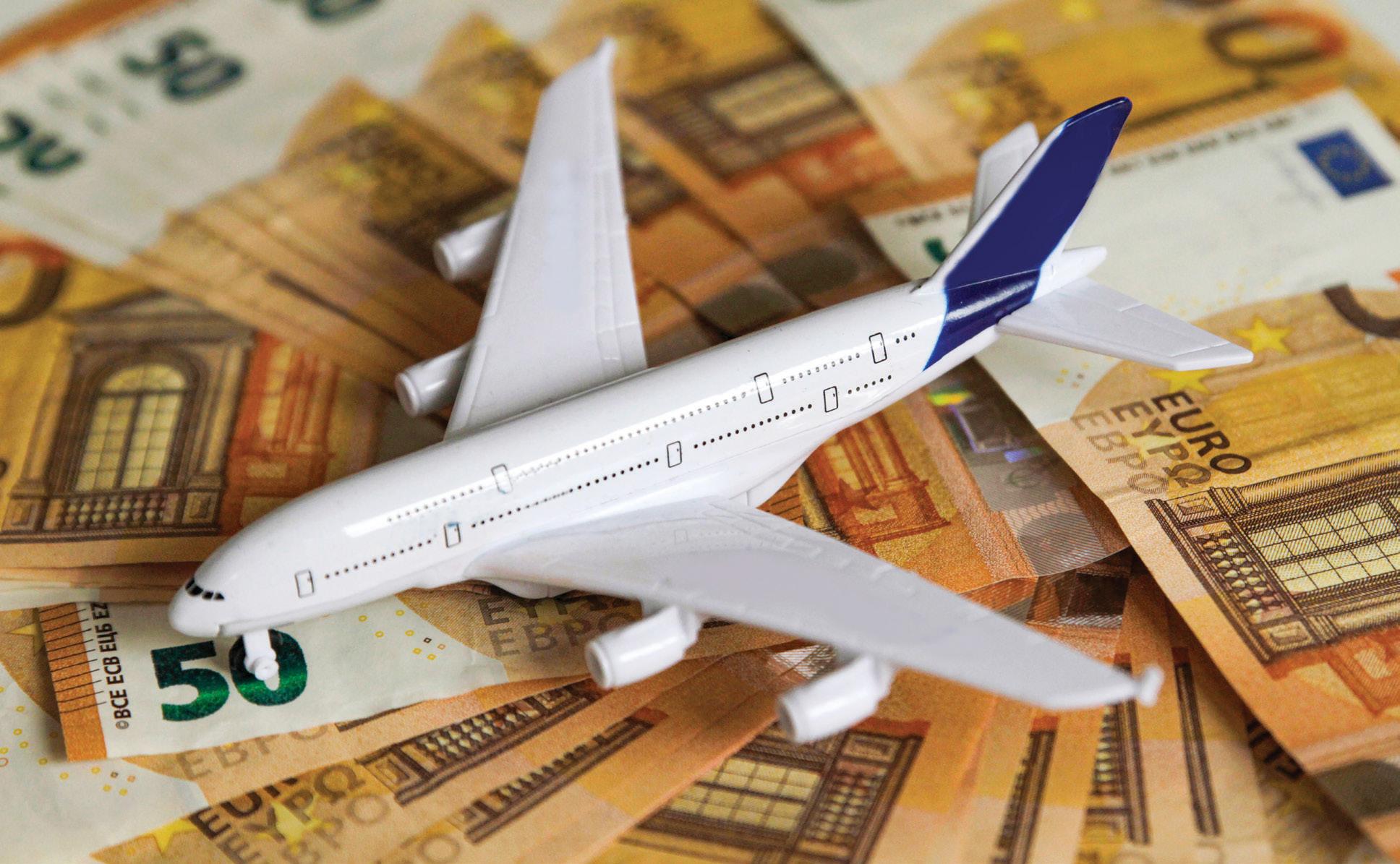
High-end travellers are pulling back on their vacation spending. They want to pay no more than $500 a night for a hotel, and they aren’t interested in paying extra for greener or fancier options, according to the latest MLIV Pulse* survey with 465 respondents, a little more than half from the US and Canada and a quarter from Europe.
This may be a reflection of diminishing consumer confidence or complaints that inflated pricing hasn’t been accompanied by a proportionate increase in service quality.

The results come during what should be one of the busiest periods for travel booking. March is when most people start to fi nalise summer plans and early birds get a jump on year-end holiday reservations.
Some 69 per cent of poll participants said their maximum budget per hotel room night was $500, while 24 per cent were willing to spend up to $1,000. Still, 5 per cent set their limit at $2,000, and 2 per cent continue to entertain spending $3,000 per night or
more. Respondents include traders, portfolio managers, senior managers and retail investors. Although $500 to $1,000 per night for a room might sound high, that range eliminates the fanciest hotels in most major markets, let alone suites or larger rooms at mid-tier properties.
According to data from Google, typical prices for five-star hotels in New York City are $523 to $999 per night in April and May. In Paris that number is higher, ranging from $707 to $1,382. In St. Barts, where late spring constitutes the tail end of the season, the typical price range for a top-end hotel stretches up to $1,451.
The results of the survey suggest that luxury
ANOTHER TREND BUSTED BY THE FINDINGS OF THE SURVEY IS THE CONTINUED GROWTH OF ‘BLEISURE’ TRAVEL , IN WHICH TRAVELLERS TACK VACATION DAYS ONTO A WORK TRIP TO ENJOY THEIR BUSINESS DESTINATION AT LEISURE

hotels, restaurants and airlines will face increasingly irritated consumers this summer.
Bank failures, fast inflation, elevated mortgage payments and a so tening labour market, especially in high-income sectors such as tech, could see tourists keep discretionary spending in check.
Travellers are watching their wallets, even a ter personal incomes rose faster than prices in the 12 months through February.
Limited appetite for excessive spending will probably also make some travelers buck at elevated airfares. Some airlines, like Deutsche Lu thansa AG, deliberately kept capacity in check, hoping pent-up, price-agnostic tourists would be willing to pay through their noses to get to desired destinations.
More than half of professional investors said negative economic factors, such as a recession, will undermine airline stocks in the next 12 months. Retail investors were more optimistic, with 60 per cent predicting positive momentum in the sector.
Another trend busted by the findings of the survey is the continued growth of ‘bleisure’ travel, in which travel;lers tack vacation days onto a work trip to enjoy their business destination at leisure; 62 per cent of professional investors and 56 per cent of retail investors said this isn’t something that they’re doing more of this year.

It may not be surprising to see that retail investors have more ongoing flexibility for remote work than banks and Wall Street firms, but it’s noteworthy that both groups are generally staying away from extended absences. In fact, a majority of respondents say their habits have recalibrated to pre-pandemic norms overall. Only 10 per cent say they find themselves making greener travel choices – contradicting industry reports – and 50 per cent say their spending has returned to prepandemic levels.
For those travellers, the days of so-called revenge spending as the pandemic passes are over, if they happened at all.
The number of people “splashing out” on their next vacation was exceedingly small: 7 per cent. A quarter said they’d possibly upgrade things one notch. Among the 18 per cent that said they would reduce spending, 72 per cent were professional traders and 28 per cent worked on the retail side.
One facet of travel that’s remained unchanged since 2019 is consumer sentiment about major aviation hubs. When asked which airport they dread the most, respondents coalesced around New York’s John F. Kennedy International Airport and London’s Heathrow, followed by Los Angeles International and Newark Liberty International Airports.
More than half of professional investors said negative economic factors, such as a recession, will undermine airline stocks in the next 12 months. Retail investors were more optimistic, with 60 per cent predicting positive momentum in the sector”
ACCORDING TO WORLD TRAVEL & TOURISM COUNCIL’S (WTTC) 2023


ECONOMIC IMPACT RESEARCH (EIR), THE TRAVEL AND TOURISM SECTOR IS CLOSING IN ON ITS 2019 PEAK, RECOVERING BY MORE THAN 95 PER CENT. HERE ARE THE KEY HIGHLIGHTS OF THE REPORT…
IN 2023, THE SECTOR IS FORECAST TO REACH
$9.5TN

JUST 5% BELOW 2019 PRE-PANDEMIC LEVELS WHEN TRAVEL WAS AT ITS HIGHEST
In 2022, despite the economic and geopolitical difficulties, the travel and tourism sector’s recovery continued at pace, growing 22% year-onyear to reach $7.7tn
IN 2021, THE GLOBAL SECTOR GREW 24.7% YEAR-ON-YEAR
The recovery represented 7.6% of the global economy , the highest sector contribution since 2019
FOLLOWING THE RECOVERY OF 11 MILLION JOBS IN 2021 , the sector created 21.6 million new jobs in 2022 to reach more than 295 million globally – one in 11 jobs worldwide
According to WTTC’s 2023 EIR, 34 of the 185 countries analysed have now recovered to pre-pandemic levels in terms of GDP contribution
BY END OF 2023...
Nearly half of the 185 countries will have either fully recovered to pre-pandemic levels or be within 95% of full recovery
BY 2033...
The global travel and tourism sector will grow its GDP contribution to $15.5tn, representing 11.6% of the global economy
SPENDING FROM OVERSEAS VISITORS GREW BY A RECORD 82% TO REACH $1.1TN IN 2022
The sector will employ 430 million people around the world, with almost 12% of the working population employed in the industry
The travel and tourism sector continues to recover at pace, demonstrating the resilience of the sector and the enduring desire to travel. By the end of the year, the sector’s contribution will be within touching distance of the 2019 peak. We expect 2024 to exceed 2019. The recovery will speed up this year as Chinese travellers re-enter the market and over the next 10 years, travel and tourism will continue to grow as a sector.” — Julia Simpson, WTTC president and CEO
The Artura’s brand new twin-turbo V6 is mated to an electric motor, and in unison, it produces 670hp p.66

Parmigiani Fleurier Tonda

PF Minute Rattrapante
Marking a global première, the timepiece takes a concept first seen on the Tonda PF GMT Rattrapante, emerging as a watch with superimposed minute hands. Featured in a 40mm steel case, the in-house movement of the Tonda PF Minute Rattrapante animates a unique splitminutes function.
“Yas SeaWorld Research & Rescue Abu Dhabi aims to bring its nearly 60 years of experience and knowledge in animal care, rescue, rehabilitation and conservation to the UAE and wider region”Rob Yordi, general curator of SeaWorld Abu Dhabi and Yas SeaWorld Research & Rescue BY NEESHA SALIAN

Tell us about Yas SeaWorld Research & Rescue Abu Dhabi and the role you see it playing in the region.
Yas SeaWorld Research & Rescue
Abu Dhabi is the first-of-its-kind dedicated marine research, rescue, rehabilitation and return centre in the region, serving as an advanced knowledge hub for marine science.
Building on SeaWorld’s legacy of being one of the largest marine animal rescue organisations in the world, Yas SeaWorld Research & Rescue Abu Dhabi aims to bring their nearly 60 years of experience and knowledge in animal care, rescue, rehabilitation and conservation to the UAE and wider region.
As one of the earliest team members on this project, it is truly exciting to witness the realisation of the centre and the upcoming park.
Being a part of this talented team, overseeing the development of our aquaculture facilities and veterinary clinics, as well as the launch of a modern rescue fleet equipped with state-of-the-art vessels that will soon venture into the Abu Dhabi mangroves and Arabian Gulf to save animals in need, is a privilege and a source of immense satisfaction.
As the UAE’s first dedicated marine research, rescue, rehabilitation and return centre supporting regional and global conservation efforts, what are some of its key highlights?
Spanning nearly 9,000 square metres, Yas SeaWorld Research & Rescue will serve as the region’s knowledge hub for marine science and environmental education.
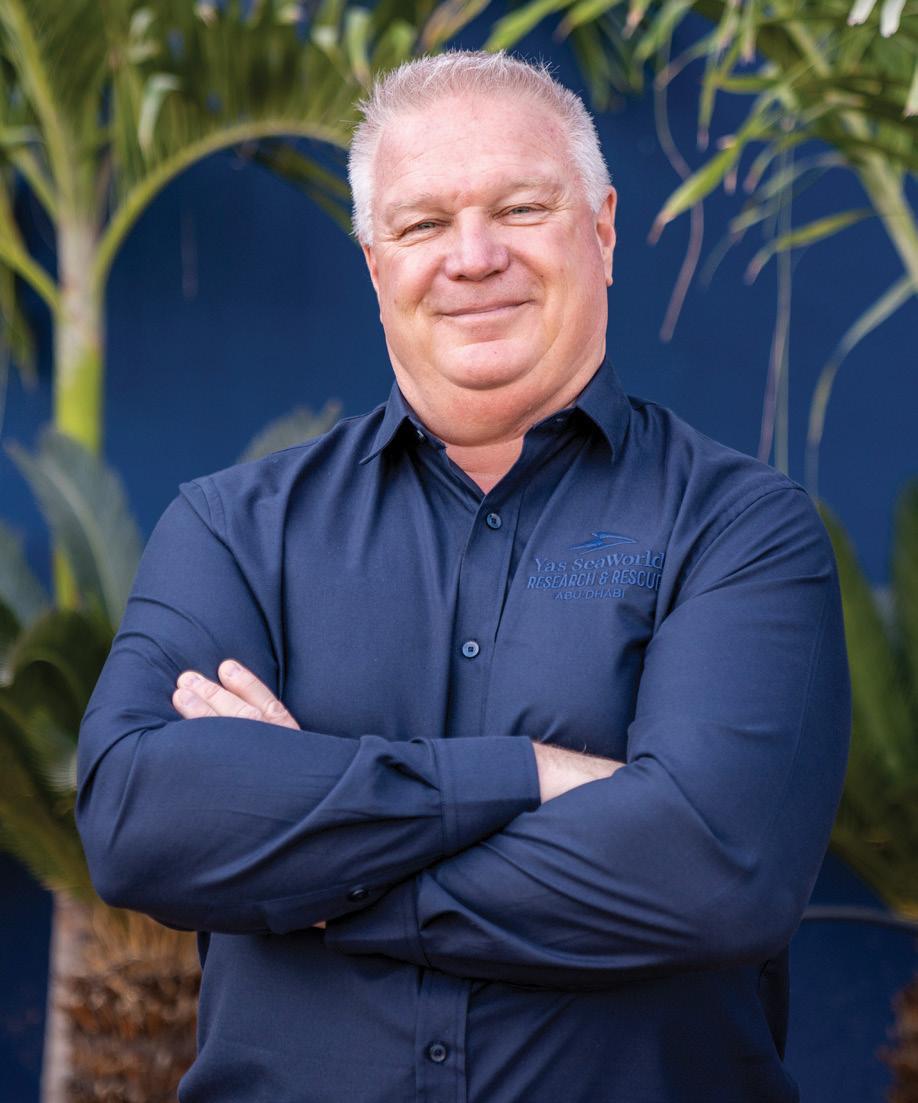

Building on the four “Rs” which you mentioned in your question, in addition to
education, the key highlights of the centre will be its focus on research, rescue, rehabilitation and return.
This includes some state-of-the-art equipment and infrastructure, such as two custom-made rescue boats and personal watercraft as well as other vehicles for rescue purposes, rescue pools with lifting floors and full spectrum lighting to mimic day and night, a rescue clinic and veterinary hospital, as well as dry and wet classrooms and an auditorium seating over 150 people.
We’ve brought together a skilled multinational and multidisciplined team of marine scientists, veterinarians, animal care professionals, and marine animal
rescue experts as well as a joint team of educators with SeaWorld Abu Dhabi. The centre’s rescue team will aim to support the development of a strong regional rescue network by working closely with partners and authorities to rescue, rehabilitate and return marine animals to their natural habitats.
On the other hand, our research team will conduct fundamental and applied studies focusing on the marine ecology of the Gulf covering topics such as marine biodiversity, ecosystem resilience, sensitive wildlife conservation, critical habitats restoration, fisheries, pollution and wildlife health.
What are some of the highlights when it comes to this region’s marine environment?
The Arabian Gulf’s marine environment is characterised by unique and diverse ecosystems with several highlights, including:
Coral reefs: The Arabian Gulf is home to some of the world’s most significant coral reefs, including the Dubai and Abu Dhabi coral reefs. These reefs provide habitats for various marine species and are essential for maintaining the Gulf’s ecological balance. Marine biodiversity: Despite its extreme environmental conditions, the Arabian Gulf boasts rich marine biodiversity, with over 700 species of fish and more than 200 species of coral.
Endemic species: The Gulf is home to several species that are found only in this region, such as the Arabian carpet shark, Arabian angelfish, and the Arabian pipefish. Seagrass beds: The Gulf is also known for its extensive sea grass beds that serve as breeding grounds and habitats for various marine species, including endangered dugongs.
Mangroves: The Gulf’s coastlines, primarily in the emirate of Abu Dhabi, are lined with extensive mangrove forests that provide critical nurseries and habitats for fish and other marine species, as well as playing a crucial role in maintaining the region’s overall ecological balance.
What are some of the challenges threatening the marine environment and marine life in the UAE and around? An extension of the Indian Ocean, the
“Despite its extreme environmental conditions, the Arabian Gulf boasts rich marine biodiversity, with over 700 species of fish and more than 200 species of coral”Rob Yordi
Arabian Gulf is a relatively young sea that boasts unique environmental conditions due to factors such as depth, currents, salinity and temperature. However, the extreme environmental condition of the Gulf poses significant challenges for the diverse range of marine species that inhabit its waters. While much remains unknown about how these species have adapted to survive in this environment, our work aims to answer fundamental ecological questions to safeguard the marine ecosystems in the region.
While our team is still in the early stages of investigating these specificities and their impact on marine species, we are acutely aware that larger marine flora and fauna can be severely impacted by these conditions, as well as their proximity to human activities.
Tell us about SeaWorld’s conservation work. Will we see it unfold in this region and what will be the key areas of focus?
SeaWorld is committed to conservation and environmental stewardship, and this commitment extends to our presence in the UAE with the opening of SeaWorld Parks & Entertainment’s first overseas park in May.
Our conservation work in the UAE will focus on several key areas, including: Marine conservation and research: It will serve as a hub for marine conservation and research, providing a platform for scientists and researchers to study and protect marine life in the UAE and beyond.
Education and awareness: SeaWorld Abu Dhabi will offer educational programmes for visitors of all ages, with a focus on increasing awareness and understanding of marine life and the importance of conservation.
Animal rescue and rehabilitation: It has a long history of rescuing and rehabilitating
sick, injured, and orphaned marine animals. SeaWorld Abu Dhabi will continue this tradition by working with local authorities and organisations to provide care for marine animals in need.
Sustainable practices: It will prioritise sustainable practices in all aspects of its operations, including energy and water conservation, waste reduction and sustainable sourcing.
Community engagement: It will engage with local communities to build partnerships and support conservation efforts in the UAE and the wider region.
Overall, SeaWorld Abu Dhabi will be a destination that showcases the beauty and diversity of marine life while promoting conservation and environmental stewardship. The park will serve as a powerful tool for research, education and conservation, and will help to protect and preserve marine life in the UAE and beyond.
How will the centre work with the community and schools to raise awareness about marine life and its conservation?
Yas SeaWorld Research & Rescue’s Education Team will soon offer workshops in schools that support ‘Next Generation Science Standards’ and other internationally benchmarked learning aims. We also aim to provide a unique curriculum that engages all generations in scientific thinking for ocean health in our everyday lives.
Most importantly, we want to make our research accessible. In the long term, the centre also hopes to host public events such as seminars and science talks covering a wide range of topics related to marine sciences, with local and international top marine scientists.
The overall aim of Yas SeaWorld Research & Rescue Abu Dhabi’s education programme to inspire the public’s commitment to marine conservation by raising scientific awareness and promoting responsible behaviour towards the marine environment. Yas SeaWorld Research & Rescue seeks to foster the next generation of local marine scientists as it will welcome university students to pursue their studies in marine science and conservation within its research division.
Tell us how this project ties in with Miral and Abu Dhabi’s larger vision and strategy.
Yas SeaWorld Research & Rescue is an important part of Miral’s and Abu Dhabi’s larger vision and strategy, particularly as the UAE declared 2023 as the ‘Year of Sustainability’.
This project aligns with this commitment and aims to raise awareness about marine conservation and sustainability in the UAE and beyond.
More specifically, two central pillars of the Miral strategy are Innovation and Partnerships, and at the centre this will be part and parcel of what we set to achieve.
Our state-of-the-art facilities are some of the best displays of veterinary innovation the world has to offer, and by always exploring partnerships in the country and wider region we build on Miral’s vision and strategy. Overall, with the UAE’s rich seafaring past, Yas SeaWorld Research & Rescue is also testament to Miral’s focus on reflecting the unique culture and heritage of Abu Dhabi.
“SeaWorld is committed to conservation and environmental stewardship, and this commitment extends to our presence in the UAE with the opening of SeaWorld Parks & Entertainment’s first overseas park in May”
OVERALL, SEAWORLD ABU DHABI WILL BE A WORLD-CLASS DESTINATION THAT SHOWCASES THE BEAUTY AND DIVERSITY OF MARINE LIFE WHILE PROMOTING CONSERVATION AND ENVIRONMENTAL STEWARDSHIP
DANIELLE SMITH, DESIGN DIRECTOR OF FUTUREBRAND, THE AGENCY BEHIND ATLANTIS THE ROYAL’S VISUAL IDENTITY, TELLS US HOW BRAND BUILDING IS ESSENTIAL TO AN ORGANISATION’S SUCCESS
 BY NUSRAT ALI
BY NUSRAT ALI
Tell us about Atlantis The Royal’s branding journey and the strategy behind it. In an increasingly competitive market, hospitality developer and operator Kerzner International wanted to expand its Atlantis brand with the world’s most ultra-luxury five-star experiential resort. Hence, Atlantis The Royal was conceived.
FutureBrand was asked to develop a strategic positioning and visual identity fit for a unique and exclusive destination that would redefine the luxury category and elevate it to unprecedented levels. In addition, the property needed to appeal to a new generation of luxury-seekers – discerning guests with an appreciation for the highest level of luxury and a desire for a curated array of awe-inspiring experiences.
The hotel’s architecture, coupled with its surrounding environment, influenced our strategic and creative response. The resulting brand combines the physical beauty of the location with the unique sense of possibility that guests experience from the moment they arrive. ‘Ignite the horizon’ defines Atlantis The Royal as the place where the sea meets the sky, where
illusions and reality are hard to distinguish, where anything is possible, and through the door, infinite adventures await.
How have brand-led strategies elevated the perception of luxury throughout the resort?
The notion of storytelling is an essential technique in elevating a luxury brand. At Atlantis
The Royal, every touchpoint finds ways to surprise and delight by incorporating the brand’s tone of voice at every turn, from the door hanger to the laundry bags and gifting items. It is the antithesis of the mainstream cookie-cutter approach of repeating the logo to apply the brand.
Luxury is also defined by personalisation and the ability to cater to every individual need. The resort’s ‘pillow menu’ – where guests can choose their preferred pillow shape – is an excellent example.
This philosophy extends into the design of the identity itself. Assets such as the brand’s typeface are bespoke instead of buying off the shelf to ensure exclusivity and create complete visual harmony with other brand assets such as the logo and icon suite.
THE MOST SUCCESSFUL BRANDS ARE THOSE THAT CAN DELIVER THEIR PURPOSE THROUGH EACH OF THEIR FACETS
Finally, the perception of luxury at Atlantis the Royal has been maximised by their commitment to using the most premium materials and print finishes to implement the brand.

Alignment of a brand’s strategy throughout the organisation is vital. It is the blueprint that everyone follows. It summarises what you are here to do as a business and your reason for being beyond making money –what you believe in, what you offer, how you behave and your characteristics. It is the filter through which all decisions are made. Brands with strong strategic foundations are best equipped to build a strong organisation.
Bolstered by strategy, the most successful brands are those that can deliver their purpose through each of their facets, creating connected experiences. Consistency, memorability, and authenticity are all factors that make a brand’s visual identity a success. For instance, we refreshed the brand assets of Atlantis The Palm to create a cohesive brand experience between the two properties and form an ultimate destination brand. This included introducing a more energised colour palette, the bespoke ‘Atlantis Resorts’ headline font, iconography, and a brand pattern. The updated assets expressed the unique positioning of the Palm: ‘Bringing the Extraordinary to every holiday and experience.’
The development of the digital world has changed some aspects of brand building, while some elements remain the same. The spaces brands inhabit and their reach is broader than ever before. The way they engage and offer experiences can be more personal and immersive. Even identity assets are created considering the needs of digital expression, thinking foremost of motion and behaviour. We consider these an extension of a brand’s application. It does not change the fundamentals of building brands and the way in which we aim to solve the brand’s objective.

MICHAEL WARD, MANAGING DIRECTOR OF HARRODS, THE UK-BASED LUXURY DEPARTMENT STORE, SHARES HOW THE STORE IS ADAPTING TO CHANGING CONSUMER EXPECTATIONS AND ITS CLOSE TIES TO ITS MIDDLE EAST CLIENTELE
BY NEESHA SALIAN
How has the luxury retail space evolved globally? Tell us how Harrods is leveraging these trends.


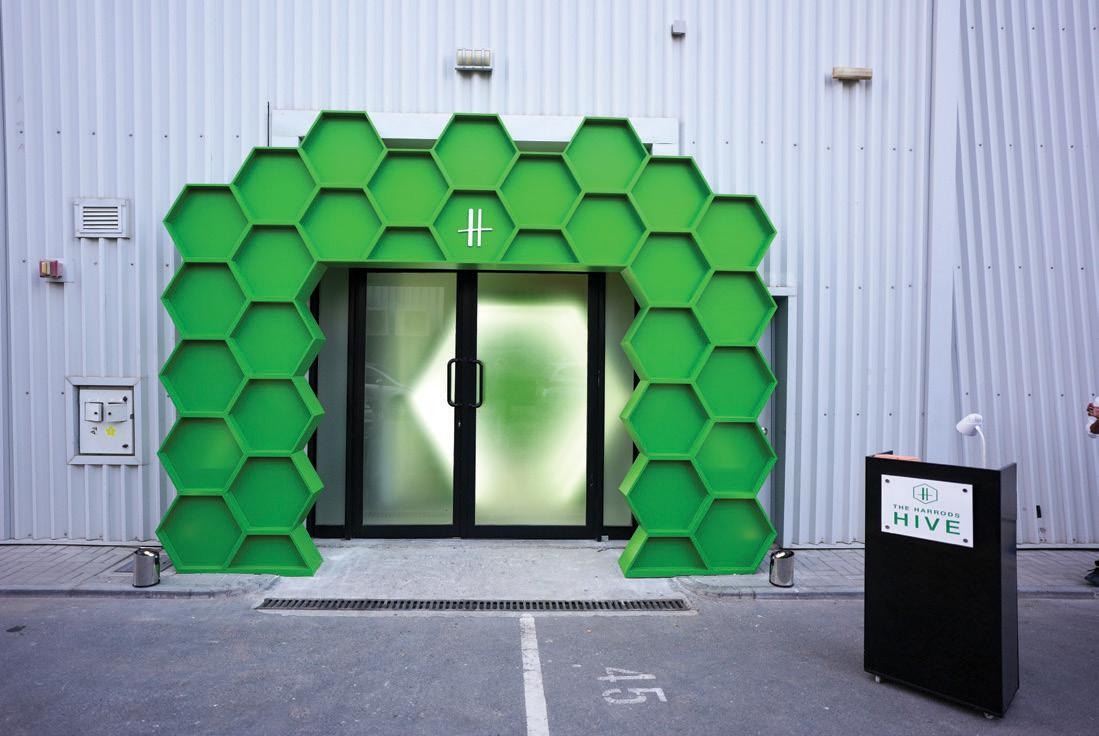
We see luxury retail today as being shaped by two trends – the demand for unique experiences that delight and reward the customer and the desire for rarity and exclusivity. Harrods is fortunately well positioned to lead in both of these areas. A visit to the store can always be a new experience, with ever more inventive popups and brand collaborations, and we pride ourselves on the exclusivity of what we can o er to our customers, whether it is accessories or watches, we bring together the rarest, most sought-a ter items under one roof.
What were the store’s key performance highlights in 2022?
Last year was a return to strength for us a ter recent years’ lockdowns and travel restrictions. We were very pleased to have our GCC clientele return in force for the summer and were able to welcome returning customers with new in-store developments, from new menswear spaces on the second floor to a number of new dining experiences, including adding to our portfolio of partnerships with internationally renowned chefs with the launch of our latest restaurant, Studio Frantzén, in partnership with six Michelin star chef Bjorn Frantzén. Our
collaboration with Dior for the Fabulous World of Dior at the end of the year was also a strong performance driver, bringing a lot of footfall into store to close the year.
How has Harrods maintained its relevance and popularity in a world now leaning toward e-commerce?

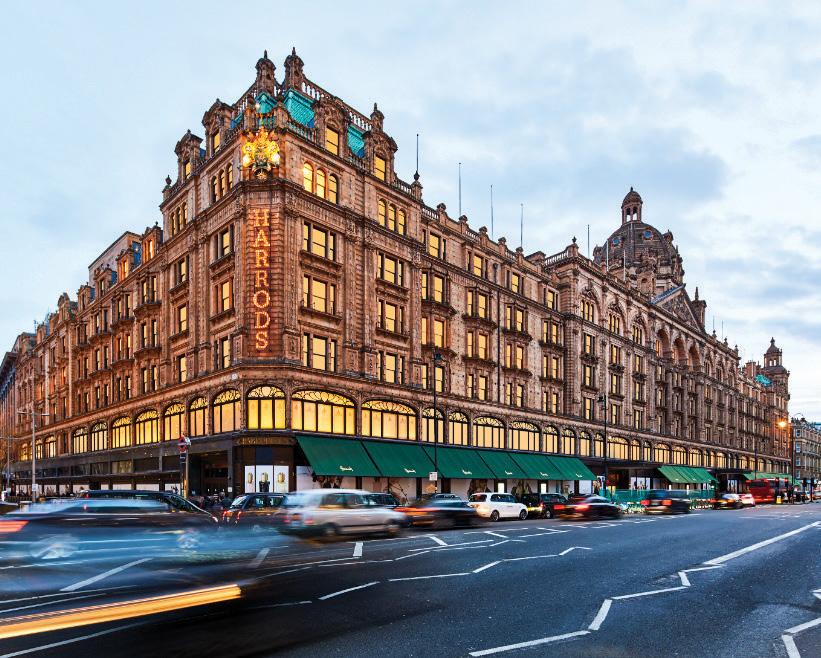
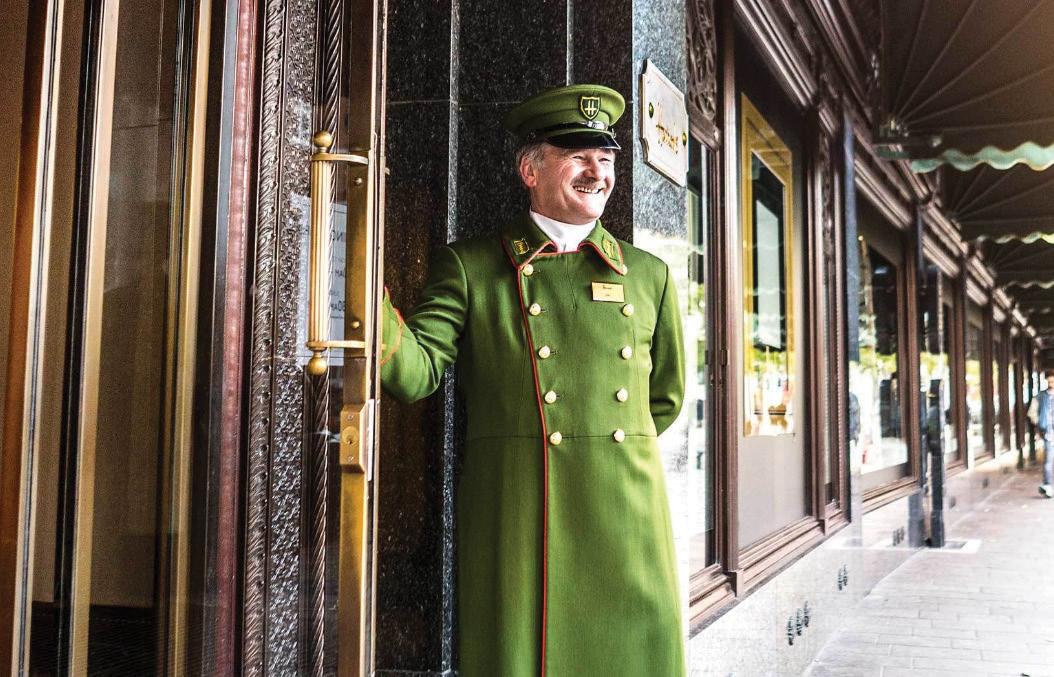
We serve our customers however they best prefer to shop – our Knightsbridge store remains at the heart of our business but harrods.com means our customers can shop online from any part of the world.
What both our in-store and e-commerce services o er is the very widest selection of global luxury brands and unparalleled service. For our in-store experience we then focus on the experiential – whether that is something like our incredibly popular recent partnership with Louis Vuitton and Japanese artist Yayoi Kusama –or the finest dining offerings and wellness services; a visit to our store serves every sense.
How would you define the Harrods experience and what sets it apart from other luxury retail stores?
Harrods acts as a shop window to the world of luxury, presenting not only the widest selection of the world’s top luxury brands but, what sets us apart from any other retailer, is that we then can o er the most exclusive o erings from these brands too, with sought a ter items which can only be found in our Knightsbridge store.
Our store also houses 22 dining destinations, representing di erent cuisines and bringing together a host of award-winning chefs under one roof. Finally, one of Harrods’ most renowned attributes is our unmatched service. This philosophy of “anything is possible” ensures we remain the international leader in luxury retail.
Tell us about the GCC and UAE as important source markets for you. What is the percentage of shoppers from this region?
Our GCC customers are indeed very important to us. Sixteen per cent of our clientele in 2022 (based on Harrods Rewards data) was from the GCC and even during the travel restrictions of the pandemic period,

we retained a strong GCC customer base, representing 10 per cent of trade in 2021. Harrods has a longstanding relationship with the Middle East customer and our constantly evolving o ering means we can shape a vision of modern luxury for generations to come.
What are some of the key trends when it comes to shoppers from the Middle East?
The Middle East customer, especially the millennial and Gen Z generations, expect brands to increasingly play a role in elevating local talent. To this end, we are very much looking forward to launching our Harrods Hive in the region this year. The Hive is our initiative to bring together a number of experts from di erent disciplines to share knowledge and inspire other future creatives through networking events and industry-led panel discussion. We hosted the region’s first Hive event, in the UAE, on March 15.
What are the most important fashion categories for Middle East customers? Are these changing?
We see strong demand across fashion but what is most important for our customers from the Middle East is firstly rarity and exclusivity and secondly, we see a high desire for the more luxurious fabrics and that is consistent across categories.
In addition to apparel, what are some of the other important segments for the store?
We have 330 retail departments and concessions in our Knightsbridge store so there is so much more beyond apparel and accessories. The Harrods Beauty Halls are known for luxury skincare, perfume and makeup from classic favourites to the
next cult brands, our home o ering brings together prestigious brands with the expertise of our interior design studio and our historic Food Halls are the world’s greatest food emporium and enduringly popular.
Tell us about the store’s sustainability initiatives.
Our ambition is for Harrods to operate with the highest environmental integrity whilst continuing to deliver the highest quality luxury services and products. Harrods’ sustainability strategy ‘Harrods Path’ includes our Scope 1 & 2 Net Zero goal by 2030, new business models like our ‘Luxury for Life’ o ering to ensure items can be treasured forever, guidelines for how we responsibly source materials and ingredients and targets to tackle waste through both reduction and recycling.
We’ve made some significant steps in recent years, with our small-van fleet now 100 per cent electric and our large-van fleet run on biofuels and we have removed all single use plastic from our customer outbound packaging and removed plastic carrier bags from across the store.
Tell us about the Luxury for Life initiative and its impact.
Our ‘Luxury for Life’ offering brings together in-store restoration, repair and remodelling services for our customers.
We have partnered with The Restory to help customers lengthen the lifespan of their luxury accessories and our Harrods Atelier service provides repairs and remodelling services. It’s been really popular, bringing new life to some much loved items and our customers appreciate the ease of being able to drop o items in store and then picking them up next time they shop.
For us, 2023 will continue to be about the curation of the exceptional and collaborating closely with brands to give unique and exclusive experiences to our customers. There will also be a number of new restaurant openings, bringing even more internationally renowned names under one roof. Finally, we will be starting to build on the womenswear floor to further elevate this space and beginning the build of a new 23,000 square foot private shopping area on our roof.
“We see strong demand across fashion but what is most important for our customers from the Middle East is fi rstly rarity and exclusivity and secondly, we see a high desire for the more luxurious fabrics and that is consistent across categories”Michael Ward BY SHIVAUM PUNJABI

McLaren has had a fascinating history, from being one of the most successful Formula 1 constructor teams to producing arguably the most fantastic sportscar ever – the McLaren F1. This automaker with a motorsport pedigree – in its short stint as a carmaker – has also given us modern-day collectables, such as the McLaren Senna, named after one of the most revered F1 drivers, Aryton Senna, the Speedtail and 765LT. It has even collaborated with Mercedes to produce the McLaren Mercedes SLR – another legendary sports car that is highly revered among supercar collectors today.
But put aside history, let us talk about the present. McLaren comes out all guns blazing with the new Artura. In fact, the British performance carmaker braved the pandemic to launch its all-new sportscar in 2021.

However, the years following the pandemic saw the entire global auto industry lag in car supply due to a logistical scarcity revolving around semiconductors, which meant deliveries of the new McLaren Artura in the UAE only commenced in April this year.
The McLaren Artura is the luxury automaker’s take on a modern-day sports car, and here’s everything you need to know about it.
You would be forgiven to think it is an adaption of its predecessors, but the Artura is new, as in ‘never’ before. A boomerang
inspires the headlights. Boasting a distinctive car design, the Artura is designed to make sure it channels air through its athletic body to maximise agility, grip and downforce, presenting you with the quintessential McLaren feeling.

The supercar is also the first to be based on McLaren’s new carbon fibre CLA architecture, which makes the Artura lighter than its predecessors.
Further, in pursuit of lightness, the entire rear clamshell cover for the engine is carved out of a single piece of metal. It’s designed to be small, noble, agile and athletic.
All in all, the entire car delivers upon the “drama” as promised. It is low, it is snug, and when you get in and out by operating the dihedral doors, you’ve got everyone’s attention – exactly how supercars are meant to.

If you think dihedral doors are a talking point, you need to know about the engine.
For the first time ever, McLaren debuted a plug-in hybrid setup to a massproduction car, mass being relative here. The Artura’s brand new twin-turbo V6 gets mated to an electric motor, and in unison, it produces 670hp.
The power drives the rear wheels and is put down via an eight-speed dual-clutch gearbox. All of this sends the Artura from a standstill to triple-digit speeds in 2.9 seconds. For example, it took me longer to think about this sentence than what this supercar requires to reach 100km/h. All this can propel the car to a top speed of 330km/h, and what makes it possible is Artura’s lightweight body structure. It weighs in at just under 1,500 kilos.
“Further, in pursuit of lightness, the entire rear clamshell cover for the engine is carved out of a single piece of metal. It’s designed to be small, noble, agile and athletic. All in all, the entire car delivers upon the drama as promised”
By the time you’ve read this, you can comprehend that Artura is fast, but in today’s age of supercars, hypercars, and even electric vehicles (EVs), fast is boring. It is no longer about how quickly you can go, but how the car makes you feel while going fast. McLarens of the past were cars that sometimes terrified their drivers.
One needed to be a professional race driver or understand the car dynamics to exploit their full potential. Artura is the opposite personality of that. You would be forgiven if you thought the Artura was closer in driving experience to a Porsche 911 than any previous McLaren. The handling on the Artura is sublime – the hydraulic steering, a rare feat in modern cars, provides the perfect feedback for a spirited driving experience. The weigh-in of the steering wheel is precise, and you know exactly what the tyres are doing, be it on the road or the racetrack. The entire feedback is very linear, inspiring confidence even with novice drivers.
The McLaren Artura delivers on both performance and daily driving duties – it is a one-car-fits-all driving solution. For everyday driving duties in the city, Artura fits the bill. If you decide to go to the shops, the all-electric mode can help you get in and out of town quickly and with zero emissions. The electric motors even give you a top speed of roughly 90km/h. So, you are not only doing the world a favour, but also enjoying a pure electric driving experience in a PHEV sports car.
A new car deserves an entirely new interior, and Mclaren provided just that to go along with an exhilarating driving experience. McLaren builds over its minimalistic design by removing buttons, as everything is now operated via an 8.0inch floating touchscreen.
The Artura’s infotainment system comes overlaid with all-new software, housing modern connectivity features such as smartphone and Bluetooth connectivity and built-in navigation. The steering wheel is made entirely of aluminium and is devoid of any buttons.
Its cabin brims with some exotic materials such as leather and microsuede. The seats are comfortable enough for pleasurable long-distance cruising.
Should you buy the McLaren Artura?


I came away highly impressed by the Mclaren Artura. It superseded all my expectations. Yes, there is competition from the Italians, but the Artura holds its ground in the face of a fight.
The Artura is now locally available at your nearby Mclaren dealership. It is priced at Dhs1.1m
“The McLaren Artura delivers on both performance and daily driving duties”
to embark on a transformational digital marketing or process shi t due to resistance to change, lack of expertise, data privacy issues, integrating legacy systems, measuring ROI and meeting customer expectations.
Many organisations have developed internal digital squads and built encompassing teams due to the Covid-19 transformation. Although this approach is a great one, we have also observed that these teams tend to grow thinking from the inside out due to organisational structures. They lose sight of the ongoing, nimble, outside-in ability to adjust to rapidly changing customer behaviour and requirements.
What is the core concept of RBBi? What is its USP?
RBBi embodies two core things: Firstly, to make digital more human, and secondly, to do what we do the right way. That’s where the name comes from in the first place – Red Blue Blur Ideas. We focus on human-centred solutions encompassing user experience, design, research and brands, as well as service design. We are the first company in the region to build a usability testing lab to help quantify and qualify design decisions.
Give us an overview of your operations. With our head o ce in Dubai, RBBi has a substantial reach into the GCC region,
the US, the UK and Asia. Although we have provided services and solutions to several of our clients to enhance their business o erings and end-user experience, we have been recognised significantly in the market for our work with the UAE government across multiple departments and services. RBBi has been a bootstrapped operation from day one, growing organically year on year. We have more than 40 team members, and 95 per cent of us are based in Dubai.
What are some of the biggest hurdles that companies face with digital marketing and transformation?
Companies usually find it challenging
With over a decade of expertise in usercentred design, research and testing, RBBi provides clients with a seamless, personalised customer experience. Our technology-agnostic approach helps us focus on the end-user experience and guide the implementation of new technologies, integration of legacy systems, and evaluation of digital marketing.
What are some of the milestones the business has achieved since setup?
One of the most significant achievements that my co-founder and I are proud of is the pivotal role RBBi has played over the years in educating the market on why it is imperative to work with a human-centred approach to design. Our experience in the

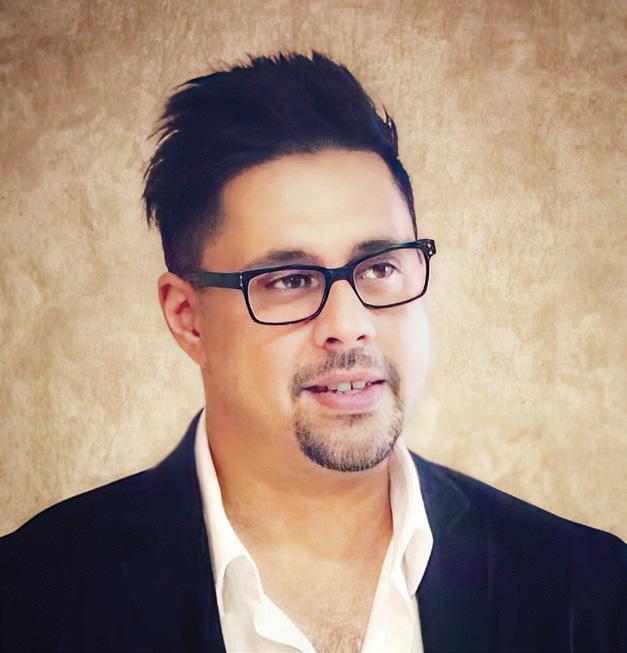
We look at how three boutique agencies are making a signifi cant impact in helping businesses and individuals achieve their goalsAmol Kadam, co-founder and CEO, RBBi, and Devesh Mistry, co-founder, RBBi
region has enabled us to raise the bar as a digital marketing agency and as a consultancy that provides an excellent level of service to our partners and clients in a timely and e cient manner.
What’s the most important lesson of entrepreneurship that you’ve learned?
This is less of a lesson and more of a validation. As much as running a business is outward-focused, it is also crucial to be inwardly attentive. Our success lies in keeping our teams excited and happy; we are also a transparent and inclusive firm. When you have a team that truly believes they are making a significant di erence to clients and their businesses, success is inevitable. Over time, I learned how important it is to define your role in the business well. The best thing you can do as a founder – whether you have multiple founders or you’re on your own – is outline your role and responsibilities.
What are your upcoming expansion plans for the business?
We are now slowly expanding our portfolio to provide a broader range of services and target new markets. On the strength of our UX (user experience), usability and SEO capabilities, we are now expanding into a broader range of process optimisation services, such as service design and customer journey optimisation.

What has inspired your journey and the creation of Skaya Art?
Art has always had a special place in my life. My father was an art collector and he introduced it to me when I was a child. I fondly remember him taking my sister and me to galleries and on tours for seeking treasured art pieces in antique shops all across Europe. I have carried these memories with me all through my life and want to instill the passion for art in a similar way to budding artists.
A ter relocating to the UAE, a friend of mine who was an artist got scammed by an art agency and lost her money. She recovered her artwork and brought it to my house and soon convinced me to manage her artwork. I was new to the
UAE and did not know much about the local art business. Seven years later, she is still with my agency.
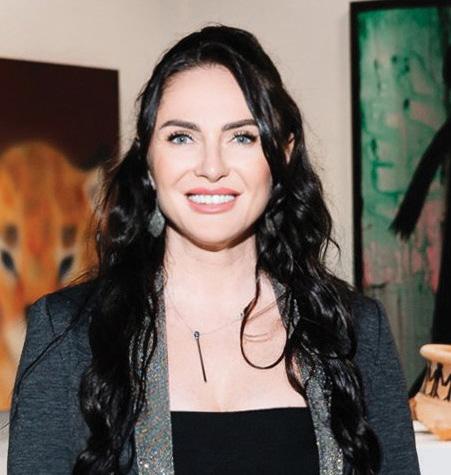
I quickly discovered that the nation’s art scene had huge potential given its cosmopolitan population, diverse mix of cultures and growing creative economy. There was a lack of art consultants that could provide an end-to-end service for artists looking to establish themselves in the UAE and prospective buyers, so I set up Skaya Art to service their needs and fully pursue my passion for art.
By combining my expertise across banking, investments, design, and consultancy, I created Skaya Art to utilise my skill sets and connections while supporting the local art industry.
Tell us how you are encouraging talent and showcasing artists.
We actively partner with artists to build their exposure and help them navigate the local art landscape. We have a dedicated team that helps budding artists understand how to brand themselves, feel confident when showcasing their work and explore exhibiting opportunities.
We guide them step-by-step and cater to customised demands. As an artist, focusing on your craft is not enough to build your exposure, you need to brand yourself uniquely to establish an identity to the public, nurture trust, acquire a reputation and differentiate yourself –all factors which will help you sell your work and secure display opportunities with prominent galleries.
When encouraging artists, we try not to set any limitations and only advise them on how to present their art as a series with a story as we don’t want to interfere with their creative process and vision. Through Skaya Art, we also remove artists’ stress from various tasks like marketing, client communications and finance as it tends to obstruct their passion.
We also try to push artists out of their comfort zone. Sometimes I spend time with them in finding inspiration for artwork whether it be going to the cinema together or just a walk in the park. In this way, I love to study the psychology of each artist that is involved with Skaya Art and discover their preferences to help them reach their full potential.
How would you describe the independent art gallery scene in the UAE?

Many versatile galleries have launched in the UAE without a proper concept or direction as they still have a weak understanding of the art sector. Galleries like to represent popular international artists and those that are Arab-based and are still afraid to take risks. However, some of the independent art galleries are insightful and are quickly evolving to incorporate more diverse art forms. There has been a rising display of digital art, NFTs, installation art, artificial intelligence and augmented reality. Galleries are also experimenting more with immersive and multisensory experiences to provide unique encounters that are more engaging.
Are you also looking at digital art/ NFTs?
In this regard, I feel like an outdated individual trying to learn something new. Our artists are young and continually teaching us about digital art so
we are gradually understanding more about them and learning how to make the best use of them to benefit all our stakeholders.
Any words of advice for female entrepreneurs?
Always believe in yourself and build a strong support network with individuals that align with your values. This will take you far in your journey.
Embrace failure, learn constantly, stay focused and take calculated risks. Recognise that you can grow with every opportunity and be ready to adapt with changing times.
Celebrate your success as they are a testament to your vision and can help boost your confidence and motivate your entire team.
Remember, being a female entrepreneur can be challenging, but with determination, hard work, and the right mindset, you can achieve great success.
Who are your female role models in business?
Amal Clooney, the Queen of Jordan Rania Al-Abdullah and Sheikha Moza bint Nasser from Qatar are a few of my female role models. It is important to me that a woman is engaged not only in business, but also sets the right priorities by strictly conducting work with a soft elegance. These ladies embody these values and I cherish them for that. These ladies also showcase that family comes first and business comes second – a critical aspect for me as I always want to show my children that a woman can be a mother, a wife and a successful entrepreneur at the same time.
“WHEN ENCOURAGING ARTISTS, WE TRY NOT TO SET ANY LIMITATIONS AND ONLY ADVISE THEM ON HOW TO PRESENT THEIR ART AS A SERIES WITH A STORY AS WE DON’T WANT TO INTERFERE WITH THEIR CREATIVE PROCESS AND VISION”
EMBRACE FAILURE, LEARN CONSTANTLY, STAY FOCUSED AND TAKE CALCULATED RISK
What are some of the key digital marketing trends that you see playing a key role in the business this year?
Social media has become the most e ective way of promoting any brand, not only in Egypt but regionally and globally. We have over 93 per cent of the population carrying smartphones with direct access to social media platforms in addition to the fact that most brand recommendations come from users or clients who used the brand and recommend it to other clients by simply sending a link of a post or a video of a brand they like.
But as nice as it sounds, the social media playing field is quite competitive and content is extremely important to distinguish a brand, service, product, or even a person in an ecosystem full of noise and disruption. Our team works with a mix of these elements to provide stronger, e ective and impactful content to clients.

Tell us the story behind the creation of your agency.
Conceptual ERA, an Egyptian-founded 3600 marketing and advertising agency, is one of these interesting stories of success which now is taking its first steps in growing within Dubai to serve the MENA region. We took the decision to relocate to Dubai to push the boundaries of our projects and team to be able to compete on a global scale given the supportive business environment in Dubai. We work with several regional key players in the Gulf market, providing them with off-site and quality service and a competitive price. We serve regional and international clients using our creativity and agility in making
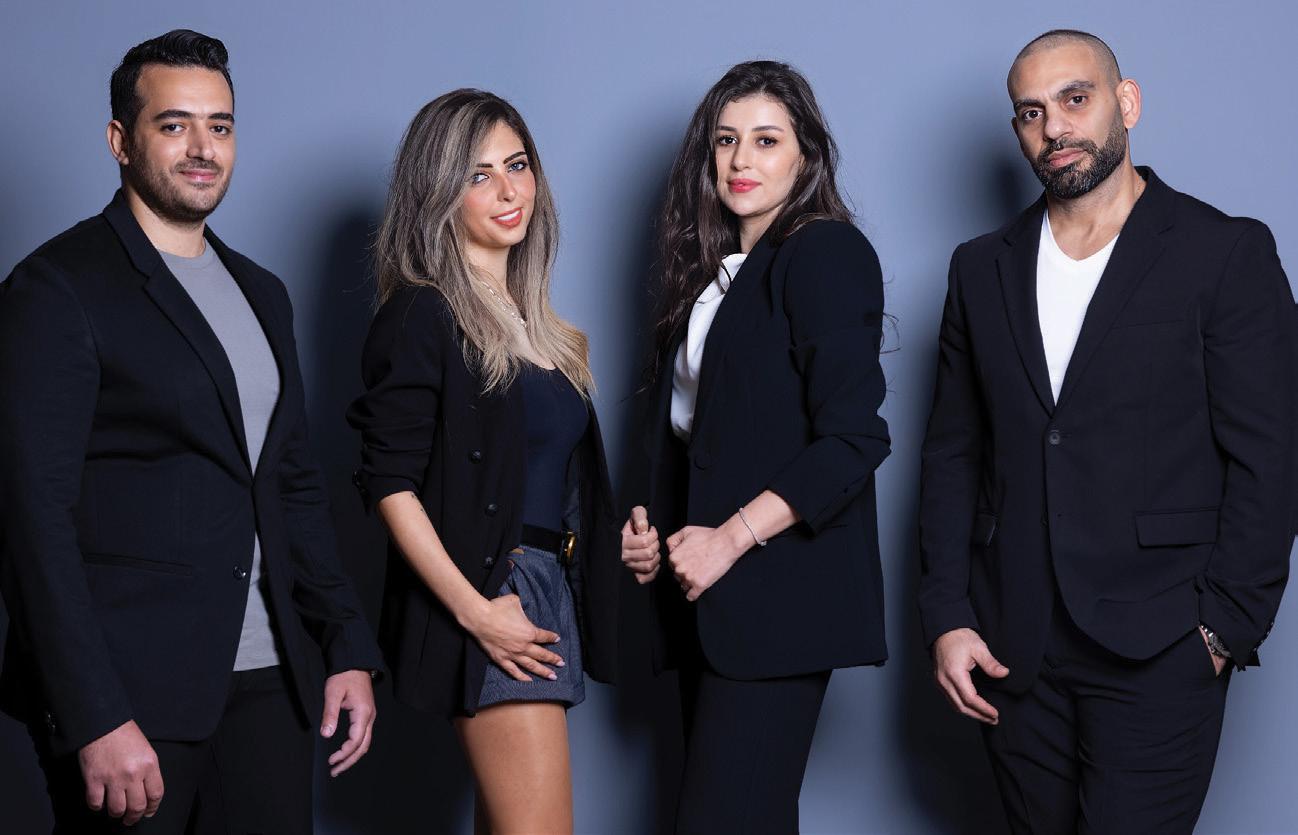
marketing campaigns and providing marketing services.
What are the key services you o er?
We o er unique marketing solutions such as public relations, events, exhibitions, content, social media, video graphic, production, websites, photography and videography, printings, giveaways and activations. Our services are quite diverse.
Digital transformation is a key aspect of business today. How are you leveraging it in your business?
We pride ourselves for being out-of-thebox creatives. We do not copy or imitate, but rather look for the unique elements in each client’s business lines and USPs to create the best campaign to help them shine in the market. Also, we are adapting to global best practices as industries and creatives started experimenting and using AI technology in content creation.
We think it's a great opportunity if managed properly to cut down production times and delivery to clients at a much faster pace.
What are some of the key advantages of being in a market such as Dubai?
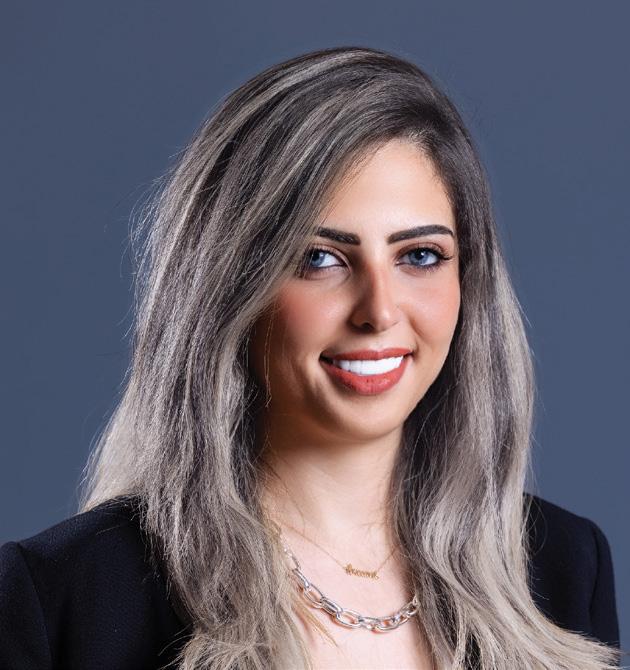
The competitive landscape in Dubai is more complex and diverse. We view this as a key opportunity to grow and put our experience to true test. Dubai is the cornerstone of international business in the MENA region, and for an agency such as Conceptual ERA, it is an opportunity to showcase its true potential when it comes to delivering marketing and advertising services to clients. We attribute our success to a dynamic and diverse market, supportive and adaptive legislation and a pool of clients who value true creativity.
Tell us about your cross-border work. We aimed for regional expansion and that’s what we are doing. We work across GCC countries such as Saudi Arabia and are launching our physical o ce soon in the kingdom.
What are some of the key clients you have worked?
We work with clients such Zoho, Gold’s Gym, World Health Organization, Magnom Properties, Freshworks, Sarwa Financial Holding, Soulotel Hotel Group, ManageEngine and Bank Audi, among others.
The UAE’s impending federal corporate tax regime, which was first announced on January 1 last year, amidst much speculation and uncertainty, is finally due to come into effect. But how will small and mediumsized enterprises (SMEs) be affected and how can you best position your company to handle these changes?
The UAE’s corporate tax, which applies to accounting periods beginning on or after June 1, has been set at a standard rate of 9 per cent and will be applied to all taxable business profits exceeding Dhs375,000. It applies to all businesses and commercial activities with a few exceptions. These include organisations involved in the extraction of natural resources, which will continue to be taxed according to decrees issued by the respective emirate, and free zones, which will remain exempt provided they do not carry out business on the mainland.
For small and medium-sized enterprises (SMEs), assessing the impact of the new corporate tax regime can be challenging due to the complexity and intricacies of the

law and the variability which is inherent in the income of many of these organisations. It will involve significant compliance and reporting requirements and may also entail operational and structural changes to manage effectively.
This article seeks to address the concerns SME owners may have about ensuring complete tax filings and accurately predicting their tax liability.

The first step to preparing for the new corporate tax regime is to gain an understanding of what your business requirements will be. There are several important questions at this stage that you should be looking to answer:
1. Does your business fall into one of the categories that are required to register?
2. What is your business’s accounting period?
3. What is the deadline for you to file a CT return?
4. How will CT affect your obligations
and liabilities to your clients/customers and suppliers?
5. What changes, if any, will you have to make to your business’s corporate structure to minimise liability?
6. What company training or new hires will be necessary to manage this new obligation?
7. What financial information and records will your business need to keep to ensure effective management and compliance?
This list is by no means exhaustive, but it is a useful starting point towards better understanding your company’s obligations and preparing your business ahead of time.
First and foremost, companies whose taxable income falls below the threshold of Dhs375,000 will be subject to a zero per cent rate. In addition to this, small businesses with revenue below a certain threshold will be eligible to claim, ‘small business relief’ and therefore be considered as having no taxable income. This will also mean that they have fewer compliance and reporting requirements to the Federal Tax Authority (FTA). The thresholds are determined by the Ministry of Finance (MoF) and more information on this can be found on their website.
The primary exemptions to the corporate tax regime are detailed below and will either receive an automatic exemption or will be required to apply to the FTA to prove this status.
Here’s how to ensure your firm is set to deal with the advent of UAE’s corporate tax from June 1COMMENT Lorenzo Jooris, CEO, Creative Zone
1. Any public institutions or UAE government departments
2. Wholly government-owned companies that carry out a mandated activity
3. Businesses involved in the extraction of UAE's natural resources
4. Entities that are established for public benefit
5. Invest funds (subject to meeting required conditions)
6. Public or private pension or social security funds (subject to meeting required conditions)
7. Entities that are fully owned and controlled by exempted organisations
The income of foreign branches will not be taxed directly but instead, it will be included in the taxable income of the parent company. The exception to this is if the branch profits are already subject to tax in the foreign jurisdiction, in which case exemption can be claimed.
Free zone companies fall within the scope of corporate tax and as such, are required to register and file tax returns. However, they will effectively have a zero per cent rate provided their income is generated from outside the UAE or from doing business with other free zone companies. If they are not found to be meeting these conditions, do not maintain adequate substance in the UAE, or are deriving income from business with mainland companies, they may lose this exemption and their entire income may then become liable for corporate tax.
If you are the owner of a free zone company, you may have to evaluate where your business generates most of its profits and whether it may be worthwhile setting up a mainland entity to handle a business that comes from other mainland companies to mitigate the risk of incurring excess corporate tax liability. Conversely, any mainland business that is dealing primarily with free zone organisations may want to consider the possibility of moving operations to a free zone to minimise their tax burden.
Other sources of income such as dividends and profit distributions are also exempt from CT provided there is a 5 per cent or greater participating interest in the capital or equity of the foreign entity and other conditions are met.
The CT will be charged on an annual basis based on your company’s accounting period. Most companies will have a tax period that runs from January 1 to December 31 – although this is not necessarily always the case.
A company’s taxable income is its net profit for the tax period after making any necessary adjustments for deductions or any applicable exempt income. These can include:
• Unrealised gains or losses
• Qualifying dividends and capital gains
• Income from inter-group billing and transfers
• Transferral of tax losses within a group
• Any other incentives or tax reliefs as specified by the MoF
You can register electronically through the FTA website, and this should be done before you file your first tax return. This is mandatory irrespective of your company’s operational status or whether your company’s business meets the minimum threshold for tax liability. Payment for any tax due must be made within nine months of the end of the relevant tax period.
Corporate tax is likely to result in higher costs for your business. This may mean that you need to consider raising the price of your services to meet these demands. However, this should always be balanced against the need to remain competitive in the market and to charge an amount that reasonably reflects the service you provide. You should also consider how your
tax obligations will impact your cash flow and financial resources since these are things that may affect your ability to pay your suppliers on time and fulfill your obligations to your customers. Ultimately, you need to find a way to manage your corporate tax obligations effectively whilst at the same time ensuring that your business maintains a good reputation and relationships with your clients and suppliers.
The new tax will undoubtedly place a burden on SMEs that don’t yet have an established in-house finance team to manage these obligations. Implementing an automated accounting system can help to handle the additional compliance and administrative requirements and could be a better option than the expense of hiring new members of staff and the time and resources that this would entail.
Outsourcing this function to a reputable corporate services provider is another option that can help in the interim while your company is adapting to the new compliance requirements and can alleviate the burden of having to manage this function in-house.
While the additional compliance and financial costs of the new tax regime may seem like an additional challenge to SMEs, it is ultimately a move that will benefit the UAE economy and by extension, businesses that operate within the country.
The revenues generated by the new regime can be reinvested into improving the services available to small companies in the country and other projects such as smart government initiatives that will make doing business in the UAE much simpler and more streamlined.
When taken in the context of tax systems in other developed economies, the 9 per cent rate also represents one of the lowest corporate tax rates globally and well below the average statutory rate of 23.37 per cent. This reflects the UAE’s desire to continue to make the country an attractive investment proposition while at the same time adhering to international standards and best practices.












